The 10 Types Of Tour Guides: Which One Will You Be?

Posted on Dec 11, 2022 at 09:12 PM
You’re about to embark on a new career. You’ve been doing research and found that many tour guide positions are available in cities worldwide. You love people and want to share your passion for your city, so it seems like a perfect fit!
So what do tour guides do? What kind of skills and training is needed? Let’s explore these questions and more.

What is a tour guide?
A tour guide is someone who leads a group on tour.
The term "tour guide" is also sometimes used to describe the person who leads a sightseeing tour of a historic building, site, city, or neighbourhood. A tour guide may be employed by a museum, historical society, or other organisation interested in preserving local history and culture.
Tour guides are often called "docents" or "those who show." In addition, they are sometimes called "tour directors" or "tourist escorts," but these terms also have other meanings.
Tour guides work primarily with tourists and visitors but may also work with locals interested in learning more about their city or town.
Tour guides can be found at museums, historical sites, and other locations that showcase unique elements of local culture. Some tour guides specialise in private individuals or specific groups, while others work with larger groups of tourists worldwide.
There are many steps to becoming a tourism guide; check out the 6 best steps to becoming a professional tour guide .

10 tour guide types, which one are you?
There are many kinds of tour guides around the world; some of the most popular categories of guides include:
1. The professional tour guide
The professional tour guide is the most common type of tour guide, and it's the primary type most people think of when thinking about a tour guide. It's usually a full-time job, but it can also be part-time or a side gig. They typically work with international tourists and are licensed international tourist guides.
2. The private tour guide
A private tour guide accompanies paying clients on tours for a fee but doesn't work full-time in the industry. Instead, they use their time off from work or school to make extra money by giving guided tours to tourists in their city or country. They can offer services based on their timetable as their managers.
3. The academic tour guide
This tour guide works at an educational institution such as a university or an art museum, giving tours to students, teachers, and other community members. Academic tour guides earn additional income by educating visitors and sales commissions on books, maps, and other merchandise sold during tours. They usually have an educational background, study galleries and cultural buildings, and are often fluent in many languages.
4. The freelance tour guide
A freelance traveller gives guided tours to tourists abroad on vacation or business trips. They're adventure lovers who love private cruises to nature and other places.
The most convenient thing about freelance operators is that they're their manager and director, have flexible hours, and can choose which client to take on.
5. The local tour guide
A local tour guide or escort works at a tourist attraction , such as an amusement park or zoo. They may also be employed by a travel agency that offers guided tours to visitors. Some local guides work independently and receive payment directly from their customers instead of through an employer.
6- The Traditional Guide:
The definitive guide is knowledgeable about the destination's history, culture, and sights and delivers a structured, fact-filled tour. They may use a microphone and headset to provide information to the group and incorporate interactive activities or demonstrations to engage the group.
7- The Cultural Guide:
The cultural guide focuses on the destination's traditions, customs, and way of life and provides an immersive experience for travellers. They may take the group to local markets, homes, or community events to give them a glimpse into the daily life of the people in the area.
8- The Adventure Guide:
The adventure guide leads active and physically challenging tours, such as hiking, biking, or kayaking. They are knowledgeable about the local terrain and wildlife and may provide instruction and equipment for the activities.
9- The Food and Drink Guide:
The food and drink guide focuses on the destination's local cuisine and beverage culture. They may take the group to local markets, restaurants, or farms to try the local specialities and learn about the ingredients and techniques used in the area.
10- The Local Guide:
The local guide is a native of the destination and provides travellers with a personalized and authentic experience. They may share their own stories, experiences, and the area's hidden gems and local secrets.
What kind of skills should a tour guide have?
Tour guides should have a lot of skills. They must have strong communication and social skills to communicate with the tourists and answer their questions about the city or country they visit.
Tour guides also need to be able to explain things clearly and precisely, so tourists understand what they are seeing. In addition, they should be friendly, helpful and easygoing because they will deal with many different people from different parts of the world.
They need to be organised, have good management skills and have an eye for detail to plan exciting and fun trips for everyone involved.
They should have good leadership skills because they will often entertain groups of people in busy cities or countries where a lot is happening at once.
Tour guides must be able to keep everyone together and make sure no one gets lost or separated from the group. To do this effectively, tour guides must be able to think quickly on their feet and come up with solutions if something goes wrong during the trip (like legal trouble or a mix-up with security systems)
If you’re interested in being a tour guide but don’t know where to start, here are some hospitality training courses in London .
Tourist guides play a particular part in every tourism experience ; they add their signature to the social aspect of getting to know a new region.
Related Articles
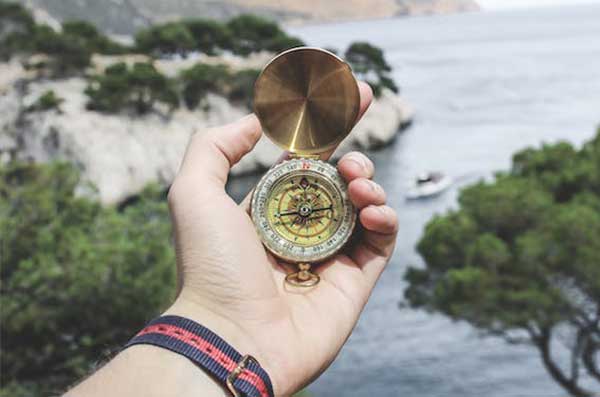
6 best steps to becoming a professional tour guide

Destination Management Is a Great Career. Here's Why

Exhibition Management: Tips For Planning Successful Exhibitions

9 Hospitality Ethics Every Professional Should Know
Related courses

Send Us A Message

Types of Tour Guides: A Comprehensive Guide for Beginners
- 2024-03-07 2024-03-07
Welcome to our beginner’s guide to the different types of tour guides! Whether you are planning to embark on a guided tour or considering a career in tourism, understanding the various types of tour guides can be immensely helpful. In this article, we will explore the main categories of tour guides and gain insights into their roles and responsibilities.
1. Local Tour Guides
Local tour guides are individuals who have an in-depth knowledge of a specific geographic area. They have a wealth of information about the local history, culture, and landmarks. These guides are ideal for exploring a city or region and can provide insider tips and recommendations.
Responsibilities of Local Tour Guides:
- Leading guided tours of specific landmarks, neighborhoods, or attractions
- Providing historical and cultural insights
- Assisting with language translation, if applicable
- Answering questions and providing recommendations
2. Adventure Tour Guides
Adventure tour guides are experts in outdoor activities and adventure sports. They lead groups on thrilling adventures such as hiking, kayaking, rock climbing, and more. These guides prioritize safety and possess specialized knowledge regarding the activities they offer.
Responsibilities of Adventure Tour Guides:
- Ensuring the safety of participants during outdoor activities
- Providing instruction and guidance on specific adventure sports
- Sharing information about the surrounding environment
- Preparing and maintaining equipment
3. Museum Tour Guides
If you find history and art fascinating, museum tour guides are the experts you need. They specialize in providing guided tours of museums, offering detailed insights into the exhibits, artists, and historical context. These guides possess a deep understanding of the artworks and artifacts on display.
Responsibilities of Museum Tour Guides:
- Conducting tours of museum exhibits
- Explaining the historical and cultural significance of artworks and artifacts
- Engaging visitors with interesting anecdotes and stories
- Addressing questions and encouraging discussion
4. Tour Directors
Tour directors, also known as tour managers or tour conductors, oversee the overall operations of a tour. They ensure that everything runs smoothly, from transportation and accommodation to scheduling and logistics. Tour directors are responsible for managing the itinerary and ensuring an enjoyable experience for the participants.
Responsibilities of Tour Directors:
- Coordinating transportation, accommodation, and meals during a tour
- Managing the itinerary and ensuring timely departures and arrivals
- Providing information about the destinations and attractions
- Resolving any issues or challenges that arise during the tour
5. Step-on Guides
Step-on guides are hired to assist tour companies or groups visiting a specific location. They provide local expertise and serve as guides while traveling on buses or other modes of transportation.
Responsibilities of Step-on Guides:
- Offering insights about local history and culture during transportation
- Pointing out landmarks and interesting sights along the way
- Coordinating with the driver and tour company
- Answering questions and enhancing the travel experience
No matter which type of tour guide you encounter or aspire to become, it is important to remember that their primary goal is to provide an engaging and enriching experience to their audience. Now that you are familiar with these different types of tour guides, you can choose the one that best suits your interests and embark on a memorable journey or even consider a career in the fascinating world of tourism.
We hope this article has been informative and valuable to you as a beginner. If you have any further questions or would like to share your own experiences with tour guides, feel free to leave a comment below!
Table of Contents
Related Posts
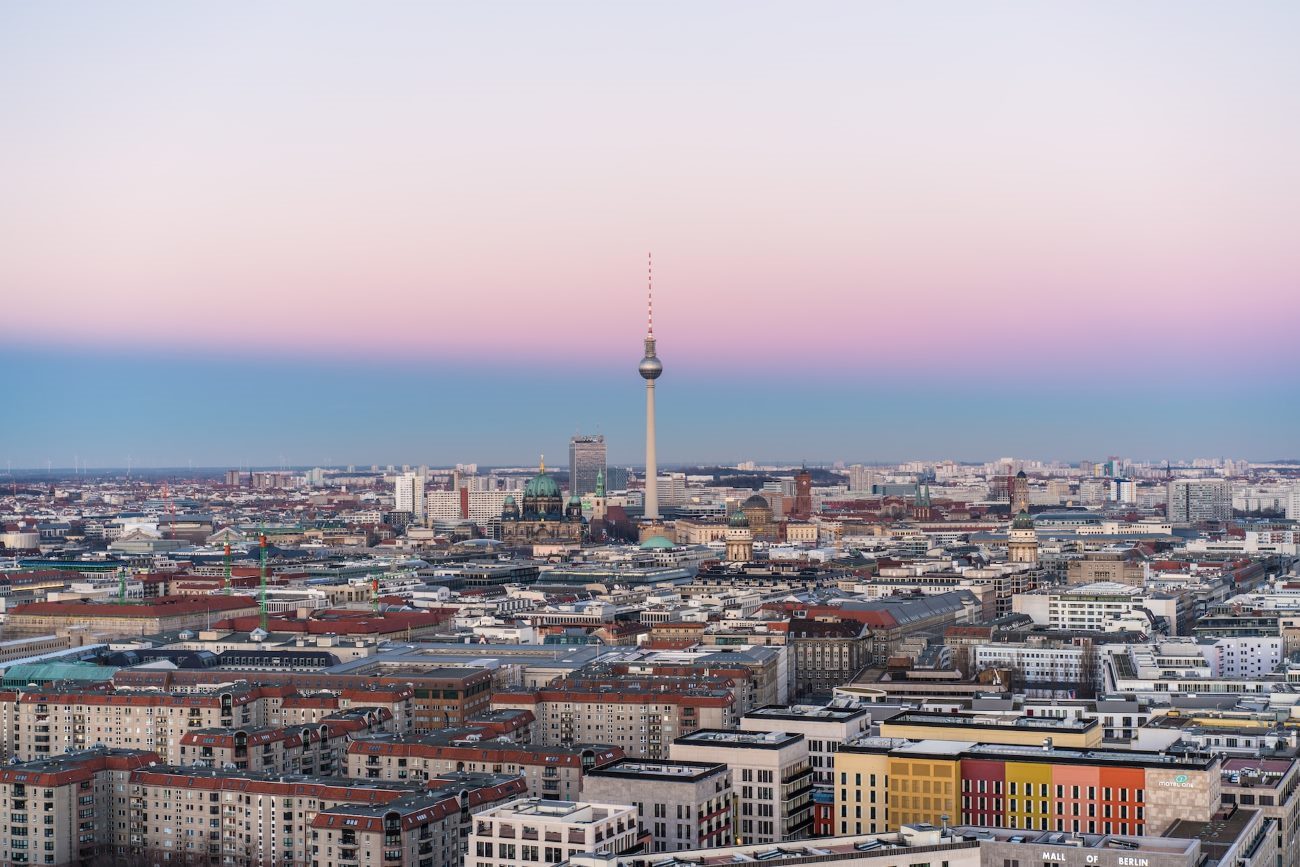
Duna Corso Budapest Sightseeing Boat: Explore the Beauty of Budapest from the Water
Budapest, the breathtaking capital of Hungary, is famous for its stunning architecture, rich history, and vibrant culture. One of the
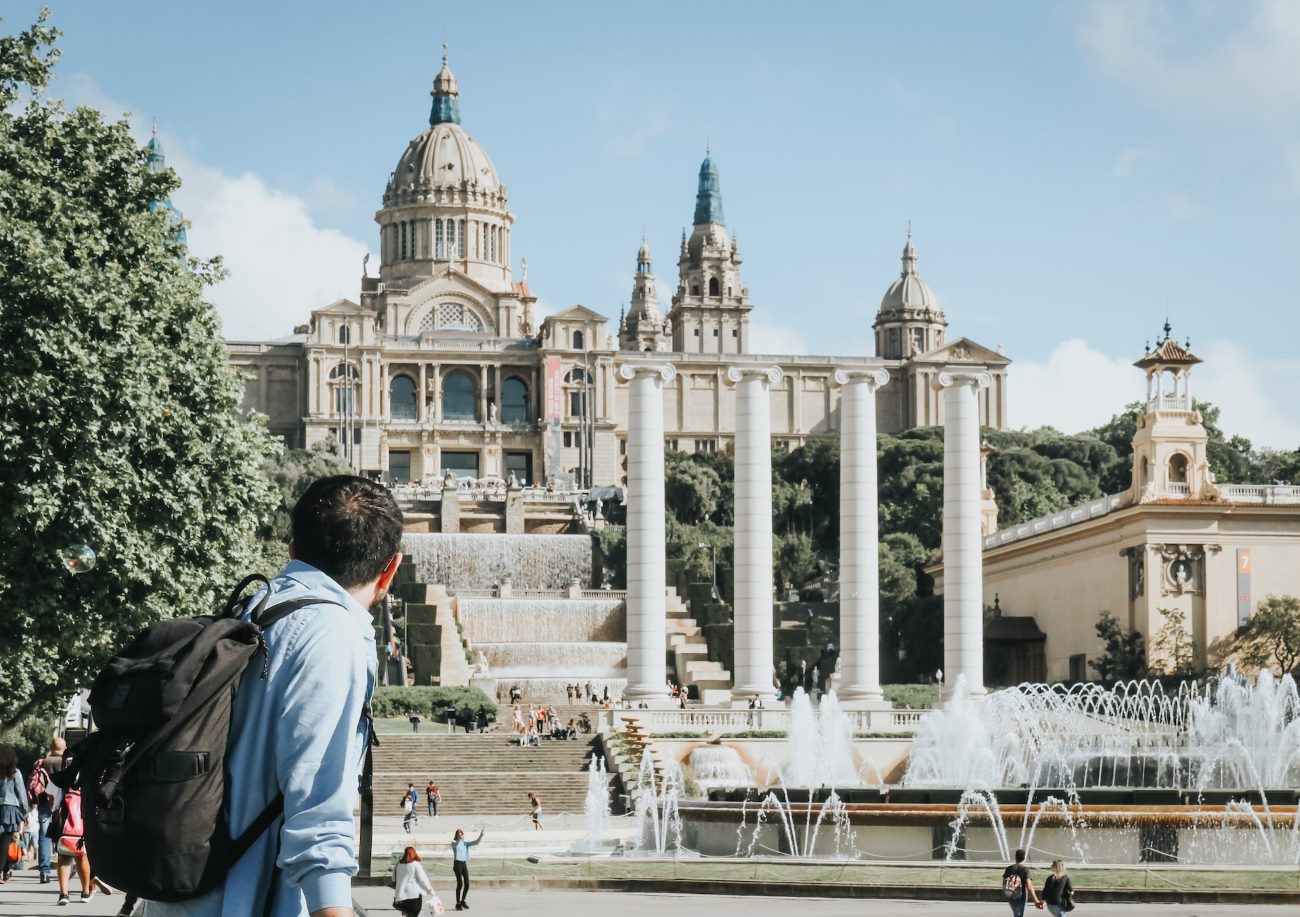
Fly Distance from City to City: A Comprehensive Guide for Beginners
Introduction to Fly Distance When planning a trip, whether for business or pleasure, it is essential to have an understanding
Leave a Reply Cancel reply
Your email address will not be published. Required fields are marked *
Save my name, email, and website in this browser for the next time I comment.
Check out our other cities
Berlin tours.
- Original Berlin Tours
- Berlin Pub Crawl
- Pub Crawl Berlin
- Free Berlin Tours
- More Berlin Tours
- Cold War Tour Berlin
- World War Tour Berlin
- Sachsenhausen Tour
Barcelona Tours
- Free Barcelona Tours
- Barcelona Pub Crawl
- Pub Crawl Barcelona
Budapest Tours
- Free Budapest Tours
- Budapest Bar Crawl
- Pub Crawl Budapest
Madrid Tours
- Madrid Pub Crawl
- Pub Crawl Madrid
- Nice Pub Crawl
- Nice Bar Crawl
- Pub Crawl Nice
Amsterdam Tours
- Amsterdam Pub Crawl
- Bar Crawl Amsterdam
Paris Tours
- Pub Crawl Paris
Dublin Tours
- Pub Crawl Dublin
Warsaw Tours
- Pub Crawl Warsaw
Stockholm Tours
- Pub Crawl Stockholm
Other Links
- Original Pub Crawls
- Be Original Tours
- Original Free Tours
- E-Ticket Trail

Your poweful AI Trip Planner
Types of Tour Guides: Exploring the Diversity
Welcome to PlanTrips.net, where we unravel the fascinating world of travel and adventure! In this blog post, we delve into the realm of tour guides and showcase the different types of tour guides you may …
Written by: Johny D.
Published on: July 7, 2023
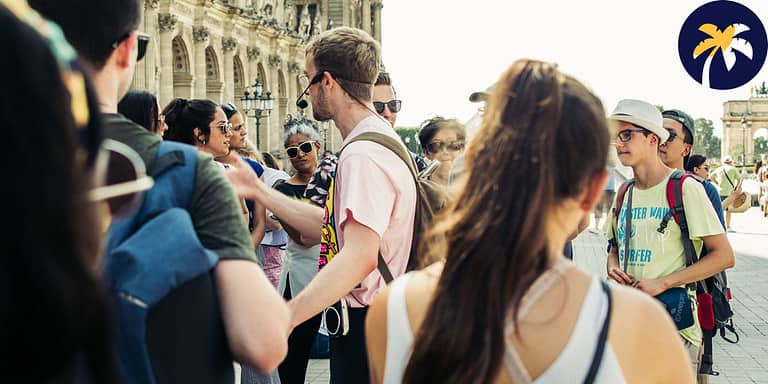
Welcome to PlanTrips.net , where we unravel the fascinating world of travel and adventure! In this blog post, we delve into the realm of tour guides and showcase the different types of tour guides you may encounter during your travels.
These knowledgeable individuals are dedicated to making your journey extraordinary, offering unique insights and captivating stories that breathe life into your destination. Join us as we embark on a journey through the different types of tour guides that cater to various interests and preferences.
Who Are Tour Guides?
Tour guides are individuals who provide guided tours and information to travelers and visitors at various destinations. They are experts in their respective fields, possessing knowledge about the history, culture, landmarks, attractions, and other relevant aspects of the places they guide visitors through. Tour guides play a crucial role in enhancing the travel experience by sharing insights, providing context, and creating memorable interactions with the destination.
To be effective in their role, tour guides typically possess excellent communication and interpersonal skills. They must be able to engage and connect with diverse groups of travelers, adapting their presentation style to cater to different audiences. They are responsible for conveying information in an engaging and informative manner, ensuring that visitors have a deeper understanding and appreciation of the places they visit.
Tour guides often undergo training and acquire the necessary qualifications to perform their duties. This may involve studying relevant subjects, obtaining certifications, and continuously updating their knowledge about the destinations they guide. Additionally, guides may possess additional skills such as language proficiency, first aid training, or specialized expertise in a particular area.

Types of Tour Guides
There are several types of tour guides, each catering to different interests and preferences. While the exact categorization may vary, here are some common types of tour guides:
1. City Guide: Unveiling Urban Treasures
When exploring a new city, there’s no better companion than a city guide. Whether on foot, bicycle, or bus, these guides possess an intimate knowledge of their urban domain.
They go beyond what guidebooks can provide, enriching your experience with insider information, local anecdotes, and lesser-known highlights. Immerse yourself in the culture, history, and vibrant atmosphere as your city guide brings the destination alive before your eyes.
2. Historical Guide: Stepping into the Past
For those with a penchant for history, a historical guide is an invaluable asset. These guides lead you to areas of historical importance, such as battle sites, Roman ruins, medieval cathedrals, and ancient structures.
By weaving together the stories of the past, they breathe vibrancy and liveliness into these historic sites. Delve into the larger context and uncover intriguing historical tidbits that shed light on the present.
3. Museum Curation Guide: Art and Artifacts
Come Alive Museums and art galleries become infinitely more captivating with a knowledgeable guide by your side. Museum curation guides are experts at providing background information on artifacts and artworks, curating the finest displays to fuel your curiosity and appreciation.
Their valuable insights and ability to answer questions transform your visit into an enlightening and immersive experience.
4. Nature Guide: Embracing the Great Outdoors
For nature enthusiasts and adventure seekers, a nature guide is the perfect companion. These guides specialize in leading groups through natural landscapes, sharing their knowledge of local wildlife, geology, and the prehistoric life that once thrived in the area.
Whether it’s a leisurely nature hike or an adrenaline-pumping adventure, these guides ensure an active and immersive experience, creating unforgettable memories in the great outdoors.
5. Specialized Guides: Unconventional Paths Await
Beyond the common types of tour guides, a world of specialized guiding awaits. This realm is particularly open to those who choose the freelance route. Specialized tour guides have found success by imparting knowledge on unique subjects and themes.
From afternoon tea tours and paranormal expeditions to crime and murder tours, pub crawls, and cemetery explorations, these guides cater to niche interests. Drawing inspiration from your city’s notable figures, history, and unique offerings, these tours ignite creativity and enable you to explore your passion in new and exciting ways.
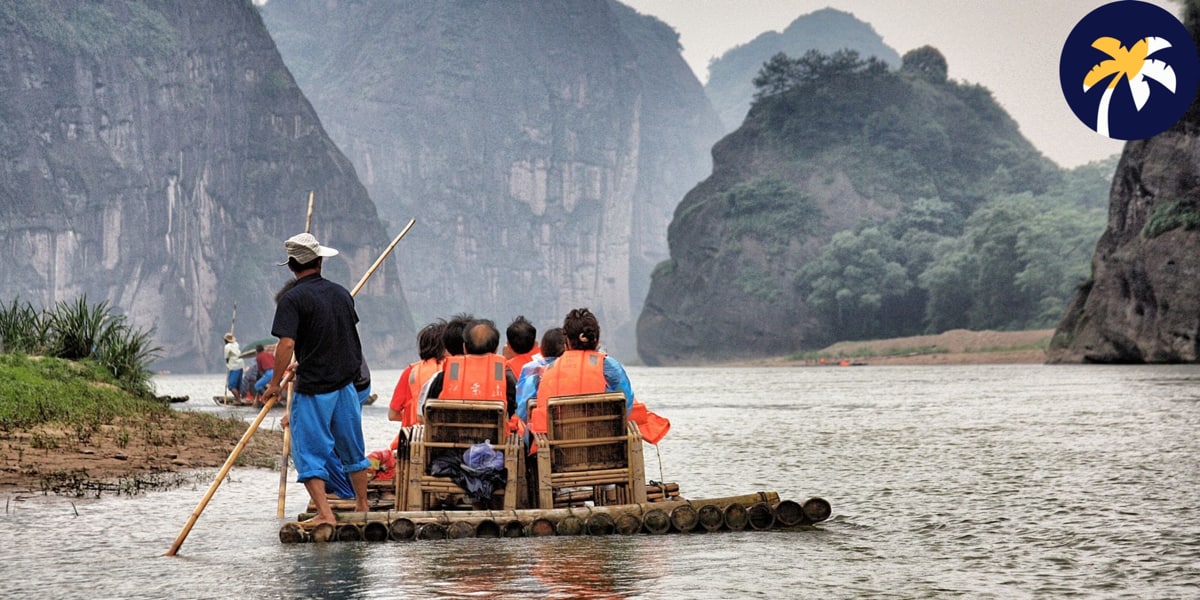
Some other types of tour guides:
- Adventure Guides: Adventure guides specialize in leading tours that involve outdoor activities and adventure sports such as hiking, kayaking, rock climbing, and more.
- Cultural Guides: Cultural guides focus on immersing visitors in the local traditions, customs, arts, and cuisine of a particular region or community.
- Wildlife Guides: These guides are knowledgeable about wildlife and lead tours to observe and learn about different animal species in their natural habitats.
- Archaeological Guides: Archaeological guides specialize in leading tours to ancient sites, explaining the history and significance of archaeological discoveries.
- Food and Culinary Guides: Food and culinary guides offer tours that focus on local gastronomy, taking visitors to iconic restaurants, markets, and food-related landmarks.
- Wine and Beverage Guides: Wine and beverage guides lead tours to vineyards, wineries, breweries, and distilleries, providing insights into the production processes and conducting tastings.
- Photography Guides: Photography guides accompany groups, offering guidance on capturing the best shots and highlighting picturesque locations.
- Art Guides: Art guides specialize in leading tours of museums, galleries, and public art installations, providing interpretation and insights into various artistic movements and works.
- Sustainable or Eco-tourism Guides: These guides focus on promoting responsible and sustainable tourism practices, highlighting eco-friendly destinations and activities.
Conclusion:
As you embark on your next adventure, keep in mind the multitude of tour guides available to enhance your travel experience. City guides, historical guides, museum curation guides, nature guides, and specialized guides each bring their own expertise and passion to the table.
Choose the type that resonates with your interests and embark on a journey that goes beyond the surface, unveiling hidden gems and weaving stories that will stay with you long after your trip ends. Happy exploring!
4 thoughts on “Types of Tour Guides: Exploring the Diversity”
- Pingback: Tour Guide: How To Find A Perfect One? | PlanTrips
- Pingback: Free Bio Page Mastery For Tour Guides Course | PlanTrips
- Pingback: Introducing The New PlanTrips Logo | PlanTrips
- Pingback: Tour Guide Certification: Knowledge and Trust | PlanTrips
Leave a Comment Cancel reply
Save my name, email, and website in this browser for the next time I comment.
About Johny D.
Argentina Travel Itinerary: Plan With PlanTrips
Free bio page mastery for tour guides course.
- Explore Courses
- Business of Fashion
- Early Years & Montessori
- Facilities Management
- Health Science
- Special Needs Assisting
- Knowledge Zone
- Corporate Training
- Meet the Team
- Success Stories
- Booking Info
- Full Time Enrolment
- Part Time Enrolment
- Protection for Learners
- Terms of Enrolment

Portobello Blog
What are the different types of tour guide.
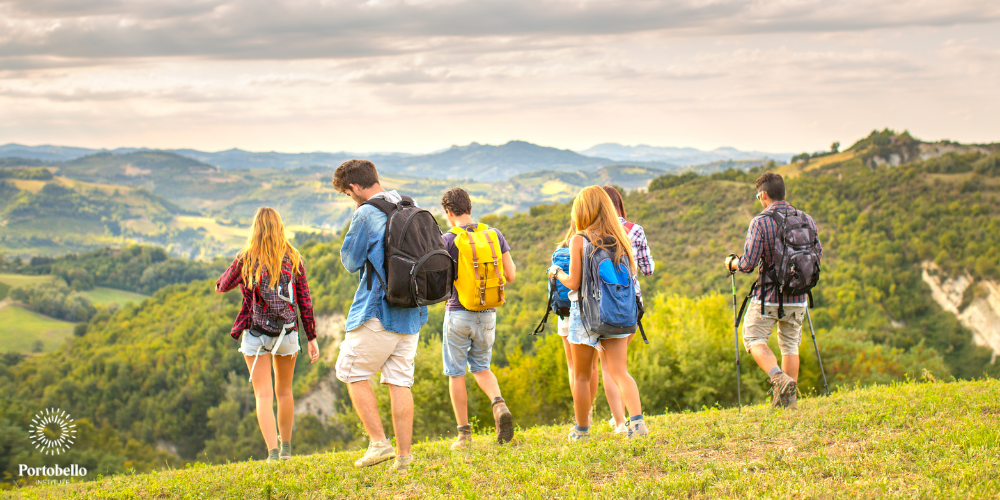
Embarking on a career as a tour guide is like unlocking a treasure chest of opportunities to share stories, unveil hidden gems, and create memorable experiences for eager travellers.
It's a profession that transcends the boundaries of traditional careers, offering a dynamic and captivating journey into the world of exploration and storytelling.
In this article, we'll delve into the diverse and exciting types of tour guides that make this profession not just a job but a thrilling adventure.
Historical Storytellers: The Time-Travel Guides
Ever dreamt of taking a stroll through history? Historical tour guides are the time-travellers of the tourism industry. They weave narratives that transport visitors back in time, breathing life into ancient monuments, historic streets, and legendary landmarks. As a historical storyteller, you get to be the bridge between the past and the present, sharing tales that captivate and educate.
Nature Navigators: Guiding Through the Great Outdoors
For those who have a passion for the great outdoors, becoming a nature guide is an exciting choice. Whether leading hikes through lush forests, exploring serene national parks, or conducting wildlife safaris, nature guides are the custodians of our planet's natural wonders. It's a chance to connect people with the beauty of the Earth, fostering a deep appreciation for the environment.
Urban Explorers: Navigating Cityscapes with City Guides
City guides are urban adventurers, navigating bustling streets and vibrant neighbourhoods with a contagious enthusiasm for city life. From historical city tours to culinary escapades, these guides unravel the unique stories, flavours, and cultures that define each city. Becoming a city guide means showcasing the heartbeat of a metropolis, making every tour an urban exploration.
Art Aficionados: Guiding Through Cultural Masterpieces
If you have an art appreciation, becoming an art guide allows you to share your passion with others. Guiding through museums, galleries, and cultural exhibitions, art guides unveil the beauty and significance of masterpieces. It's an opportunity to ignite a love for creativity and contribute to the cultural enrichment of your audience.
Adventure Architects: Crafting Thrilling Experiences
Adventure guides are the architects of excitement, curating thrilling experiences for adrenaline-seeking travellers. From leading white-water rafting trips to organising mountain treks, these guides infuse the spirit of adventure into every journey. Becoming an adventure guide means transforming vacations into exhilarating escapades.
Culinary Connoisseurs: Guiding Through Gastronomic Delights:
Foodies unite! Culinary guides lead travellers on delectable journeys through the world of flavours. From street food markets to gourmet restaurants, these guides are the connoisseurs of local cuisine. Becoming a culinary guide means indulging in the joy of sharing culinary secrets and turning every meal into a memorable experience.
Becoming a tour guide is not just a job; it's an invitation to be a storyteller, an explorer, and a curator of unforgettable experiences.
Whether you're unravelling the mysteries of history, navigating the wonders of nature, or savouring the richness of different cultures, each type of tour guide contributes to the tapestry of travel.
So, if you're ready for a career that combines passion with profession, consider the opportunities waiting for you as a tour guide – where every day is a new adventure!
If you are interested in a recognised Tour Guide qualification, or have any questions you can book a consultation call with our expert advisor Brandon McLean, email [email protected] or call 01 892 0035 .
You may also like...

What are the Essential Skills for Tour Guides?

Diverse Opportunities within a PE Teaching Career

What are the duties and responsibilities of a Tour Guide?
Portobello insider.
Join our mailing list to receive the latest insights and exclusive content from your chosen department of interest
© 2020 Portobello Institute | Powered by Wurkhouse
404 Not found

5 Different Types of Travel Guides & How to Create Them

Travel guides are awesome and the people who make these are the same. It takes a lot of talent, a lot of passion and love to make a very good travel guide.
People think that making a travel guide is easy to make, but the reality is different. It is easy to purchase a ticket and book a place to stay somewhere in the world but writing and conjuring the things you saw and felt takes some talent and some skill. Some of you will argue that the travel guides or those who write them are not all professional writers, and you would be right. But what you don’t know is that these people have other skills that make them so successful.
Writers must have fundamental writing skills, and everything beyond that is pure heart and passion. This is why some travel books are superior to others. Some authors are better than others, which is why we will discuss the many sorts of travel guides and how to effectively create them today. If you want to learn everything there is to know about something and get a decent trip guide, here is the place to go.
1. Particular destination

These are probably the most famous travel guides out there. You see them all the time and these are tied to a particular destination , a whole country, city or a small town. These are usually written in a way to make you want to go there and visit with some explanation on what you may find there and what you may see during your trip. If you want things a bit simplified, this is your general travel guide, without many details that describe the ways and means to get to a certain place, with some broad information about things you might want to see and experience. In these types of guides, you can also find info regarding pricing, weather, locations of best hotels, foods and bars, and all of that, again, without much going into details.
2. Special interests
These travel guides are specific in a way that they will hold on to one particular interest and go in-depth regarding it. When it comes to travel interests, they are all different and you can choose interests like food, art, history, animals and pets and so on. It is a travel guide that is very narrow and that will appeal only to certain people. A few examples of such travel guides are the ones regarding food. There are plenty of those around in both written and vlog form. You go around the world looking for the best, exotic and maybe a bit risky types of food and you either video these or write about them. Another example is history or artefact hunting travel guides. Following the history of our world, you can easily make a travel guide focus on historic places, battles, monuments and other things or you can take that as an artefact hunting one as well. Other examples would include travel guides that are about animals with exotic pets or exotic wildlife in question and where and how to find them.
3. Financial guides

Most individuals avoid traveling owing to various constraints, and one of the most significant constraints, aside from the latest epidemic, is money or financials. A travel guide that showcases all of the places that are affordable or cheap is the one that is swiftly breaking through in all regions of the world. No matter who you are or how much money you have, you will always be interested in a new, cheaper place. These travel suggestions are also geared toward families, with longer stays at reasonable costs and destinations that are family and kid-friendly. There are several places in these that feature things like theme parks, aqua parks, circus acts, and other such things. These authors frequently describe hotels, pubs, and grills in great detail so that you know what kind of price you can anticipate and where you can get it.
4. Narrative guides
This is a travel guide with a tale attached, as the name implies. It is a trip guide to a certain location that covers everything from the time the writer decides to go until they return home. These are regarded story guides and are frequently quite engaging. The audience reading or viewing this sort of travel guide wants to see everything from fuss and troubles at the airport to issues with the lodging, which is why demand in these guides is rising. They want to witness and note all of the obstacles, or lack thereof, along the route in case they have the same experience. The standard travel guides are OK and fine, but there is something to detail regarding the preparation, the trip, the rental services and all other things you as the one that will go there might experience for yourself.
5. Side trips
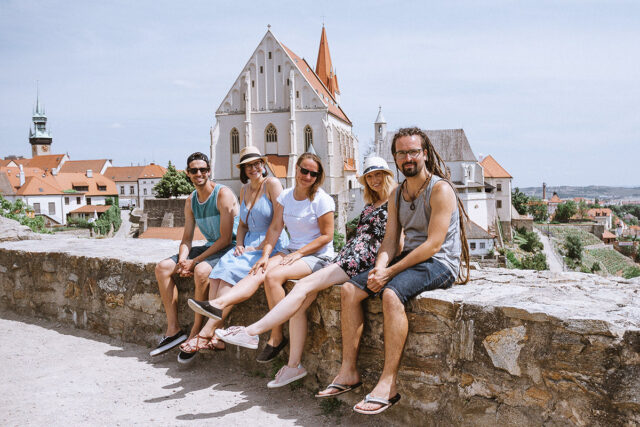
Another excellent travel guide that is gaining popularity. Most of us plan a large trip and intend to visit a popular main location. A side trip travel guide provides you with a side place to visit if you become weary of huge cities or popular tourist spots . We all want to see some bustle, lights, music, and a sea of people, but after a day or two, most of us become weary of it. This is where these side trip guides come in, since they advise you about a spot nearby or within driving distance that you can visit for a whole day and have fun. See something you haven’t planned or visit a place you otherwise never would.
As you can see there are several types of travel guides and which one you chose is totally up to you and your audience. You may write for a certain niche you may write for everyone, whatever fits into your passion and your selected audience will be the guide you should pick and focus on. This will ensure that you make the best and most viewed or read out there. Best of luck and safe travels!
RELATED ARTICLES MORE FROM AUTHOR

The Best Hotels for Music Lovers in the US

Cruise and Dine: Adelaide’s River and Harbour Experience

Dive into Paradise: Exploring the Best Diving Spots in the Philippines

When Is the Best Time to Visit Barcelona? Your Ultimate 2024 Guide
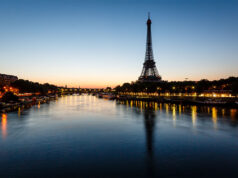
Paris after Dark: 5 Things to Experience at Night in Paris

Budget-Friendly Parking Alternatives Near LGA: How to Save on Your Trip

EVEN MORE NEWS

Navigating the Future: How Technology Transforms the Cruise Experience

How to Spring Clean a Kitchen – the Ultimate Checklist?

Creating an Eco-Friendly Garden
Popular category.
- Releases 1730
- Features 431
- Previews 416
- Free Downloads 400
- Business 360
Privacy Policy - Terms and Conditions
- Skip to main content
- Skip to header right navigation
- Skip to site footer

Albom Adventures
Capturing the essence of travel through photography
Inspiring travel through photography
7 Types of Tours and Guidelines for Organizing Each of These

Not every traveller would accept with pleasure an invitation to wander around the city for hours. There’s no sense in persuading or making him change his mind: there are also other tours to do instead of sightseeing ones.
Someone is happy to go to the mountains or to the sea, the other one will choose wine or sweets tasting, and the third one has his wedding at hand, so he can conveniently time the event to coincide with the trip. How to organize well different kinds of travel:
7 Types of tours and guidelines for organizing each of these
For some people taking rest means conquering mountain peaks. Somebody would not exchange the sun’s rays for a frosty wind, while others need only extreme. That is why travel companies offer customers different types of tours for every taste and budget.
What may prevent a private guide from doing the same and organizing for the traveller a wine-tasting excursion program in the best cellars of France or an outlets shopping instead of a usual tour?
7 Kinds of tours that you can offer the traveller
1. Traditional excursion tour Dynamic, rich, full of new knowledge and experiences, this can be a hike on any route, regardless of the country or location, if you add to your narration some appropriate jokes, interesting facts and good mood. With 30-40 people under the guidance of one guide with a loudspeaker you really won´t be able to take a rest.

2. Mountain skiing tour Why not accompany tourists who want to conquer mountain peaks? Especially if you have something to tell them about the exotic traditions of the local people, the history of a cliff, or how “on that hill” a famous movie was shot.
The main thing going by this route is to explore it inside and out so that customers feel secure and able to safely enjoy its beauty without fear of taking the wrong road.
3. Shopping tour Spending money wisely is also a great skill. That’s why the services of a person with information about the places of sales, product range and discounts are very much appreciated. Examine all the available commercial facilities of your or neighbouring regions, and make a route based on customer’s budget and requests.

4. Sport and extreme tour If the traveller prefers some unusual pastime and its adrenaline rush instead of hiking, offer him conquering the desert or the depths of the sea, go windsurfing, kite surfing, or parachuting. The customer will be grateful to you if you save him from having to search for equipment rental centres or jumpmaster contact information. So get a list of useful addresses and simply accompany him, not forgetting to give him a good mood on the way!
5. Pilgrimage If a person underreacts to all suggestions and comes to life only hearing the words “temple”, “Mecca” or “Islam”, you can organize a trip to the holy places, for example, in the Egyptian monastery of St. Catherine or religious monuments in Cairo. One small thing is missing: developing a route, helping to buy tickets, and exploring the attractions to be visited. This service performed by a private guide is rather of the exclusive services category and therefore has its respective price.

6. Gastronomic tour Such a trip would captivate people of all ages due to its interactive elements. Who would not want to try the traditional Camembert and Calvados in Normandy, to take part in the creation of homemade pasta in Florence, taste port wine in Portugal cellars, or cook delicious truffles in the Belgian Museum of Chocolate?
In London, tourists can even pass a one-day course in a prestigious cooking school. Just in a few hours, they could learn to cook a stuffed leg of lamb and mint mousse, a port wine gravy and puff pastries with Chantilly cream.
7. Wedding tour What it will be, an exotic island, extreme climbing, wine resort, or mysterious Barcelona, is up to the bride and groom. The guide’s task is to organize everything, including the transfer of guests, limousine, cake and live music, as to make the couple recommend him many times as a true professional.

Be the vacation ever so cool in your dream, wherever this corner of paradise may be, and no matter how unrealistic plans may seem, believe those are achievable! Especially if it is made by a private guide, one of those who posted their portfolio at the Private Guides site. Do not be afraid to dream, and people of this creative professionals will help you to realize your plans!
Save on your trip with these resources
These are our go-to companies when we travel. We believe this list to be the best in each category. You can’t go wrong using them on your trip too.
- Flights: we use Expedia for the best and cheapest flight options.
- Accommodations: we use Booking.com (hotels), VRBO (self-contained), or Hostelworld (budget).
- Cars (gas or electric): we use RentalCars to search for deals and dealer ratings.
- Motorcycles : we have heard good things about BikesBooking .
- Campervans or Motorhomes : we use Campstar where Albom Adventures readers get a 3% discount.
- Private guides : we love the private guides at Tours by Locals .
- Travel Insurance: while not required, we always opt for travel insurance and start at InsureMyTrip to compare coverage plans.
Check out our travel resources page for more companies that we use when you travel.
What is your favourite type of tour? Will you use a private guide?
Photo Credits: All photos supplied by pg.world.
You might also like:
- Singapore Travel Guide for First-Time Visitors
- Visit Uruguay: Travel Guide for First-Time Visitors
- Rarotonga Travel Guide: What You Need to Know Before You Visit
- New Zealand Travel Tips for First-Time Visitors
- Argentina Travel Tips: A Guide for First-Time Visitors
Disclaimer: This article was written by Private Guide . Occasionally we share articles that match the editorial content but cover specific topics or areas with which we are less familiar. Compensation in the form of payment or product is often received, and these articles are identified as sponsored or collaborative efforts.
About Albom Adventures Editorial Team
Albom Adventures’ editorial team consists of travel bloggers and other travel writers who periodically provide content to this blog. If would like to join our editorial team, please send us an email via the information on our contact page .
Reader Interactions
Nicholas Farnsworth
June 19, 2016 at 12:01 pm
2 and 4 for me. I want the extreme.
Rhonda Albom
June 20, 2016 at 12:41 pm
Skiing was always a favorite of my girls.
June 19, 2016 at 11:13 am
Plenty of useful information here for my next travels.
June 20, 2016 at 12:38 pm
Enjoy your travels.
June 17, 2016 at 12:10 pm
I did guided tours before. They are great.
June 18, 2016 at 11:07 am
Glad you had good experiences.
June 17, 2016 at 8:35 am
The guide will establish how easy it is for the traveler to have what they want.
June 18, 2016 at 11:08 am
Yes, and our guest author gave us lots of options to help the traveler.
June 15, 2016 at 2:32 pm
Interesting post! I’d be most interested in the sports type of tour just because I’m very active, but the first type also appeals. I love the rich amount of history and narration you can get from a private/personal tour!
June 15, 2016 at 5:34 pm
I am also a big fan of learning the history of a place as we travel.
June 14, 2016 at 6:11 pm
I’m not a big fan of organized tours except if the place I’m going to visit is very historical. Other than that, I do prefer to go on my own. :p
June 14, 2016 at 10:43 pm
I find that tour guides often share interesting historical information even at sights that aren’t though of as historic sites.
Amila @Leisure and Me
June 14, 2016 at 1:44 pm
It is really nice to read about tips on arranging each type of tours.Private guided tours are really exciting specially when we are in a destination which we don’t know much.We have experience with guides in historical places,but I always prefer to have a small group such as 5-10,so we can talk with the guide about doubts.I also like pilgrimage,specially we arrange such trips with parents when we are in Sri Lanka.And finally,shopping tours are my favourite! 🙂
June 14, 2016 at 10:34 pm
We also travel in a variety of ways, sometimes on tours, sometimes with guides, and often on our own. While I love walking and food tours, I have never been on a shopping tour. I have a teen that I am sure would love to go.
Leave a Reply Cancel reply
Your email address will not be published. Required fields are marked *
Save my name, email, and website in this browser for the next time I comment.
This site uses Akismet to reduce spam. Learn how your comment data is processed .
Privacy Overview
Sie verwenden einen veralteten Internet-Browser. Bitte laden Sie sich eine aktuelle Version von browsehappy.com um die Seite fehlerfrei zu verwenden.
How to create an Online Travel Guide
Helpful tips to understanding and writing various types of travel guides
The Different Types of Travel Guides
The goal of every travel guide is to help potential travelers prepare for their journey and have the best possible trip. A travel guide should be informative, but it can also be interesting or inspiring. Take a closer look at some of the most common types of travel guides as well as the benefits of each.

Destination Travel Guide
A destination travel guide is just what the name suggests: a travel guide that revolves around a specific destination. These guides can cover an entire country, but they can also focus on a specific city or even a small town. A destination travel guide should entice someone to visit that destination, and it should provide readers with specifics about that spot.
A destination travel guide might start by detailing the destination and explaining where it is located or how travelers can get there. Then, it should focus on the main reasons to visit the area. Readers might want to know what the main attractions in the destination are and whether they would appeal to budget travelers, outdoor enthusiasts or sports fans.
A destination guide might also focus on ways to make the most of a trip to that destination . For example, your guide could include details on how expensive the destination is or where the most popular hotels are located. Information about weather, security and transportation are all welcome in a destination guide.

Special Interest Travel Guide
While a destination guide focuses on a specific area and includes as much detail as possible, a special interest travel guide is far more focused. This is a type of niche writing, and it is designed to appeal to a specific demographic. Ultimately, the special interest you focus on is up to you. Some ideas include cuisine, history, architecture, fitness or pets.
Food is a major focus for special interest travel articles. People from around the world love to eat, and travel is often a great way to explore new cuisines and dig into new dishes. A culinary travel guide could include details on up-and-coming restaurants, Michelin-starred eateries and food vendors that tourists wouldn’t typically visit.
Other special interest guides may focus on a specific interest like history, art or architecture. If travelers are heading to Palm Springs specifically for the mid-century modern architecture, what buildings should they visit? If they are in New York City and love history, which museums are the most impressive?
A travel blog might also put an emphasis on pet-friendly travel. There are 77 million pet dogs and 85 million pet cats in the United States, and many of them travel with their owners. Highlighting which hotels, restaurants and attractions are pet-friendly can be valuable to a lot of readers.

Financial Travel Guide
One of the most common reasons why people avoid travel is cost. At the same time, many prospective travelers are eagerly searching for ways to travel more while spending less. For that reason, lots of travel guides specifically focus on the costs related to travel. Many more give readers tips on how to reduce expenses on upcoming trips.
Sometimes, readers just want information. A person who is planning a trip to Europe might want to know the average hotel costs in Paris or whether a hostel in Berlin is affordable. Financial travel guides that offer specific costs for accommodation, transport, food and attractions are incredibly useful.
Another type of financial travel guide will suggest ways to keep costs low on upcoming trips. It may include lists of affordable hostels, discounts on train travel or cheap and accessible grocery stores located in major cities.

Narrative Travel Guide
A narrative travel guide is the story of a singular travel experience. This type of travel blog can be any length, and it can detail any number of experiences. While a narrative travel guide can absolutely be educational, it is also designed to transport readers to a new destination.
A narrative travel guide might tell the story of a family that heads to Asia for an extended trip with young children. The unique challenges of this trip and the events along the way are woven together to become a cohesive narrative. This might inspire readers to take their own journey with children.
Stories can revolve around travel in off-the-beaten-path locations, or it can be an emotional journey. Narratives can discuss exploring a single city over a long weekend, or they can detail a year-long trek through Europe. These articles are less likely to include bullet points since they are more likely to read like short stories.

Side Trip Travel Guide
Many travelers will plan their getaway by booking a flight to a major destination. Their journey may take them to a bustling metropolis like London, New York or Hong Kong. These thrilling cities have a lot to offer, and a standard destination guide can certainly offer plenty of options. However, many visitors want to get away from these hubs and see something a little different for a day or two. That’s why side trip travel guides are growing increasingly popular.
A side trip travel guide can suggest and detail one or more choices for an escape from the main attraction. Visitors to London, for example, could plan a side trip to Brighton for the day. Those who travel to Berlin might take the train to Hamburg to see something new, and visitors to Orlando could see what Tampa has to offer. Offering advice on how to arrange transport for these trips, how long travelers should spend in each destination and the top attractions to include on an itinerary are all great additions to a side trip travel guide.
Need help creating unique, high-quality content for you next travel guide?
Join over 53,000 customers worldwide and use Textbroker to help you find the perfect content to excite your travel audience
Free Client Registration!
How to Create The Perfect Online Travel Guide
Putting together a travel guide can be exciting, but it also takes a lot of work. Since there are so many different types of travel articles out there, it is important to stand out. Offering something unique gives readers a reason to gravitate toward your travel guide above all others. Here are some of the best tips to keep in mind as you create your travel guide.
Decide on the Type of Travel Guide You Want to Write
- Destination travel guide
- Special interest travel guide
- Financial travel guide
- Narrative travel guide
- Side trip travel guide

How to Write a Travel Blog
To know how to write a travel blog, you first need to know what kind of blog you’re writing. Then, you can put together an outline. A destination travel guide might have separate headings pertaining to attractions, accommodations and transport. A narrative travel guide might not have headings at all, and it may be a story told in the first person. Understanding the format of your article will help as you flesh it out and create something that others will truly want to read and share.
Pick an Angle for Your Travel Content
The next step in writing your travel guide is deciding on an angle. This means thinking carefully about who you want to read your work. Although it might be nice to imagine that anyone can find value in a travel guide, the reality is that targeting a specific demographic can have better results .
Think of your target audience. Imagine what kinds of people are in that group. This is known as putting together a buyer persona. As you write the travel guide, try to appeal to this specific kind of person.
If you’re writing to young professionals without children, you’ll want to include lists of higher-end hotels and great nightlife options. If you’re writing to retirees, then off-season trips with a more relaxed pace could be a better option. Targeting your audience in every sentence ensures that the right readers gain value from the final product.

Be Sure to Include Graphics
Travel guides can be formatted in a number of different ways. However, there are some best practices that will make your content easier to read online. Keep your paragraphs short so that readers can skim through content and find the information most relevant to them. If possible, include bullet points or lists to streamline the content. Adding hyperlinks can direct readers to sources for further information. Above all else, aim to include graphics .
Graphics can break up the content and make your travel guide more visually appealing. Travel is a very visual topic. When individuals plan their trips, they want to see the places they will be visiting, admire the hotel rooms where they might be staying and drool over the food served in the region.
If your travel guide is more informative, adding in charts or infographics might be a smart idea. Visual elements of all varieties keep content interesting and appealing, which in turn keeps more readers on the page for longer.

Invoke All the Senses
In even the most educational of travel guides, your travel content should tell a story. Whether you’re detailing the cheapest ways to visit Boston or you’re encouraging people to take a day trip to Macau from Hong Kong, your content should inspire them. As you read the guide, does it make you want to hop on the next flight? One way to make your travel guide pop is to invoke all the senses.

This simply means describing the environment using all the senses. How does the air smell while hiking in the Alps? What do you hear while sailing on a gulet boat in Turkey? What does it feel like to cross the busy streets of Tokyo? Some examples of invoking the senses in travel writing can include the following:
• Nothing compared to the sweet taste of the beignets and the bitterness of the chicory coffee. • The chatter of multiple languages swirled around the confines of the train car. • From the lookout point, I could see over the Welsh border and into England. • I followed my nose to the delightful savory smells of the local kebab shop. • The wind picked up as we headed south, and cool raindrops fell onto my bare arms.
All of this language can help readers feel like they are there with you. It turns an ordinary blog post into a guide packed with inspiration and excitement.

Don’t Forget About SEO!
Travel articles should be written with your intended audience in mind. Nonetheless, it is critical to think about how your travel guide will be found. There are three main ways for readers to access content: direct, search and social media. You can send links to your content to email subscribers, and you can post links to your travel guides on your various social media platforms. The third element, search, requires individuals to search for specific terms online, find your content and click on it from the search engine results page.
To appear on that first search engine results page, or SERP, your content should be written with search engine optimization in mind. First and foremost, that means creating high-quality content with the end user in mind. It should be engaging, relevant and optimized to include appropriate keywords (without unnatural keyword stuffing), meta tags and back-end SEO modifications. This will ensure that more people can find your content when they use search engines like Google, Yahoo or Bing.
Keys to Publishing and Promoting Travel Guides
Once your travel guides have been written, it is time to get them in front of readers. Travel guides can’t be effective until they have been read! In today’s world, publishing travel guides typically means digital publishing, which means the content can be viewed on websites and blogs. Promoting this content is key in order to increase traffic, build your reputation and convert readers into subscribers or customers.
Decide Where and How to Publish Your Travel Guides
Often, individuals and businesses who are putting together travel guides already have an idea of where they will be published. Travel guides are a natural fit on a website, and they are also featured on many private and commercial blogs . However, there are still some publishing decisions you’ll need to make.
Some travel guides can be published as single reads. On the other hand, some are so long that they will need to be broken up into manageable segments. This might be a great time to introduce a blog series. You can publish a new blog entry every day or every week, depending on your publishing schedule.
If you have a collection of related travel guides, it might make sense to offer them as a single e-book. An e-book can be sold at a profit, but it can also be offered to individuals who subscribe to email marketing campaigns or who download from your website. An e-book can be a fantastic way to use content more than once and to draw in more traffic, gather email addresses and build your contact list.
Share Your Travel Guides on Social Media
Social media is one of the best strategies to promote your travel guides. Sometimes, businesses fumble with deciding which platform to use. The reality is that if you already have thriving social media platforms, then the ones you have are the best ones to use! The key is connecting with your audience by whatever means possible.
For some companies, a younger audience means utilizing visual social media platforms like Instagram or Snapchat. You might post fantastic photos of your destination along with a link that leads directly to a related travel guide. You can also share links to your travel guides on Facebook, LinkedIn, Twitter, Reddit or Google+.
Include Snippets or Full Articles in Marketing Emails
An ideal way to share and promote your travel blog is through email. If you have a contact list made up of inquiries, current customers and past clients, then you’re already halfway there. Crafting an email marketing campaign just means getting your content in more inboxes.
Your marketing emails can include all kinds of topics, but travel articles might be a natural fit. If the travel guide in question is relatively short, you could email the entire version to readers. If it is longer, or if you want more direct traffic to the website, include just a snippet of the text. If readers want to see more, they can follow your links and head to your main page.
A valuable tool in the online travel industry is a subscriber list. This is a group of individuals who have opted in to your emails in order to learn more or snag deals. Be sure not to abuse this subscriber list and to respect those who unsubscribe. When used appropriately, email campaigns can be a fantastic way to increase traffic and brand awareness.
Consider Advertising in Order to Reach a Wider Audience
Ideally, you would be able to promote your travel content without paying a penny. If you want to get even more eyes on your travel guides, however, it may be worth paying for advertising . There are a lot of paid advertising options available, and you can advertise through any number of platforms.
Pay-per-click advertising, or PPC, means that you only pay if a person clicks on your ad and heads to your website. You may pay slightly more for this kind of advertising, but it means you only pay if someone is redirected to your site. The alternative is CPM, or cost-per-thousand advertising. In this format, you pay a set price for every 1,000 impressions on your webpage. This is cheaper per impression, but you need to work hard to ensure that the ad is being seen by the right audience.
You can pay to boost your travel guides in search engines. If someone searches for something related, your content can pop up as a sponsored result at the top of the SERP. You could even pay to occupy permanent real estate on the side or banner of a friendly, related website.
Allow Readers to Share Your Content
Sometimes, the best way to promote your travel guides is to let someone else do all the work. If readers enjoy your content, make sure there are easy and convenient ways for them to share that information with their friends and networks. One effective solution is to include share buttons at the bottom of your travel guides. This makes it possible for readers to post the link to the article on platforms like Facebook or Twitter. With the click of a button, you’ll be reaching new readers and a brand-new audience. Plus, this can be done at no cost to you.

Consider Guest Posting or Hosting as a Way to Promote Your Travel Guides
A popular form of promotion is known as guest posting. There are two ways to encourage guest posting if you have a website or a blog. First, you can be the guest that posts content on other websites. Second, you can host other guest authors who want to promote their content on your page. The best relationships have give and take, which means you do a little of both.
If you are the guest author, you can offer your travel guide content to a third party. If you’re a travel blog, you might partner up with a cooking blog. You could suggest a special interest piece about food in Morocco. Then, your travel piece about Moroccan food will be posted on the cooking website along with links back to your blog. This increases your audience and brings you valuable new connections.
As long as your content is engaging, unique and informative, you should have little trouble connecting with the right audience.
No comments available
Do you have a question or an opinion on the article? Share it with us! Cancel reply
Your email address will not be published. Required fields are marked *
Managed-Service
Textbroker offers an extended level of service with the Managed Service option. Managed Service gives you additional support and a personal account manager when you want us to manage your projects for you. Find out more here.
Self-Service
Do you need up-to-date content? Then manage your project through Textbroker’s Self-Service. You choose the quality level, price, and author for your content.
Thousands of authors from across the U.S. earn money with Textbroker, the leading provider of unique, custom content. Become a Textbroker author now and access thousands of projects to choose from.
National Geographic content straight to your inbox—sign up for our popular newsletters here

Senior Photo Editor Dan Westergren snapped this photo of his tour guide as they neared the top of Mont Blanc in the Alps. "If one of you falls off," the guide said, "the other two have to jump in the opposite direction."
10 Great Tour Guides
From Traveler Magazine's 2011 Tours of a Lifetime
- Roberto Strippoli A native of Puglia, Strippoli is a font of Italian history. In the off-season, he focuses on his culinary and sommelier studies. He is a multisport guide for Backroads . "A favorite spot is the little 14th-century Cetrella church going up from Anacapri to Monte Solaro. It’s a beautiful piece of architecture with balconies that face the Gulf of Naples, and guests just love it. The view, the nature, the colors—that’s the essence of the Amalfi coast . It’s a great example of integration of architecture and landscape. And it demonstrates how clever those Christian mystics and hermits really were."
- Kennedy Omwenga A safari director for Micato Safaris, Omwenga grew up tending goats in the western highlands of Kenya , where he returns at times to serve as a Kisii tribal chief. "My hope is for guests to connect with the local people so that they can understand the diversity of our cultures and appreciate how different our lives are compared to most Americans’ lives. At the same time, I show that we’re more alike than they may think. We all hope for a better future for our children, for a cleaner planet, and for peace. Also, many travelers are surprised to learn that some Kisii people have Facebook pages, even though they still live in the traditional way."
- Nic Polenakis Polenakis, an independent guide for Africa Adventure Company , was born in Zimbabwe and is specially trained to lead walking safaris. "I often sit for hours in anticipation of a kill and will analyze and investigate every fresh leopard track, rhino dung midden, steaming elephant dropping, buffalo wallow, lion roar, or any clue to the whereabouts of the animals. However, I just as passionately explain African culture and history, seek birds, insects, and reptiles; identify trees, grasses, and shrubs; and discuss everything else to do with conservation and ecotourism. To me it’s all about revealing the big picture and not necessarily only the Big Five."
- Alfredo and Joaquin Meneses Alfredo, an independent guide in Ecuador for Southern Explorations and other outfitters, is an expert kayaker, completing more than 50 river descents. Joaquin often joins his father on family itineraries. "One of our guides dislocated a shoulder on the Jatunyacu River. It looked bad. Suddenly an Indian woman appeared as if from nowhere. She picked up a stone, smashed some plants, and rubbed them on him, then took his arm, and with the most gentle movement, put it back in place. This is the kind of thing we see in the jungle. Joaquin: I make friends with the kids on the trip and show them things my dad taught me."
- Peter Hillary Hillary, an expedition leader and expert for National Geographic Expeditions , first climbed Mount Everest in 1990, 37 years after his father, Edmund, made the first ascent with Tenzing Norgay. "I have a genuine love for the journeys upon which I am embarking and I get pleasure out of sharing it with other people. My favorites are unquestionably the Himalaya (they’re almost like a second home) and Antarctica. They are contrasting worlds, one brimming with life and people and the other an ice-age wilderness."
- Lel Tone Tone grew up in Switzerland and began skiing in the Alps when she was just two years old. She is a heli-skiing guide in Alaska for EpicQuest . "Alaska is immense and beautiful. Often this combination is overwhelming and intimidating. Over the years, I’ve found it’s important to be all guide and part counselor. It is important to be aware and have compassion. There is nothing better than seeing the joy in a smile of someone who just skied a line they thought they couldn’t or pushed through fears or lack of confidence, something that brought them to the edge of their comfort zone."
- Annie Dowling A cultural guide in India and China for Tauck , Dowling once worked with refugees in Asia. "In China, I get the guests up early so we are the first ones into Pit Number 1 at the Museum of the Terra Cotta Warriors and Horses. We stand in absolute quiet with the figures offering mute testimony to Emperor Qin’s megalomania. In India, I love taking guests to Varanasi. Picture the evening ceremonies: the drama at the Manikarnika cremation ground, the faithful bathing and worshipping the sun, the golden light on the stone mansions along the ghats. It’s colorful, magical, and soul-stirring."
- Monica and Maria Elena Malpezzi Price The siblings grew up in the bike touring business and bought Experience Plus! Bicycle Tours from their parents. Some guests aren’t comfortable talking to strangers, especially if they don’t speak the same language. I love to be the catalyst in connecting guests with locals in Italy . Ultimately, the more we all communicate, the more we understand about the world. Maria Elena: It’s important to be intuitive to people’s needs and know how to juggle the individual and the group experience, so guests can relax while being encouraged to join in the fun and camaraderie.
- Nat Geo Expeditions
FREE BONUS ISSUE
Related topics, you may also like.

Ancient ruins, city tours and cannoli on a family tour of western Sicily

An architectural tour of the Georgian capital, Tbilisi

How to plan a weekend in southern Kosovo, where Europe's newest adventure scene is blossoming

The essential guide to visiting Scotland

Moonshine tastings and tour bus sleepovers: the best new Dolly Parton experiences
- History & Culture
- Environment
- Paid Content
History & Culture
- History Magazine
- Mind, Body, Wonder
- Terms of Use
- Privacy Policy
- Your US State Privacy Rights
- Children's Online Privacy Policy
- Interest-Based Ads
- About Nielsen Measurement
- Do Not Sell or Share My Personal Information
- Nat Geo Home
- Attend a Live Event
- Book a Trip
- Inspire Your Kids
- Shop Nat Geo
- Visit the D.C. Museum
- Learn About Our Impact
- Support Our Mission
- Advertise With Us
- Customer Service
- Renew Subscription
- Manage Your Subscription
- Work at Nat Geo
- Sign Up for Our Newsletters
- Contribute to Protect the Planet
Copyright © 1996-2015 National Geographic Society Copyright © 2015-2024 National Geographic Partners, LLC. All rights reserved

Explore the Various Types of Travel: A Comprehensive Guide for Every Adventurous Soul
Zackary Hooper
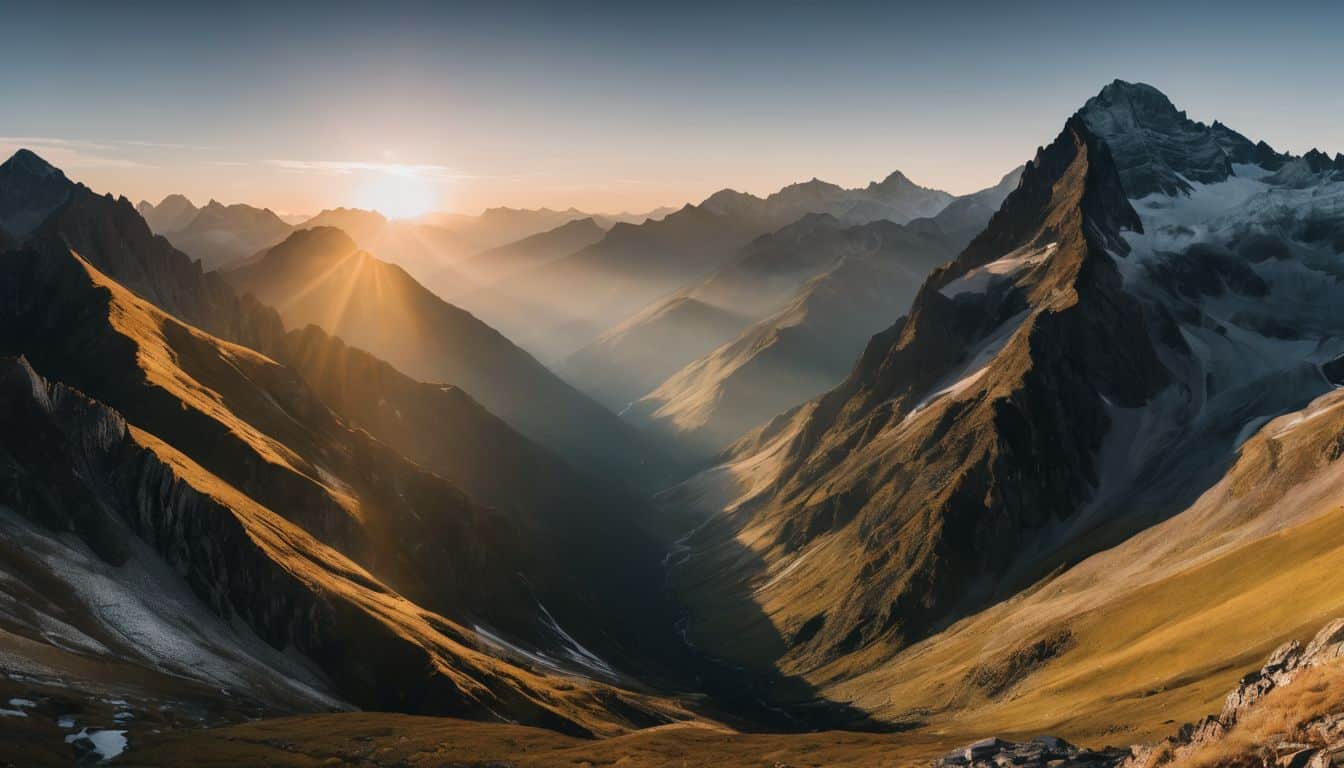
Navigating the world of travel can be a daunting task with countless options at every turn. We’ve all been there, overwhelmed by choices and unsure which type of adventure best suits our wandering heart.
Table of Contents
With first-hand experience in multiple types of travel and extensive research under our belt, we’re here to guide you through this maze. This blog post will offer an in-depth look into various types of travel from solo ventures to luxury indulgences – delivering insights for your next epic journey ! Let’s begin the exploration!
Key Takeaways
- Solo travel offers opportunities for personal growth, self – discovery, and building confidence. It allows travelers to tailor their adventures according to personal interests.
- Safety tips for solo travelers include researching destinations, sharing itineraries with someone back home, staying connected, trusting instincts, being cautious with alcohol, securing belongings, and using reliable transportation options.
- Top destinations for solo travelers include Bali (Indonesia), Prague (Czech Republic), Iceland, Tokyo (Japan), and New Zealand. These places offer unique experiences and opportunities for self-discovery.
- Adventure travel offers thrilling activities such as safaris, summer camps for outdoor fun, hiking and trekking in stunning landscapes, wildlife conservation initiatives to protect endangered species.
Solo Travel: The Ultimate Guide for Independent Explorers
Embarking on solo travel can be an incredibly rewarding experience, providing the opportunity for personal growth and self-discovery.
Benefits of Solo Travel

Solo travel cultivates an atmosphere of self-reliance and independence . Venturing into new locales on your own opens doors for deep introspection , a chance to discover and explore oneself just as much as the destinations.
It forces one to step out of their comfort zone, sharpening problem-solving skills in unfamiliar environments. Not only does this boost confidence but also broadens perspectives about different cultures and landscapes around the world.
Unconstrained by travel partners’ preferences, solo travelers have full freedom to tailor their adventures according to personal interests – from adventurous activities at dream destinations or peaceful retreats amid serene landscapes, every choice is yours alone! Sharing experiences with fellow solo travelers also helps build lasting friendships across borders.
Furthermore, encountering unexpected situations during solo travels can serve as life lessons that further enrich our knowledge and understanding of the world we live in.
Safety Tips for Solo Travelers

Solo travel can be an incredible adventure, but it’s important to prioritize safety. Here are some tips to help ensure a smooth and secure solo trip:
- Research your destination : Learn about the local customs, laws, and potential safety risks before you go.
- Share your itinerary : Let someone back home know your plans , including where you’ll be staying and how they can reach you.
- Stay connected : Always have a way to communicate with others , whether it’s a local SIM card or an international data plan.
- Blend in : Dress like the locals and avoid flashy jewelry or accessories that may attract unwanted attention.
- Trust your instincts : If something feels off or unsafe, remove yourself from the situation and find a safe place.
- Be cautious with alcohol : Drink responsibly and be aware of your surroundings when enjoying nightlife or socializing with new people.
- Secure your belongings : Keep valuable items locked up in a hotel safe or hidden in secure compartments of your bag.
- Stay aware of your surroundings : Pay attention to who is around you and trust your gut if something doesn’t feel right.
- Use reliable transportation options : Stick to reputable taxi companies or trusted ride-sharing services when getting around.
Top Destinations for Solo Travelers

Are you a solo traveler looking for the perfect destination to explore on your own? Here are some top destinations that will surely feed your wanderlust:
- Bali, Indonesia : Immerse yourself in the stunning beaches, vibrant culture, and spiritual experiences of this tropical paradise.
- Prague, Czech Republic : Wander through charming cobblestone streets and soak in the architectural beauty of this historic city.
- Iceland : Experience breathtaking landscapes with waterfalls, volcanoes, and geothermal hot springs that are sure to leave you in awe.
- Tokyo, Japan : Dive into the bustling metropolis of Tokyo where you can indulge in amazing food, shopping, and immerse yourself in traditional Japanese culture.
- Solo travel in New Zealand : Explore the stunning natural beauty of New Zealand through hiking trails, adventure sports, and breathtaking scenery.
Solo Travel Resources and Apps

I have discovered some great resources and apps that are perfect for solo travelers like myself. These tools can help make the journey even more enjoyable and stress-free:
- TripIt : This app keeps all of your travel itineraries organized in one place, making it easy to access flight details, accommodation reservations, and other important information.
- Google Maps : A must-have app for navigating unfamiliar cities or remote areas. You can easily find directions, discover local attractions, and even save offline maps for offline use.
- Skyscanner : This website and app is perfect for finding the best deals on flights. You can compare prices from different airlines and book your tickets directly through the platform.
- Hostelworld : If you’re looking for budget-friendly accommodation options, Hostelworld is a great resource. It provides a wide range of hostels around the world with reviews from fellow travelers.
- Yelp : When it comes to finding places to eat or drink, Yelp is a reliable source for reviews and recommendations from locals and tourists alike.
- Duolingo : Planning to visit a country where English may not be widely spoken? Duolingo is an excellent language-learning app that will help you pick up the basics before your trip.
- XE Currency : Avoid confusion when it comes to exchanging money by using this currency conversion app. It offers accurate rates and allows you to easily convert between currencies.
- Google Translate : Overcome language barriers with this handy translation tool. You can translate text or even have conversations with people who speak different languages.
- Trail Wallet : Perfect for budget-conscious travelers, Trail Wallet helps you track your expenses on the go so you can stick to your financial goals while exploring new destinations.
- Safety apps : There are various safety apps available that offer features such as real-time tracking, emergency contacts, and panic buttons in case of any mishaps during your solo travels.
Adventure Travel: Exploring Different Types of Adventures

From thrilling safaris to exhilarating hiking and trekking experiences, adventure travel offers endless opportunities for excitement and exploration. Discover the world’s most captivating landscapes and embark on wild rides that will leave you breathless with anticipation.
Read on to dive deep into the various types of adventures awaiting your adventurous soul.

When I think of adventure travel, one activity that always comes to mind is going on a safari. The thrill of being in the wild and getting up close with exotic animals is an experience like no other.
Whether you’re taking a jeep tour or embarking on a walking safari, there’s something magical about witnessing these majestic creatures in their natural habitat. From spotting lions roaming the grasslands to observing elephants bathing by the watering hole, every moment on a safari is filled with awe and wonder.
It’s not just about the wildlife though; safaris also offer incredible opportunities to immerse yourself in different landscapes and learn about local cultures . So if you’re ready for an adventure of a lifetime, make sure to add a safari to your bucket list!
Summer camps

I absolutely love summer camps! They are a fantastic way to experience adventure and have fun in the great outdoors. Whether you’re a kid or an adult, summer camps offer exciting activities like hiking, swimming, canoeing, and even campfire storytelling.
Not only do they provide an opportunity to make lifelong friends , but summer camps also teach valuable skills like teamwork and leadership. So pack your bags and head to a summer camp for an unforgettable adventure this year!
Hiking and Trekking
I absolutely love hiking and trekking ! There’s something incredibly exhilarating about exploring nature on foot and pushing your limits . Whether you’re tackling a challenging mountain trail or strolling through scenic landscapes, hiking and trekking offer unique adventures that allow you to connect with the natural world .
It’s not just about the physical exercise – it’s also an opportunity to immerse yourself in stunning environments , experience breathtaking views, and discover hidden gems off the beaten path .
So lace up those boots, grab your backpack, and get ready for an unforgettable journey into the great outdoors!
Wildlife Conservation

I love exploring the wild and learning about wildlife conservation. It’s important to protect animals’ natural habitats and ensure their survival for future generations. We can help maintain biodiversity and preserve endangered species by supporting wildlife conservation initiatives.
Whether it’s participating in research programs , volunteering at animal sanctuaries, or promoting eco-tourism, there are many ways to make a difference. Let’s work together to safeguard our planet’s beautiful creatures and create a sustainable future for all life forms.
Cultural Travel: Discovering the Richness of Different Cultures

Immerse yourself in local traditions, explore historical sites, indulge in culinary experiences, and celebrate festivals and events from different cultures around the world.
Immersion in Local Traditions

Exploring different cultures and immersing myself in local traditions has always been a highlight of my travels. There’s something truly enriching about stepping into the shoes of locals, learning their customs, and embracing their way of life.
Whether it’s participating in traditional ceremonies , trying local delicacies, or engaging in cultural activities, immersing myself in local traditions allows me to gain a deeper understanding and appreciation for the people and places I visit.
Through these immersive experiences, I’ve learned about ancient rituals at temples, witnessed breathtaking festivals firsthand, and even picked up some new dance moves along the way.
Historical Explorations
I love delving into the past and uncovering the stories of our ancestors. Historical explorations allow us to step back in time and witness different cultures, events, and landmarks firsthand.
Whether it’s exploring ancient ruins , visiting museums , or walking through cobblestone streets lined with historical buildings, there is something magical about connecting with the past .
These adventures provide a unique educational experience that deepens our understanding of history while also igniting a sense of awe and wonder. From exploring iconic sites like the Pyramids of Giza to discovering hidden gems off the beaten path, historical explorations offer endless opportunities for discovery and reflection.
Culinary Experiences
Exploring different cultures through their cuisine is an essential part of cultural travel. Immerse yourself in the flavors and traditions of a country by sampling local dishes , visiting markets , and even taking cooking classes .
Discover exotic spices, unique ingredients , and traditional cooking techniques that will tantalize your taste buds and expand your culinary horizons. Whether it’s indulging in fresh seafood along the coast of Italy or savoring street food in Thailand, culinary experiences are a delicious way to connect with a culture on a deeper level.
Festivals and Events
Attending festivals and events is a vibrant way to immerse yourself in the local culture while traveling. From colorful parades to music concerts, these celebrations offer a unique experience that allows you to connect with the community and witness their traditions firsthand .
You can join in traditional dances , sample delicious local cuisines , and marvel at spectacular firework displays . Whether it’s celebrating religious holidays or cultural landmarks, festivals and events create lasting memories while giving you an opportunity to make new friends from around the world.
So pack your dancing shoes and get ready to celebrate!
Participating in festivals and events not only introduces you to different customs but also provides insights into the history of a place. Through historical reenactments or guided tours, you can learn about significant moments in time that shaped a community’s identity.
Attending these events allows you to visualize stories told through artistic performances or interactive exhibitions. By immersing yourself in such experiences, you enrich your understanding of diverse cultures and gain a deeper appreciation for the destinations on your travel itinerary.
– Festivals and events give travelers the chance to engage with locals.
Eco-Travel: Promoting Sustainable Tourism

Eco-Travel promotes sustainable tourism through responsible wildlife tourism , conservation and preservation efforts , eco-friendly accommodations , and sustainable transportation options .
Responsible Wildlife Tourism
I believe that responsible wildlife tourism is crucial for preserving our planet’s diverse ecosystems and protecting endangered species . By practicing ethical and sustainable approaches to wildlife encounters, we can contribute to conservation efforts while also having a memorable travel experience.
It’s important to choose tour operators and accommodations prioritizing animal welfare, such as those promoting responsible interactions with animals in their natural habitats and supporting local conservation projects .
Remember, when engaging in wildlife tourism activities, always respect the environment and the animals by following guidelines set by experts in the field. Let’s be conscious travelers who appreciate nature’s beauty without causing harm or distress to its inhabitants.
Conservation and Preservation
Conservation and preservation are essential aspects of eco-travel. When we engage in responsible wildlife tourism, we actively contribute to conservation efforts to protect endangered species and preserve their habitats.
By supporting ethical organizations and initiatives, we can help ensure the long-term sustainability of our natural environment. Choosing eco-friendly accommodations that prioritize sustainable practices also contributes to reducing our impact on the planet.
Additionally, opting for sustainable transportation methods such as public transit or biking helps minimize carbon emissions and protect fragile ecosystems.
Eco-Friendly Accommodations
Eco-friendly accommodations are a great option for travelers who want to minimize their environmental impact while enjoying their vacation. These accommodations prioritize sustainability and conservation by implementing practices like using renewable energy sources , reducing water consumption , and promoting recycling .
Staying at an eco-friendly accommodation helps protect the planet and provides a unique and immersive experience for visitors. From eco-lodges nestled in rainforests to solar-powered resorts by the beach, various options are available that cater to different travel preferences.
By staying at eco-friendly accommodations, travelers can contribute towards responsible tourism and support businesses that prioritize sustainable practices. So why not consider booking your next adventure at an environmentally conscious lodging?.
Sustainable Transportation
I always make sure to choose sustainable transportation when I travel. It’s not only good for the environment, but it also allows me to experience my destination in a unique way. Instead of relying on cars or airplanes, I opt for public transportation like buses or trains whenever possible.
This not only reduces carbon emissions but also gives me a chance to interact with locals and see the landscape up close. Another option I love is biking or walking around the city , which keeps me active and reduces my carbon footprint.
By choosing sustainable transportation, I feel like I’m doing my part in preserving our planet while enjoying my travels to the fullest.
Luxury Travel: Indulging in Exquisite Experiences

Experience the epitome of indulgence with high-end resorts, private tours, fine dining, and luxury cruises. Whether you seek relaxation or opulence, this guide has everything you need to create unforgettable memories.
High-end Resorts and Spas
I absolutely love indulging in the luxurious experience that high-end resorts and spas offer. The exquisite accommodations , world-class amenities , and top-notch service make it a truly unforgettable getaway.
Whether you’re looking for a tropical paradise or a mountain retreat, these high-end establishments provide the perfect setting for relaxation and rejuvenation. From rejuvenating spa treatments to gourmet dining experiences , every aspect of your stay is designed to pamper you and ensure that you leave feeling refreshed and revitalized.
It’s all about treating yourself to the finer things in life and creating memories that will last a lifetime. So why not splurge on a stay at one of these high-end resorts or spas? After all, you deserve nothing but the best!
Private Tours and Experiences
I love the exclusivity and personalized attention that comes with private tours and experiences. It’s a fantastic way to explore a destination at your own pace, while enjoying the luxury of having an expert guide who can provide insights and insider knowledge .
Whether it’s a historical walking tour through ancient ruins or a luxurious wine tasting experience at a vineyard, private tours offer unique opportunities to delve deeper into the culture and attractions of a place.
You can customize your itinerary to focus on your interests, ensuring that you get the most out of your travel experience. With private tours and experiences, you’ll have unforgettable moments that are tailored just for you.
Fine Dining and Wine Tasting
I love indulging in exquisite experiences when I travel, and one of my favorite ways to do that is through fine dining and wine tasting. There’s something truly special about savoring a gourmet meal paired with a perfectly matched wine .
Whether it’s enjoying a Michelin-starred dinner or exploring vineyards in the rolling hills of Tuscany, fine dining and wine tasting offer unique opportunities for sensory pleasure and culinary exploration .
From rich flavors to elegant presentation, every bite and sip take you on a delightful journey of taste. So if you’re a foodie like me, be sure to add fine dining and wine tasting experiences to your travel itinerary for an unforgettable gastronomic adventure.
Luxury Cruises
If you’re looking to indulge in exquisite experiences while traveling, luxury cruises are the perfect choice. These cruises offer high-end resorts and spas on board where you can relax and rejuvenate in style.
Private tours and experiences provide personalized attention , allowing you to explore destinations at your own pace . Fine dining options with world-class cuisine and wine tasting events elevate your culinary experience while sailing the seas.
Luxury cruises provide a unique opportunity to immerse yourself in opulence and create unforgettable memories .
Conclusion on Types of Travel

Embark on your next travel adventure and explore the various types of travel that await you. From solo exploration to adrenaline-filled adventures , cultural immersions to eco-friendly experiences, and luxurious indulgences to soulful journeys, there is a type of travel for every adventurous soul.
So pack your bags, step out of your comfort zone, and let the world be your guide as you discover new landscapes, cultures, and unforgettable experiences along the way.
FAQs on Types of Travel
1. what are the different types of travel i can explore.
You can explore various types of travel such as adventure travel, cultural tourism, ecotourism, and beach vacations.
2. How do I decide which type of travel is right for me?
To decide which type of travel is right for you, consider your interests, preferences, and desired experiences. Think about whether you enjoy outdoor activities, learning about different cultures or simply relaxing on a beach.
3. Are there any recommended destinations for each type of travel?
Yes, there are recommended destinations for each type of travel. For example, adventure travelers may consider places like New Zealand or Costa Rica while cultural tourists may be drawn to cities like Paris or Kyoto.
4. Can I combine different types of travel in one trip?
Absolutely! You can combine different types of travel in one trip to make it more diverse and enjoyable. For example, you might start with an adventurous hike and then unwind by exploring local traditions and cuisine.
About the author

I’ve been fortunate to visit over fifty countries, each journey leaving a unique footprint on my life’s map. From bustling cities to serene nature trails, I’ve immersed myself in different cultures and experiences, constantly broadening my understanding of the world. On this site, I share my travel stories, tips, and insights, hoping to inspire others to embark on their own journeys. Join me as we uncover the beauty of our planet, one adventure at a time. Please reach out here if you need to get in touch.
Leave a Reply Cancel reply
Your email address will not be published. Required fields are marked *
Save my name, email, and website in this browser for the next time I comment.
Latest posts
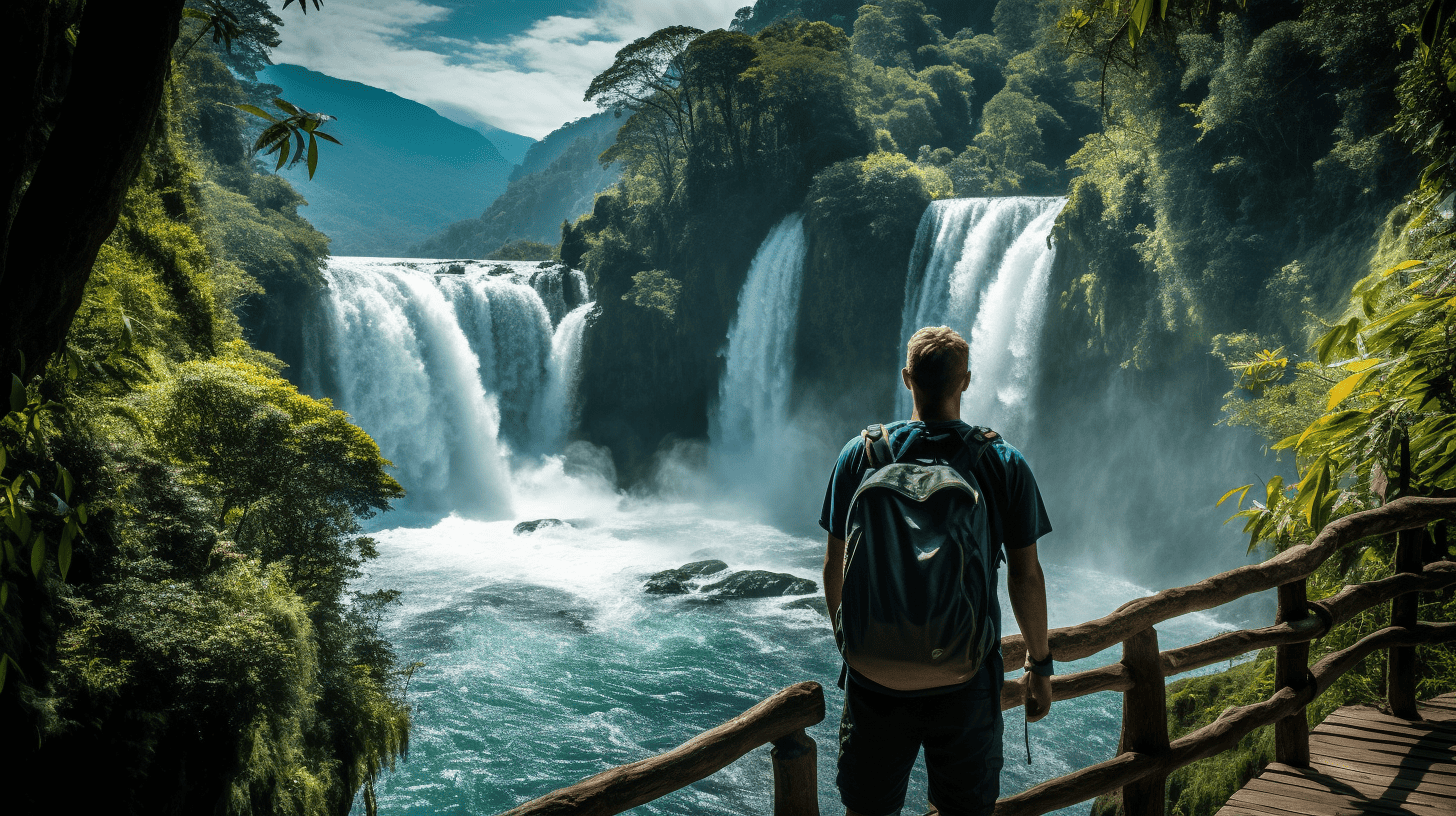
Transforming Travel for a Thriving World: The Importance of Good Travels
Are you keen on traveling but want to ensure your travels align with your values? I’ve been there, too. In fact, research shows that more and more people are interested in ethical tourism (Queiros, 2015). This article will introduce you to the concept of good travel and how it can contribute to a thriving world.…
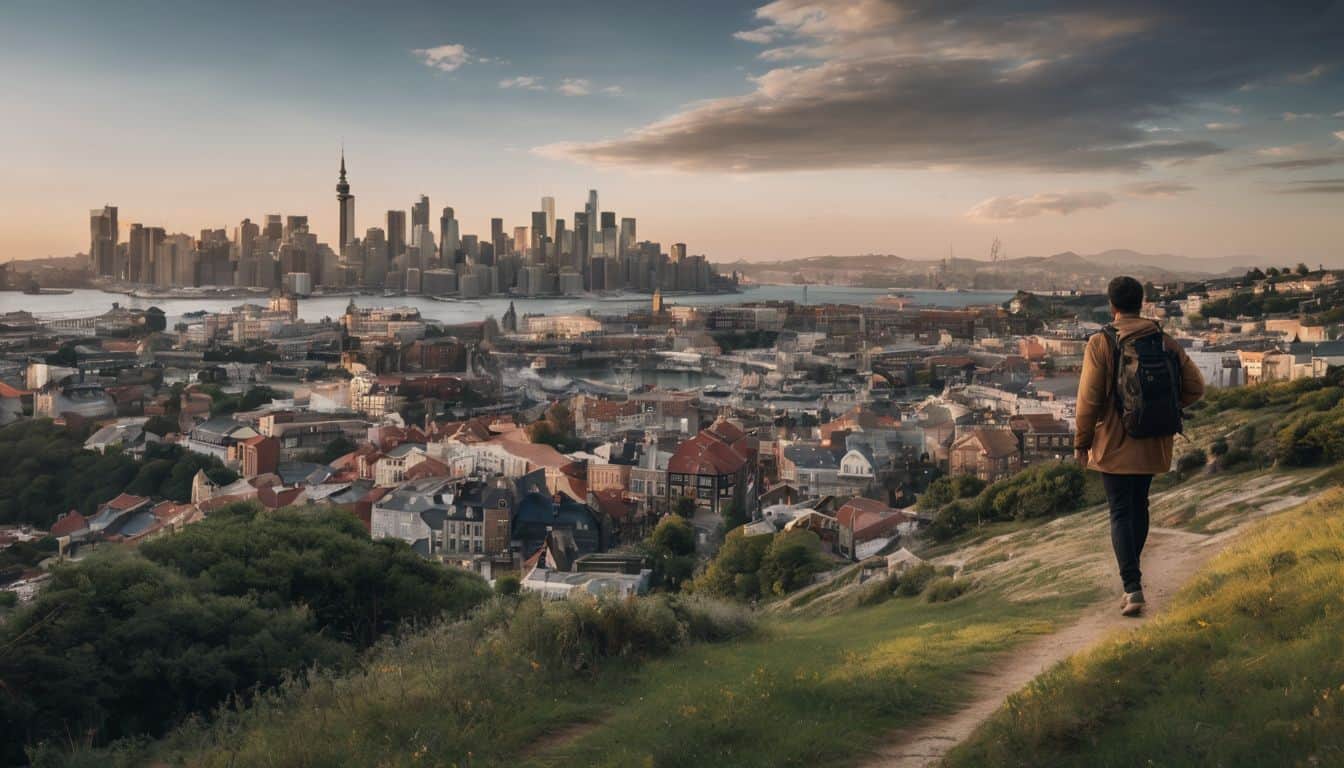
10 Tips for a Safe Travel Home: How to Ensure a Secure Return
Traveling is always an adventurous journey. Yet, the excitement can quickly turn to concern over safe travel home or safety while on the road – a predicament I’ve found myself in many times. With extensive research and personal experience, this blog post will provide you with ten proven tips to ensure a safe journey home…
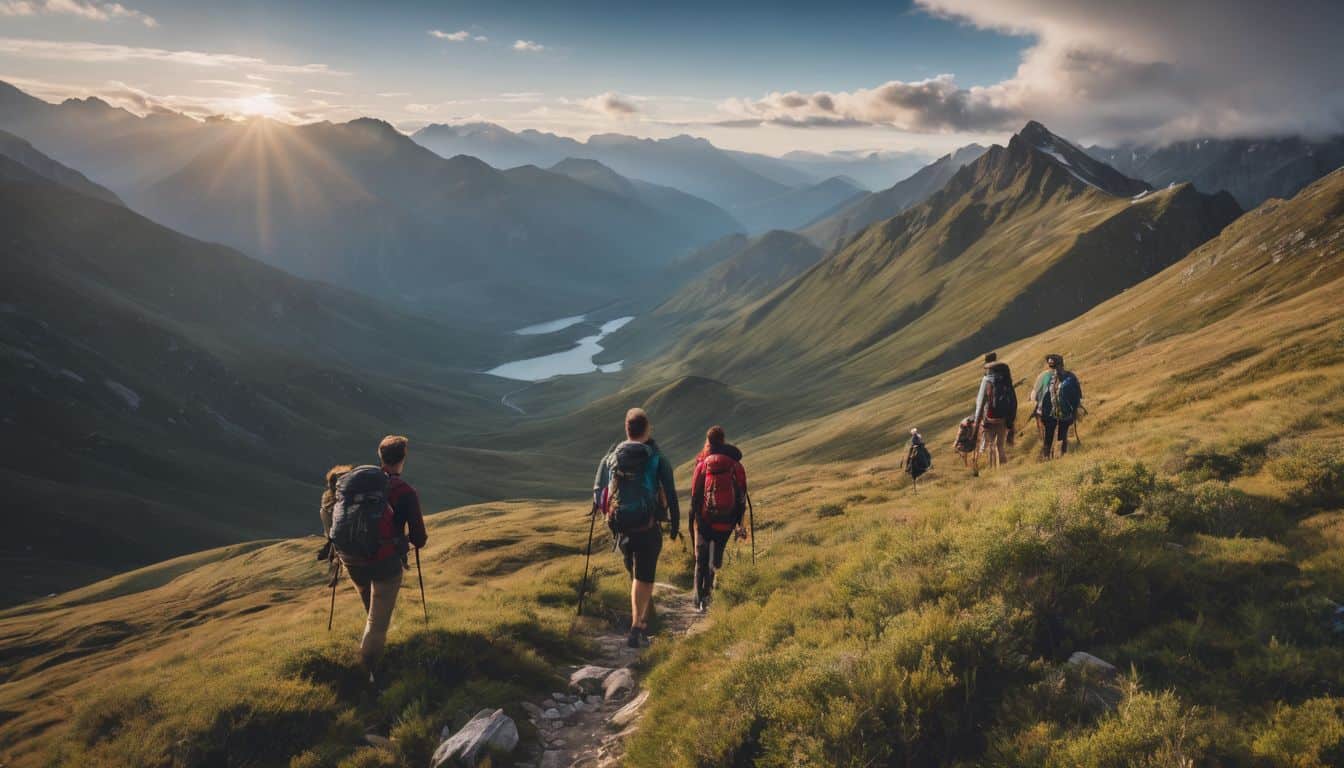
The Importance of Traveling and its Benefits
Feeling stuck in a rut or overwhelmed by daily stressors? I know exactly how you feel – as a frequent traveler, I’ve found that breaking from routine and exploring new horizons dramatically improves my well-being. Statistics even show that traveling can increase happiness, reduce depression, and chill us out (fact: it reduces stress!). This blog…

The Ultimate Guide To Types of Tourism: From Active to Zoological and More
Travel Marketing 101: Everything You Need to Know
Welcome to our ultimate guide to types of tourism! This collection is a comprehensive exploration of the diverse world of travel.
In this guide, we delve into an extensive array of tourism types, each offering unique experiences and perspectives on the world. From thrill-seekers to animal enthusiasts and more, this guide covers a spectrum that caters to every traveler’s preference and style.
Our aim is to enlighten both seasoned and novice tourism professionals and providers about the myriad ways people can explore, learn, and interact with different cultures, environments, and communities.
Join us as we journey through each type of tourism, uncovering the nuances and specialties that make each one distinct and worthwhile.
3 Benefits to Understanding Types of Tourism
3 limitations of tourism typologies, active tourism, adventure tourism, accessible tourism, agritourism, alternative tourism, archaeological tourism, birth tourism, business tourism or mice tourism, bird tourism, coffee tourism, community-based tourism, craft tourism, cruise tourism, culinary tourism or food tourism, cultural tourism, dark tourism, dental tourism, disaster tourism, domestic tourism, drug tourism, educational tourism, enotourism/wine tourism, experiential tourism, extreme tourism, fashion tourism, film tourism, genealogy tourism, halal tourism, health tourism, heritage tourism, honeymoon tourism, industrial tourism, jungle tourism, justice tourism, lgbt tourism, literary tourism, medical tourism, militarism heritage tourism, music tourism, nautical tourism, ocean tourism, photography tourism, political tourism, rail tourism, regenerative tourism, religious tourism, rural tourism, science tourism, senior tourism, sex tourism, slow tourism, slum tourism, snow and ice tourism, space tourism, sports tourism, sustainable tourism, virtual tourism, voluntourism, war tourism, wellness tourism, wildlife tourism, zoological tourism, what other types of tourism are out there, what are the benefits of understanding types of tourism.
As you explore this guide, consider both the benefits and limitations of these tourism types.
Use them as a lens to view the vast, dynamic landscape of travel, keeping in mind that the real essence of tourism often lies in the unique, unclassifiable experiences that transcend these categories.
This guide aims to spark ideas, foster understanding, and offer a structured overview while celebrating the diversity and complexity of travel experiences worldwide.
- Identifying Personal Preferences and Destination Offerings – By exploring the different types of tourism, you can better understand what appeals to you as a traveler or what your destination can uniquely offer. This knowledge helps in tailoring travel experiences to personal tastes or in marketing a destination effectively.
- Competitive Analysis – For travel professionals and destination planners, understanding the breadth of tourism types provides a valuable tool for competitive analysis. By seeing what other destinations are doing, you can identify trends, gaps, and opportunities in the market.
- Learning from Successes and Failures – This guide serves as a repository of diverse tourism practices, allowing you to see what works and what doesn’t in different contexts. Such insights are invaluable for refining strategies and offerings in the tourism industry.
- Academic Orientation – While the categorization of tourism types is insightful, it’s important to recognize that this approach can be somewhat academic. The way these categories are defined and discussed may not always align with the more fluid, real-world experiences of travelers and industry practitioners.
- Tourist Self-Identification – Many tourists may not consciously identify with specific tourism labels like “wellness tourism seekers” or “adventure tourists.” Their motivations and behaviors might overlap across several types of tourism, making it challenging to pigeonhole their experiences into a single category.
- Guidelines, Not Rules – Consequently, it’s crucial to view these categories as flexible guidelines rather than rigid classifications. They offer a framework for understanding the broad spectrum of tourism, but they should be adapted and interpreted in the context of real-world experiences and market dynamics.
Now, I would like to begin expanding our list of types of tourism. I would like to give you 5 at a time. For each type of tourism, please give a 4-5 sentence paragraph explaining generally what this type of tourism consists of. Then give 3 bullets of examples from around the world that classify this type of tourism. Does that sound doable?
64 Types of Tourism (and Counting!)
Active tourism is centered around travel experiences that involve physical activities and outdoor adventures. It’s ideal for those who seek an energetic and health-conscious way to explore new destinations.
This type of tourism includes a range of activities such as hiking tours, cycling tours, and running tours, each offering a unique way to connect with the landscape and culture of a place.
Examples of active tourism :
- Hiking Tours in the Swiss Alps – Trekking through scenic mountain trails and enjoying breathtaking views.
- Cycling Tours in the Loire Valley, France – Exploring picturesque villages and vineyards on bike.
- Run Tours in the Italian Dolomites – Self-guided and guide-led tours through one of the most challenging and dramatic run destinations.
Adventure tourism is characterized by its focus on active, outdoor experiences that often involve an element of risk or physical exertion. It caters to travelers seeking excitement, adrenaline, and exploration in natural or exotic environments.
This type of tourism usually involves activities like trekking, mountain biking, rock climbing, or water sports. It appeals to those who want to step outside their comfort zone and embrace nature’s challenges.
Examples of Adventure Tourism :
- Trekking in the Himalayas, Nepal – Offering some of the world’s most breathtaking treks, including the famous Everest Base Camp trek.
- White-water Rafting in the Grand Canyon, USA – Navigating the rapids of the Colorado River amidst stunning canyon scenery.
- Safari Adventure in Kruger National Park, South Africa – Experiencing wildlife up close on guided safaris and bush walks.
Accessible tourism ensures travel and tourism opportunities are available to all people, regardless of their physical limitations, disabilities, or age.
This form of tourism focuses on creating inclusive environments, from transportation to accommodations and attractions, ensuring accessibility for everyone. It’s about removing barriers to travel and embracing a diverse range of travelers.
Examples of accessible tourism :
- Barrier-Free Travel in Berlin, Germany – Known for its accessible public transportation and facilities.
- Accessible Beaches in Gold Coast, Australia – Featuring beach wheelchairs and accessible walkways.
- Disney World, Florida, USA – Offering extensive accessibility options for visitors with various disabilities.
Agritourism, or agricultural tourism, involves visiting a working farm or any agricultural, horticultural, or agribusiness operation to enjoy, be educated, or be involved in activities.
This type of tourism includes a wide range of activities like fruit picking, farm stays, wine tasting, and learning about rural ways of life. It’s a way for tourists to experience and understand the agricultural landscape and traditions.
Examples of agritourism :
- Wine Tours in Tuscany, Italy – Exploring vineyards and tasting world-class wines.
- Farm Stays in Vermont, USA – Participating in farm activities and enjoying local, farm-to-table meals.
- Tea Plantation Tours in Kerala, India – Witnessing tea production and enjoying scenic plantation walks.
Alternative tourism is an approach that emphasizes travel outside of the conventional mass tourism model. It focuses on smaller groups, less trodden destinations, and experiences that promote environmental sustainability, cultural understanding, and local community engagement.
This type of tourism often involves eco-friendly practices, cultural immersion, and responsible travel ethics.
Examples of alternative tourism:
- Eco-Lodges in the Amazon Rainforest, Brazil – Providing sustainable accommodation and immersive rainforest experiences.
- Community-based Tourism in Chiang Mai, Thailand – Engaging with local hill tribes and participating in their daily activities.
- Responsible Wildlife Tours in Galapagos Islands, Ecuador – Promoting conservation and responsible interaction with unique wildlife.
Archaeological tourism involves traveling to sites of historical and archaeological significance. It appeals to those interested in the ancient history and civilizations of different cultures.
Tourists get to explore ruins, artifacts, and museums, often with the guidance of experts to enrich their understanding of the site’s historical context.
Examples of archaeological tourism :
- Pyramids of Giza, Egypt – Exploring one of the most iconic and ancient wonders of the world.
- Machu Picchu, Peru – Visiting the well-preserved ruins of an Incan city set high in the Andes Mountains.
- Roman Colosseum, Italy – Touring the remains of the ancient Roman amphitheater, rich in historical significance.
Birth tourism refers to the practice of traveling to another country for the purpose of giving birth in that country. The primary motivation is often to obtain certain benefits for the child, such as citizenship or access to superior healthcare.
This type of tourism involves extended stays and often requires considerable planning and understanding of the destination’s legal and medical systems.
Examples of birth tourism :
- Canada and the United States – Popular destinations for birth tourism due to the automatic right to citizenship for children born in these countries.
- Brazil – Known for its high-quality healthcare facilities attracting birth tourists.
- Germany – Offers excellent healthcare and allows children born to foreign parents to apply for citizenship under certain conditions.
Business tourism, also known as corporate or MICE (Meetings, Incentives, Conferences, and Exhibitions) tourism, involves travel for business-related purposes. This includes attending conferences, meetings, trade shows, and corporate events.
It’s a major sector of the tourism industry, often involving high-level logistics and luxury accommodations.
Examples of business tourism/MICE tourism :
- Dubai, UAE – Frequently hosts international business conferences and exhibitions.
- Las Vegas, USA – Known for its large convention centers and hosting major trade shows.
- Singapore – A hub for corporate meetings and international business events in Asia.
Bird tourism, or birding, is a form of natural tourism where individuals travel specifically to observe and study birds in their natural habitat. This type of tourism is popular among wildlife enthusiasts and nature photographers.
It contributes to conservation efforts and promotes awareness of bird species and their environments.
Examples of bird tourism :
- Costa Rica – Home to a diverse range of bird species, attracting bird watchers from around the world.
- Kruger National Park, South Africa – Offers birding safaris to see African bird species.
- Papua New Guinea – Known for its endemic bird species, including the famous Birds of Paradise.
Coffee tourism centers around visiting coffee plantations, learning about the coffee production process, and tasting various types of coffee. It provides insight into the journey of coffee from bean to cup, including cultivation, harvesting, and roasting.
This type of tourism is especially popular among coffee enthusiasts and those interested in agritourism. It’s also a way to understand the cultural and economic importance of coffee in different regions.
Examples of coffee tourism :
- Coffee Plantations in Colombia – Exploring the renowned coffee-growing regions and experiencing the rich flavor of Colombian coffee.
- Café Tours in Vienna, Austria – Discovering the historic coffee houses and the city’s coffee culture.
- Coffee Farms in Uganda – A special recommendation from Travel Marketing School’s founder, as he conducted a research project in Uganda, delving into the local coffee industry and its impact on communities.
Community-based tourism focuses on local communities and their cultures, traditions, and daily lives. It’s a form of sustainable tourism that aims to benefit local residents directly, often through immersive cultural experiences.
This tourism type encourages respectful and meaningful interactions between tourists and host communities.
Examples of community-based tourism :
- Sapa, Vietnam – Visitors engage with local hill tribes and experience traditional lifestyles.
- Masai Mara, Kenya – Offers cultural experiences with the Maasai people, including village tours and traditional dance performances.
- Oaxaca, Mexico – Known for community-based cultural tours, artisan workshops, and local cuisine.
Craft tourism involves traveling to destinations known for unique local crafts and artisanal products. Tourists get the chance to see artisans at work, learn about traditional crafting techniques, and purchase handmade goods.
This type of tourism supports local artisans and preserves cultural heritage.
Examples of craft tourism :
- Marrakech, Morocco – Famous for its souks with traditional crafts like pottery, leather goods, and textiles.
- Kyoto, Japan – Offers experiences in traditional Japanese crafts such as kimono making and woodworking.
- Santa Fe, New Mexico, USA – Known for Native American and Spanish colonial crafts, including jewelry and pottery.
Cruise tourism involves traveling on cruise ships that offer various on-board amenities and stop at multiple destinations. It’s a unique way to explore different places while enjoying the luxury and entertainment provided on the cruise.
This type of tourism is popular for its convenience, all-inclusive packages, and the ability to visit multiple locations in a single trip.
Examples of cruise tourism :
- Caribbean Cruises – Known for their scenic island stops and vibrant on-board activities.
- Mediterranean Cruises – Offering a journey through historic ports in countries like Italy, Greece, and Spain.
- Alaskan Cruises – Showcasing stunning glacier views, wildlife, and unique shore excursions.
Culinary tourism, also known as food tourism, involves traveling primarily for experiencing the food and culinary traditions of a particular region.
This type of tourism is not just about dining out, but also includes activities like food tours, cooking classes, wine tastings, and visiting farmers’ markets. It appeals to those keen on exploring a destination’s culture through its gastronomy.
Examples of culinary tourism or food tourism :
- Bologna, Italy – Known for its rich food culture, including dishes like Bolognese sauce and Parmigiano Reggiano cheese.
- Bangkok, Thailand – Famous for its street food tours offering a taste of authentic Thai cuisine.
- Oaxaca, Mexico – Offers culinary experiences centered around traditional Mexican cuisine, including mole and mezcal tasting.
Cultural tourism involves traveling to experience the culture, traditions, and lifestyle of a particular area. This includes visiting historical sites, festivals, art galleries, theaters, and experiencing local customs.
Cultural tourists seek to gain an authentic experience and a deeper understanding of the destination’s heritage.
Examples of cultural tourism :
- Kyoto, Japan – Renowned for its temples, traditional tea ceremonies, and Geisha culture.
- Paris, France – Offers a rich cultural experience with its world-famous museums, art galleries, and historical architecture.
- Marrakech, Morocco – Known for its vibrant souks, historic palaces, and Berber culture.
Dark tourism involves visiting sites associated with death, suffering, or tragedy. This controversial form of tourism is often educational and thought-provoking, aiming to commemorate and remember historical events.
It includes visiting war zones, genocide memorials, disaster sites, and prisons.
Examples of dark tourism :
- Auschwitz-Birkenau, Poland – A former Nazi concentration and extermination camp, now a museum and memorial.
- Chernobyl, Ukraine – Tours to the site of the Chernobyl nuclear disaster.
- Ground Zero, New York, USA – The site of the September 11 attacks, now home to a memorial and museum.
Dental tourism involves traveling abroad for affordable dental care, surgery, or procedures that are more expensive in one’s home country. It’s often combined with the opportunity to vacation and relax during the recovery period.
This type of tourism is popular due to the cost savings and quality of care available in certain countries.
Examples of dental tourism :
- Bangkok, Thailand – Known for high-quality dental services at a fraction of the cost compared to Western countries.
- Budapest, Hungary – A popular destination for dental care, offering modern clinics and experienced dentists.
- Costa Rica – Attracts dental tourists with its combination of professional dental care and beautiful vacation spots.
Disaster tourism is the practice of visiting locations that have experienced natural or man-made disasters. It can be controversial, but when managed ethically, it can offer educational value and support for the affected communities through tourism revenue.
This type of tourism includes visiting areas hit by hurricanes, earthquakes, or industrial catastrophes.
Examples of disaster tourism :
- New Orleans, USA – Tours of areas affected by Hurricane Katrina, focusing on the disaster’s impact and recovery efforts.
- Pompeii, Italy – An ancient city preserved in volcanic ash from Mount Vesuvius, offering insights into the life and sudden end of a Roman city.
- Fukushima, Japan – Guided tours in the regions affected by the 2011 tsunami and nuclear disaster, focusing on the impacts and ongoing recovery.
Domestic tourism involves traveling within one’s own country rather than going abroad. This type of tourism allows individuals to explore different regions, cultures, and attractions within their national borders. It’s a way to support local economies and discover the diversity of one’s own country.
Domestic travel can range from weekend getaways to extended tours and can include a variety of activities like city breaks, countryside excursions, or coastal holidays.
Examples of domestic tourism :
- The Lake District, England – Known for its stunning landscapes, hiking trails, and quaint villages.
- Yellowstone National Park, USA – Attracts visitors with its geothermal features and wildlife.
- Great Ocean Road, Australia – A scenic drive famous for its rugged coastline, including the Twelve Apostles.
Drug tourism refers to travel to a region to obtain or use drugs that are illegal in one’s home country. This controversial type of tourism often involves substances that are culturally or legally accepted in the destination.
It’s important to approach this topic with an understanding of the legal and ethical implications involved.
Examples of drug tourism :
- Amsterdam, Netherlands – Known for its coffee shops where certain types of cannabis are legally sold and consumed.
- Ayahuasca Retreats in Peru – Offering spiritual experiences with the traditional Ayahuasca brew, often under the guidance of a shaman.
- Certain States in the USA – Where the recreational use of cannabis is legal, attracting tourists from other states or countries.
Ecotourism focuses on responsible travel to natural areas, conserving the environment, and improving the well-being of local people. It emphasizes minimizing the impact of tourism, promoting environmental awareness, and providing direct financial benefits for conservation and community development.
Ecotourism experiences often include wildlife viewing, nature hikes, and educational activities about local ecosystems.
Examples of ecotourism :
- Costa Rica – A global leader in ecotourism, known for its rainforest tours and conservation efforts.
- The Galapagos Islands, Ecuador – Offers unique wildlife experiences with a strong emphasis on preserving the islands’ delicate ecosystem.
- Kenya – Renowned for its safari experiences in national parks that combine wildlife viewing with conservation efforts.
Educational tourism is travel aimed at acquiring knowledge or learning something new, including student exchanges, study tours, and academic sabbaticals.
This type of tourism can encompass a wide range of subjects, from language learning to cultural studies, and is often facilitated by educational institutions.
Examples of educational tourism :
- Language Schools in Spain – Offering immersive Spanish language learning experiences.
- Historical Tours in Rome, Italy – Focusing on the city’s rich ancient history and architecture.
- Cooking Schools in Thailand – Where tourists learn to cook traditional Thai dishes in a hands-on setting.
Enotourism, or wine tourism, involves visiting vineyards, wineries, wine festivals, and tasting rooms to experience the process of wine production and to taste wines in their natural setting.
This type of tourism often includes learning about viticulture and winemaking processes, and experiencing the culture and cuisine associated with wine regions.
Examples of enotourism or wine tourism :
- Bordeaux, France – Famous for its wine tours and tastings in renowned vineyards.
- Napa Valley, California, USA – Known for its world-class wineries and beautiful landscapes.
- Tuscany, Italy – Offers picturesque vineyards, wine tastings, and tours of historic wineries.
Experiential tourism focuses on creating immersive experiences for travelers, allowing them to actively engage with the history, people, culture, food, and environment of a destination. Instead of being passive observers, tourists are encouraged to participate actively in the local way of life.
This type of tourism often involves authentic, hands-on activities that provide a deeper understanding of the local culture.
Examples of experiential tourism :
- Live Like a Local in Bali, Indonesia – Engaging in traditional Balinese daily activities, from rice farming to temple rituals.
- Culinary Classes in France – Learning to cook regional French dishes with local chefs.
- Maori Cultural Experiences in New Zealand – Immersive experiences in Maori history, art, and traditional ceremonies.
Extreme tourism caters to tourists seeking adrenaline-pumping activities and experiences that involve a high level of risk. This type of tourism is for thrill-seekers who enjoy challenging themselves physically and mentally.
Activities often take place in extreme or unusual environments, from remote wilderness to harsh climates.
Examples of extreme tourism :
- Mount Everest Expeditions, Nepal – Attempting to summit the world’s highest peak.
- Volcano Boarding in Nicaragua – Sliding down the slopes of an active volcano on a specialized board.
- Ice Diving in Antarctica – Exploring underwater environments beneath the ice.
Fashion tourism revolves around traveling to destinations known for their influence in the world of fashion. This includes visiting fashion capitals for events like Fashion Week, exploring famous shopping districts, and attending fashion shows.
It’s a blend of travel and the love of fashion, style, and shopping.
Examples of fashion tourism :
- Milan Fashion Week, Italy – Attending one of the most prestigious events in the fashion world.
- Shopping in Paris, France – Exploring high-end fashion boutiques in areas like the Champs-Élysées.
- Garment District Tour in New York City, USA – Discovering the heart of America’s fashion industry.
Film tourism involves visiting locations where famous movies or TV shows were filmed. This type of tourism allows fans to connect with their favorite media by seeing and experiencing the actual places featured on screen.
It includes guided tours of film sets, themed attractions, and visiting iconic locations from popular films.
Examples of film tourism :
- Hobbiton Movie Set, New Zealand – Exploring the filming location of “The Lord of the Rings” and “The Hobbit” trilogies.
- Game of Thrones Tours in Dubrovnik, Croatia – Visiting key filming locations from the popular TV series.
- Harry Potter Studio Tour in London, England – Experiencing the behind-the-scenes of the Harry Potter movie series.
Genealogy tourism, or ancestry tourism, involves individuals traveling to explore their family roots and heritage. This journey often includes visiting ancestral hometowns, exploring archives and libraries, and connecting with distant relatives.
It’s a personal form of tourism that provides a deeper understanding of one’s family history and cultural background.
Examples of genealogy tourism :
- Visiting Ellis Island, USA – Exploring the gateway for millions of immigrants and searching historical records.
- Ancestral Villages in China – Travelers visit their ancestral villages to learn about family history and participate in traditional customs.
- Genealogy Research in Ireland – Utilizing resources like the National Library of Ireland to trace Irish ancestry and visiting ancestral homes.
Geotourism focuses on the geographical characteristics of a destination, including its culture, aesthetics, heritage, and well-being of its inhabitants. It emphasizes a deep respect and appreciation for the intrinsic natural and cultural features of a place.
Geotourism often involves exploring unique geological features, landscapes, and local traditions in a sustainable manner.
Examples of geotourism :
- Grand Canyon, USA – Marveling at one of the world’s most renowned geological wonders.
- Icelandic Geothermal Springs – Experiencing geysers, hot springs, and volcanic landscapes.
- The Great Barrier Reef, Australia – Exploring the world’s largest coral reef system, renowned for its vibrant marine life.
Halal tourism caters to Muslim travelers who wish to adhere to their Islamic beliefs while traveling. This includes access to Halal food, prayer facilities, and accommodation that aligns with Islamic practices.
Halal tourism also often involves experiences that respect Islamic culture and heritage.
Examples of halal tourism :
- Istanbul, Turkey – Offering a rich Islamic heritage, Halal-friendly hotels, and mosques.
- Kuala Lumpur, Malaysia – Known for its Halal culinary scene and Islamic art museums.
- Dubai, UAE – Providing luxury Halal travel experiences, from shopping to accommodation.
Health tourism involves traveling to improve one’s physical or mental health, often including medical treatments, wellness retreats, or fitness programs.
This type of tourism can range from spa and wellness retreats to undergoing medical procedures or therapies in specialized facilities abroad.
Examples of health tourism :
- Spa Retreats in Bali, Indonesia – Offering holistic wellness experiences, including traditional Balinese treatments.
- Yoga Retreats in Rishikesh, India – Known as the ‘Yoga Capital of the World’, offering a range of yoga and meditation retreats.
- Thermal Baths in Budapest, Hungary – Famous for its thermal springs and spa culture.
Heritage tourism involves visiting sites of historical or cultural significance to understand and appreciate the past. It includes exploring ancient ruins, historical landmarks, museums, and culturally rich neighborhoods.
This type of tourism is about connecting with the history, traditions, and heritage of a place.
Examples of heritage tourism :
- The Pyramids of Giza, Egypt – Exploring one of the most significant archaeological sites in the world.
- The Historic Center of Rome, Italy – Immersing in the rich history of the Roman Empire.
- The Great Wall of China – Visiting the iconic symbol of China’s historical defense architecture.
Honeymoon tourism caters to newlyweds seeking a romantic and memorable experience post-wedding. It often involves luxury accommodations, picturesque settings, and romantic activities.
Destinations range from tropical beaches to cozy mountain retreats, tailored to provide an intimate and special experience for couples.
Examples of honeymoon tourism :
- Maldives – Known for its overwater bungalows and idyllic island settings.
- Paris, France – Often dubbed the ‘City of Love’, popular for its romantic ambiance.
- Santorini, Greece – Famous for its stunning sunsets, white-washed buildings, and beautiful beaches.
Industrial tourism involves visiting industrial sites, factories, or other facilities to learn about their history, operations, and contributions to society. This type of tourism offers insight into various industries, from traditional manufacturing to high-tech sectors.
Visitors get a chance to see how products are made and understand the industrial heritage of a region.
Examples of industrial tourism :
- Boeing Factory Tour, Seattle, USA – Observing the assembly of airplanes in the world’s largest building by volume.
- Guinness Storehouse, Dublin, Ireland – Exploring the history and production of the famous beer.
- BMW Welt, Munich, Germany – Showcasing the brand’s history and offering insights into modern car manufacturing.
Jungle tourism focuses on exploring dense rainforests or jungles, offering an immersive experience in rich, biodiverse environments. This type of tourism often includes guided treks, wildlife watching, and learning about the ecosystem and indigenous cultures.
It’s popular among nature enthusiasts and adventure seekers.
Examples of jungle tourism :
- Amazon Rainforest, Brazil – Experiencing the world’s largest tropical rainforest and its diverse wildlife.
- Taman Negara, Malaysia – Exploring one of the world’s oldest rainforests with guided jungle treks.
- Madagascar – Visiting unique ecosystems with a vast array of endemic species, from lemurs to exotic plants.
Justice tourism is a form of travel concerned with social justice and human rights. It involves visiting places significant to historical or contemporary struggles for justice and equality.
This type of tourism aims to educate travelers about issues like poverty, oppression, and civil rights, often involving interactions with local communities.
Examples of justice tourism :
- Robben Island, South Africa – The prison where Nelson Mandela was held, now a symbol of the struggle against apartheid.
- Civil Rights Trail, USA – Visiting key sites of the American Civil Rights Movement.
- Memorial to the Murdered Jews of Europe, Berlin, Germany – Reflecting on the history and impact of the Holocaust.
LGBT tourism caters to members of the LGBT community and is focused on destinations, accommodations, and events that are welcoming and inclusive. This type of tourism includes pride festivals, cruises, and destinations known for their supportive and vibrant LGBT scenes.
It promotes a safe and open environment for LGBT travelers.
Examples of LGBT tourism :
- San Francisco, USA – Known for its inclusive and vibrant LGBT community and history.
- Amsterdam, Netherlands – Hosting one of the world’s most famous pride parades and offering a welcoming atmosphere.
- Mykonos, Greece – A popular LGBT-friendly island with a lively nightlife and beautiful beaches.
Literary tourism involves visiting locations associated with famous authors, literary works, or literary history. This can include authors’ homes, settings of famous novels, or literary festivals.
It appeals to book lovers and those interested in the world of literature and storytelling.
Examples of literary tourism :
- Stratford-upon-Avon, England – The birthplace of William Shakespeare, with various related sites and theaters.
- Brontë Parsonage Museum, England – The former home of the Brontë sisters, set in the landscape that inspired their novels.
- Joyce’s Dublin, Ireland – Exploring the city through the lens of James Joyce’s works, particularly “Ulysses.”
Medical tourism involves traveling to another country for medical care, often driven by lower costs, higher quality services, or access to specific treatments not available in one’s home country.
This can include a wide range of medical services, from elective procedures like cosmetic surgery to complex treatments such as organ transplants or fertility therapy.
Examples of medical tourism :
- Bangkok, Thailand – Renowned for high-quality medical care at affordable prices, especially in cosmetic and reconstructive surgery.
- India – Offers advanced medical treatments like cardiac surgery and orthopedics at competitive prices.
- South Korea – Known for its advanced medical technology, particularly in areas like dermatology and plastic surgery.
Militarism heritage tourism involves visiting sites significant to military history, such as battlefields, war memorials, and military museums.
This type of tourism is aimed at understanding the historical context of wars and conflicts and honoring the memory of those who served.
Examples of militarism heritage tourism :
- Normandy, France – Visiting the D-Day landing beaches and war cemeteries from World War II.
- Gettysburg, USA – Exploring the site of the pivotal battle in the American Civil War.
- Hiroshima Peace Memorial, Japan – Reflecting on the impact of the atomic bomb and promoting peace.
Music tourism is travel motivated by the love of music, whether it’s visiting famous music destinations, attending concerts and festivals, or exploring the history of certain music genres.
This type of tourism can include a variety of musical experiences, from classical music concerts to rock festivals.
Examples of music tourism :
- Nashville, USA – Known as the “Music City” and famous for its country music scene and attractions like the Grand Ole Opry.
- Vienna, Austria – Celebrated for its classical music heritage and venues like the Vienna State Opera.
- New Orleans, USA – Renowned for its jazz music, lively music festivals, and vibrant street performances.
Nautical tourism encompasses activities and experiences related to sailing and boating. This can include yacht chartering, sailing regattas, and visiting maritime museums.
Nautical tourism is popular among those who enjoy the sea and water-based activities.
Examples of nautical tourism :
- Greek Islands Yacht Tour – Exploring the Aegean Sea and visiting various Greek islands by boat.
- Croatian Coastline – Offering sailing experiences along its scenic Adriatic coast.
- Monaco Yacht Show – One of the most prestigious nautical events showcasing luxury yachting.
Ocean tourism focuses on activities and experiences in and around the ocean. This includes a wide range of water-based activities such as scuba diving, snorkeling, ocean kayaking, and whale watching.
It’s ideal for those who wish to explore marine life and oceanic environments.
Examples of ocean tourism :
- Great Barrier Reef, Australia – World-famous for scuba diving and snorkeling, showcasing an array of marine life.
- Whale Watching in Maui, Hawaii – Offering opportunities to see humpback whales in their natural habitat.
- Surfing in Bali, Indonesia – Known for its excellent surfing spots and vibrant marine life.
Photography tourism caters to those who travel specifically to capture photographs of scenic, cultural, or unique subjects. This can include wildlife photography safaris, visits to picturesque landscapes, or urban photography tours.
It’s ideal for both amateur and professional photographers looking to expand their portfolios with diverse and compelling images.
Examples of photography tourism :
- Iceland – Popular for capturing natural phenomena like the Northern Lights and dramatic landscapes.
- Masai Mara, Kenya – A prime destination for wildlife photography, especially during the Great Migration.
- Paris, France – Offering classic urban photography opportunities with iconic landmarks like the Eiffel Tower.
Political tourism involves traveling to sites of significant political interest, including historical landmarks, political institutions, or locations known for political events.
This type of tourism is aimed at those interested in political history, activism, or contemporary political scenes.
Examples of political tourism :
- Washington D.C., USA – Visiting the U.S. Capitol, White House, and various political memorials.
- Berlin, Germany – Exploring sites like the Berlin Wall and Reichstag building, rich in political history.
- Beijing, China – Home to the Forbidden City and Tiananmen Square, significant in Chinese political history.
Rail tourism is centered around journeys on trains, offering a unique way to view landscapes and explore regions. This can range from luxury train experiences to scenic rail routes that traverse through picturesque countryside, mountains, or coastal areas.
It appeals to those who enjoy the romance and nostalgia of train travel.
Examples of rail tourism :
- Trans-Siberian Railway, Russia – One of the world’s longest train journeys, crossing diverse landscapes from Moscow to Vladivostok.
- The Ghan, Australia – A coast-to-coast rail journey across the Australian continent, from Darwin to Adelaide.
- Glacier Express, Switzerland – Renowned for its panoramic views of the Swiss Alps.
Regenerative tourism goes beyond sustainability, aiming to leave a place better than it was found. This approach involves engaging in travel practices that restore and enhance the environment, local culture, and community well-being.
It’s about creating a positive impact and contributing to the regeneration of the ecosystems and communities visited.
Examples of regenerative tourism :
- Reforestation Projects in the Amazon Rainforest, Brazil – Participating in efforts to replant and restore parts of the rainforest.
- Cultural Preservation Programs in Bali, Indonesia – Supporting initiatives that maintain and rejuvenate traditional Balinese arts and crafts.
- Ecosystem Restoration Camps, Various Locations – Joining camps that focus on restoring degraded landscapes and promoting ecological health.
Religious tourism, or pilgrimage, involves traveling to religious sites, temples, churches, or regions significant to specific faiths.
This type of tourism can be a spiritual journey or a way to explore the historical and cultural aspects of different religions.
Examples of religious tourism :
- Mecca, Saudi Arabia – The holiest city in Islam, visited by millions of Muslims for the Hajj pilgrimage.
- Vatican City – Attracting millions of Christian pilgrims and tourists to St. Peter’s Basilica and the Sistine Chapel.
- Varanasi, India – One of the oldest and most sacred cities in Hinduism, famous for its ghats and temples.
Rural tourism focuses on visiting rural areas to experience and understand the rural lifestyle, culture, and traditions. It often involves staying in villages, farmhouses, or homestays, and participating in activities like hiking, local crafts, and agriculture.
This type of tourism is popular among those seeking a tranquil and authentic experience away from urban centers.
Examples of rural tourism :
- Tuscany, Italy – Known for its picturesque countryside, vineyards, and traditional farm stays.
- Shirakawa-go, Japan – Offers a unique experience in traditional thatched-roof villages.
- Lancaster County, Pennsylvania, USA – Provides insight into the Amish lifestyle and culture.
Science tourism is centered around visiting sites of scientific interest, such as observatories, science museums, and research facilities. It appeals to those interested in learning about various scientific fields, from astronomy to geology.
This type of tourism often includes educational tours and interactive experiences designed to enhance understanding of scientific principles and discoveries.
Examples of science tourism :
- CERN, Switzerland – Touring the world’s largest particle physics laboratory.
- Kennedy Space Center, Florida, USA – Exploring NASA’s launch complex and space exploration exhibits.
- Galapagos Islands, Ecuador – Known for their unique biodiversity, offering insights into evolutionary biology.
Senior tourism caters to older travelers, often offering tailored travel experiences that are accessible and comfortable for them. This can include cultural tours, cruise trips, and leisure destinations with a focus on health, relaxation, and low-impact activities.
Senior tourism prioritizes ease of access, quality of services, and opportunities for social interaction.
Examples of senior tourism :
- Cruise trips in the Mediterranean – Providing accessible and leisurely travel experiences with stops at historical cities.
- Health resorts in Baden-Baden, Germany – Offering therapeutic spa treatments in a serene environment.
- Cultural tours in Japan – Guided tours with a focus on comfort and accessibility, exploring traditional Japanese culture.
Sex tourism involves traveling to engage in sexual activities, often with commercial sex workers. This controversial and often illegal form of tourism raises significant ethical and legal concerns.
It’s important to approach this topic with an understanding of the legal, social, and human rights implications involved.
Examples of sex tourism :
- Bangkok, Thailand – Known for its red-light districts, though this aspect is controversial and subject to legal and ethical scrutiny.
- Amsterdam, Netherlands – Notable for its legalized and regulated Red Light District, though the city has been taking measures to address issues related to sex tourism.
- Nevada, USA – Certain areas in Nevada have legal brothels, though this is a highly regulated industry.
Slow tourism emphasizes taking time to enjoy and experience the destination deeply rather than trying to see everything in a rush. It’s about immersing oneself in the local culture, environment, and way of life, often involving longer stays, and sustainable and mindful travel practices.
Examples of slow tourism :
- Canal Boating in France – Exploring the countryside at a leisurely pace through its network of canals.
- Walking tours in Tuscany, Italy – Enjoying the landscape, cuisine, and culture at a relaxed pace.
- Stay in a Ryokan, Japan – Experiencing traditional Japanese hospitality and culture in a serene setting.
Slum tourism involves visiting impoverished urban areas to see firsthand the life of residents in these communities. While it can raise awareness about poverty and social issues, it also raises ethical concerns about exploitation and voyeurism.
Responsible slum tourism should focus on respectful engagement and supporting local communities.
Examples of slum tourism :
- Dharavi, Mumbai, India – Guided tours that aim to break stereotypes and highlight the industriousness of the community.
- Township tours in South Africa – Visits to townships with a focus on cultural exchange and understanding the local history and social challenges.
- Favela tours in Rio de Janeiro, Brazil – Offering insights into the vibrant culture and community resilience in favelas.
Snow and ice tourism is all about travel experiences in cold and snowy environments. This type of tourism is popular for winter sports enthusiasts and those who enjoy the beauty of snowy landscapes.
Activities include skiing, snowboarding, ice skating, and visiting ice hotels or festivals.
Examples of snow and ice tourism :
- Skiing in Aspen, Colorado, USA – Offering world-class ski resorts and winter sports facilities.
- Ice Hotel Stay in Jukkasjärvi, Sweden – Experiencing unique accommodation entirely made of ice and snow.
- Harbin Ice Festival, China – Visiting one of the world’s largest ice and snow sculpture festivals.
Space tourism represents the cutting-edge of travel, offering civilians the opportunity to experience space. This emerging type of tourism includes suborbital flights that provide a few minutes of weightlessness and an incredible view of Earth from space.
It’s a frontier for wealthy adventurers and science enthusiasts.
Examples of space tourism :
- Virgin Galactic – Offering suborbital spaceflights for tourists.
- SpaceX – Developing orbital space tourism missions.
- International Space Station – Proposed private visits facilitated by companies like Axiom Space.
Sports tourism involves traveling to participate in or observe sporting events. This includes international competitions like the Olympics, marathons, football matches, or golf tournaments.
Sports tourism appeals to fans and athletes alike, offering them a chance to experience the excitement and camaraderie of sports in different locales.
Examples of sports tourism :
- FIFA World Cup, Various Locations – Attending one of the most prestigious and widely-viewed sports events in the world.
- Boston Marathon, USA – Participating or spectating in one of the oldest annual marathons.
- The Masters Golf Tournament, Augusta, USA – Observing one of the four major championships in professional golf.
Sustainable tourism focuses on traveling in a way that minimizes environmental impact and promotes conservation while benefiting local communities.
It involves responsible travel practices, supporting eco-friendly accommodations, and participating in activities that respect local culture and the environment.
Examples of sustainable tourism :
- Eco-lodges in Costa Rica – Staying in accommodations dedicated to conservation and sustainability.
- Community-based Eco Tours in Kenya – Participating in wildlife safaris that support conservation efforts and community development.
- Responsible Trekking in Nepal – Following eco-friendly practices and supporting local Sherpa communities.
Virtual tourism offers the experience of visiting a place through digital means, such as virtual reality (VR), augmented reality (AR), or online tours. It’s a way to explore destinations from home, making travel accessible to those unable to travel physically.
Virtual tours can cover historic sites, museums, natural wonders, and more.
- Virtual Reality Tours of the Louvre, France – Exploring the world-famous museum from the comfort of home.
- Online Guided Tours of the Great Wall of China – Experiencing one of the world’s most iconic landmarks digitally.
- Augmented Reality Experiences of Rome’s Ancient Sites – Using AR technology to see historical ruins in their original glory.
Voluntourism combines travel with volunteering for a cause, typically involving work towards environmental conservation, education, or community development.
While it allows travelers to contribute to positive change, it’s important to choose programs that genuinely benefit the local community and environment.
Examples of voluntourism :
- Teaching English in Rural Schools, Nepal – Assisting in educational institutions in underprivileged areas.
- Marine Conservation in the Great Barrier Reef, Australia – Participating in coral reef restoration and research projects.
- Community Building Projects – Helping construct basic infrastructure like schools and healthcare facilities.
War tourism involves visiting sites significant to wartime history, such as battlefields, war memorials, and museums.
It’s a form of tourism that seeks to understand the history of conflicts and honor the memories of those who fought in them.
Examples of war tourism :
- Vietnam War Sites, Vietnam – Exploring locations like the Cu Chi Tunnels and War Remnants Museum.
- Normandy Beaches, France – Visiting WWII D-Day landing sites and memorials.
- Somme Battlefields, France – Touring sites and cemeteries from one of the largest battles of the First World War.
Wellness tourism is centered around health and well-being, offering activities and experiences that promote physical, mental, and spiritual health. This type of tourism often includes spa retreats, yoga and meditation workshops, fitness programs, and holistic wellness therapies.
Examples of wellness tourism :
- Yoga Retreats in Rishikesh, India – Engaging in yoga and meditation in the birthplace of yoga.
- Thermal Spas in Iceland – Relaxing in natural hot springs surrounded by unique landscapes.
- Wellness Resorts in Bali, Indonesia – Participating in holistic wellness programs in a serene, tropical setting.
Wildlife tourism involves traveling to observe and interact with animals in their natural habitats. It’s a way for tourists to experience wildlife up close while promoting conservation and awareness of biodiversity.
Activities can include safaris, wildlife sanctuaries, and bird watching.
Examples of wildlife tourism :
- African Safaris, Kenya or Tanzania – Experiencing the diverse wildlife of the African savannah, including the “Big Five.”
- Gorilla Trekking in Rwanda and Uganda – Encountering mountain gorillas in their natural rainforest habitat.
- Penguin Colonies in Antarctica – Observing penguins and other Antarctic wildlife in one of the most remote areas of the world.
Zoological tourism focuses on visiting zoos, aquariums, and wildlife parks where visitors can see and learn about various animal species.
This form of tourism is educational, often highlighting conservation efforts and providing insights into animal behavior and habitats.
Examples of zoological tourism :
- San Diego Zoo, USA – Known for its vast variety of species and conservation efforts.
- Singapore Zoo, Singapore – Offering an immersive experience with its open-concept enclosures and diverse wildlife.
- Monterey Bay Aquarium, USA – Renowned for its marine life exhibits and ocean conservation education.
Have we missed any types of tourism that you think should be included on this list? Are there other examples you’d like to share? Send us a message and let us know what else should be included on this list.
6 Steps To Create an Ideal Customer Profile for Travel and Tourism
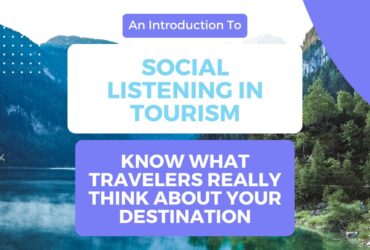
Social Listening in Tourism: A Key Tool for Destination Marketers

The Ultimate Guide to Brand Archetypes in Travel & Tourism
What does a tour guide do?
Would you make a good tour guide? Take our career test and find your match with over 800 careers.
What is a Tour Guide?
A tour guide provides assistance, information, and guidance to individuals or groups of tourists during their travels. Their primary role is to enhance the travel experience by sharing knowledge and insights about the destinations, attractions, and cultural aspects of the places being visited. Tour guides are well-versed in the history, geography, culture, and traditions of the locations they cover, and they use their expertise to educate and entertain the tourists.
Tour guides are responsible for organizing and leading tours, ensuring that the itinerary is followed, and the group stays on schedule. They may work in various settings, including cities, historical sites, natural landscapes, or cultural landmarks. During tours, guides provide commentary, answer questions, and engage with the tourists, creating an interactive and immersive experience. They may also assist with logistical matters, such as arranging transportation, coordinating entry to attractions, and recommending places to eat or shop.
What does a Tour Guide do?

Tour guides bring destinations to life by providing valuable expertise and insights. While guidebooks and online resources can offer information, tour guides offer a unique and personalized experience that cannot be replicated.
Duties and Responsibilities Tour guides have a range of duties and responsibilities to ensure a smooth and enjoyable travel experience for tourists. Some of the key responsibilities include:
- Planning and organizing: Tour guides research and plan tour itineraries, considering factors such as the duration of the tour, the interests of the group, and the availability of attractions. They arrange transportation, accommodation, meals, and any necessary permits or tickets, ensuring that everything is well-coordinated.
- Providing information and commentary: A primary role of tour guides is to offer informative and engaging commentary about the destinations being visited. They share historical facts, cultural insights, and interesting anecdotes to educate and entertain tourists. Guides should have a deep understanding of the locations, including their history, architecture, local customs, and traditions.
- Leading tours and managing groups: Tour guides are responsible for leading the group throughout the tour. They ensure that the group stays together, follows the itinerary, and adheres to any safety guidelines. Guides should have good organizational and leadership skills to manage groups of varying sizes and diverse backgrounds.
- Assisting with logistics: Tour guides handle practical aspects of the tour, such as coordinating transportation between sites, arranging entry to attractions, and managing timing to optimize the itinerary. They provide directions, answer questions, and offer recommendations for meals, shopping, and other activities.
- Ensuring safety and security: Guides prioritize the safety and security of the tourists. They inform the group about potential risks or hazards, and they take necessary precautions to prevent accidents or incidents. In emergency situations, guides should be prepared to provide assistance and follow appropriate protocols.
- Interacting and engaging with tourists: Tour guides create a welcoming and interactive environment for tourists. They foster a positive and friendly atmosphere, encourage questions, and actively engage with the group. Guides should be approachable and adaptable, catering to the needs and interests of the tourists.
- Resolving issues and addressing concerns: Tour guides act as a point of contact for tourists, addressing any concerns or issues that may arise during the tour. They handle complaints, resolve conflicts, and provide assistance or alternative solutions when needed.
- Promoting responsible and sustainable tourism: Guides play a crucial role in promoting responsible tourism practices. They educate tourists about local customs and cultural sensitivities, encourage respectful behavior towards local communities and the environment, and advocate for sustainable travel practices.
Types of Tour Guides There are various types of tour guides, each specializing in different areas and catering to specific types of tours. Here are some common types of tour guides and a brief description of what they do:
- City Tour Guides: City tour guides specialize in providing tours within a specific city or urban area. They are well-versed in the history, architecture, landmarks, and culture of the city. Their role is to guide tourists through popular attractions, historical sites, and local neighborhoods, offering insights and commentary along the way.
- Cultural Tour Guides: Cultural tour guides focus on highlighting the cultural aspects of a destination. They provide in-depth knowledge about local traditions, customs, festivals, and arts. These guides may accompany tourists to museums, art galleries, cultural events, or religious sites, helping them understand and appreciate the cultural significance of these places.
- Ecotourism Guides : Ecotourism guides are responsible for designing and planning itineraries that are environmentally and culturally responsible, researching the destination, developing educational materials, preparing necessary equipment, and coordinating logistics such as transportation, accommodation, and meals.
- Adventure Tour Guides: Adventure tour guides lead tours focused on outdoor activities and adventure sports such as hiking, rock climbing, kayaking, or skiing. They possess skills and knowledge in the specific activities offered, ensuring the safety of participants while providing guidance and instruction. Adventure guides may take tourists to remote and challenging locations, coordinating logistics and providing a thrilling experience.
- Historical Tour Guides: Historical tour guides specialize in providing detailed insights into the history of a destination. They are knowledgeable about specific historical periods, events, and significant landmarks. These guides often work in historical sites, monuments, or archaeological sites, sharing historical context and stories that bring the past to life for tourists.
- Specialized Tour Guides: Specialized tour guides cater to niche interests or specific types of tours. Examples include food tour guides who focus on culinary experiences, wine tour guides who provide expertise on vineyards and wine tasting, or art tour guides who lead tours in museums and art galleries, offering interpretations of artworks.
Are you suited to be a tour guide?
Tour guides have distinct personalities . They tend to be social individuals, which means they’re kind, generous, cooperative, patient, caring, helpful, empathetic, tactful, and friendly. They excel at socializing, helping others, and teaching. Some of them are also enterprising, meaning they’re adventurous, ambitious, assertive, extroverted, energetic, enthusiastic, confident, and optimistic.
Does this sound like you? Take our free career test to find out if tour guide is one of your top career matches.
What is the workplace of a Tour Guide like?
The workplace of a tour guide can be quite diverse and dynamic, offering a mix of indoor and outdoor environments. One aspect of their workplace involves cultural and urban settings. City tour guides, for instance, operate within bustling cities, leading tourists through streets, squares, and iconic landmarks. They may work in vibrant neighborhoods, historic districts, or cosmopolitan areas, immersing tourists in the local culture and urban atmosphere. These guides navigate through crowded streets, interact with locals, and provide insights into the city's history, architecture, and vibrant lifestyle. They may also lead tours in museums, art galleries, or cultural centers, where they can showcase the city's artistic and cultural offerings.
Another significant aspect of a tour guide's workplace is outdoor settings. Nature and wildlife tour guides find themselves working in breathtaking natural landscapes, such as forests, mountains, or coastal areas. These guides lead groups on hikes, nature walks, or wildlife safaris, sharing their knowledge about the local flora, fauna, and ecosystems. Their workplace is characterized by stunning scenery, serene environments, and opportunities for visitors to connect with nature. Adventure tour guides also operate in outdoor settings, taking tourists on thrilling activities like rafting, rock climbing, or skiing. They work in adventurous and often remote locations, ensuring the safety of participants while providing an adrenaline-pumping experience.
Additionally, the workplace of a tour guide can extend to various modes of transportation. They may lead tours on buses, boats, trains, or even walking tours, utilizing different forms of transportation to explore diverse attractions and destinations. This allows guides to provide a comprehensive experience, showcasing various facets of a region while offering comfort and convenience to tourists.
Tour Guides are also known as: Tourist Guide

Cohen’s tourist typology- The 4 major types of tourists
Disclaimer: Some posts on Tourism Teacher may contain affiliate links. If you appreciate this content, you can show your support by making a purchase through these links or by buying me a coffee . Thank you for your support!
Cohen’s tourist typology was one of the first major typologies developed in the travel and tourism space. If you are studying travel and tourism, you will probably be introduced to Cohen’s tourist typology at some point (and that’s probably why you are here now!). If you are wondering what this tourist typology is all about and how Cohen categorised his four major types of tourists, then you have come to the right place… read on….
Who is Erik Cohen?
What is cohen’s tourist typology, cohen’s types of tourists, institutionalised tourists, noninstitutionalised tourists, cohen’s tourist typology- 4 types of tourists, the drifter, the explorer, the individual mass tourist, the organised mass tourist, why is cohen’s tourist typology beneficial, types of tourists- further reading.

Erik Cohen is an Emeritus Professor in the Department of Sociology and Anthropology, Hebrew University of Jerusalem. Erik focuses his research in Social Anthropology, Sociological Theory and Tourism Studies. Erik is most well known for his work on tourist typologies published in the 1970s.

Cohen’s tourist typology is a model that aims to categorise tourists into different types. Cohen’s theory is well known as being the first to attempt to categorise types of tourists. Cohen derived this theory on the types of tourists based on his knowledge of sociology and anthropology and applied it to the context of tourism, he is not necessary a tourism specialist. Cohen’s theory was first published in 1972 in his article entitles ‘Towards a Sociology of International Tourism .
Whilst a lot has clearly changed in the tourism industry since the 1970, Cohen’s tourist typology has continued to be used as a guide for understanding the different types of tourists throughout the years by academics and tourism industry professionals.

The types of tourists identified by Cohen in his typology are based on a continuum- a spectrum that allows tourists to be placed at some point between the familiar and the novel. Essentially, Cohen teaches us that there are many different types of tourists, some who seek familiar experiences (such as familiar food chains, branded accommodation options that they know or languages that they can speak), others who seek entirely new experiences (new cultures, new locations, new languages etc) and those who fall somewhere in between.

In Cohen’s tourist typology there are two groups of tourists- the institutionalised tourists and the noninstitutionalised tourists. Lets take a look at what these are-
Cohen describes institutionalised tourism as the organised mass tourism . This is the tourism industry that is designed to make the tourist experience as smooth and as organised as possible. There are a number of tourism agents involved with institutionalised tourism, such as travel agents , tour operators and tourism resorts. Institutionalised tourists experience novelty with the comforts of the familiar.
Cohen’s noninstitutionalised tourists are the opposite of institutionalised tourists. These types of tourists do not seek the commodified products and services that the mass tourism industry provides, instead, the institutionalised tourist seek deep immersive and experiential travel experiences that cannot be obtained through institutionalised tourism. These types of tourists travel independently and are often in search of adventure, the new and the unfamiliar and authenticity .
Cohen breaks down his tourist typology further, suggesting that there are four main types of tourists:
The first two types of tourists (the Drifter and the Explorer) are deemed noninstitutionalised tourists and the latter two (The Individual Mass Tourist and the Organised Mass Tourist) are examples of institutionalised tourists. Now, lets take a deeper a deeper look at what each of these four types of tourists are…

The Drifter is the type of tourist that is least connected with the mass tourism industry. Drifters typically have an authentic and deep immersive experience, opting for staying with members of the local community rather than in hotels and spending their time in the local community. They seek adventure and plan their own itineraries. This type of tourist always opts for novelty over familiarity- you won’t see a Drifter eating in McDonalds or shopping in Zara!

This type of tourist is similar to a Drifter in that they seek novelty over the familiar, however Explorers do often have a little more interaction with the commodities associated with the tourism industry. For example, an Explorer may travel independently and enjoy an immersive cultural experience, but they may rest their head on a hotel pillow at the end of the day. This type of tourist will generally eat and shop local, but don’t be surprised if they enjoy a Big Mac from time to time too.

In Cohen’s tourist typology the Individual Mass Tourist seeks the familiar. This type of tourist wants familiar food, they want to be able to communicate in a familiar language and they want to stay in types of accommodation that they are familiar with. However, the Individual Mass Tourist is not constrained by the likes of group tours and activities- yes, they may book their holiday through a travel or use a local tour guide, but they will typically opt for solo travel over group tours.

The last of the types of tourists outlined in Cohen’s tourist typology is the Organised Mass Tourist. The Organised Mass Tourist seeks the familiar in the same way that the The Individual Mass Tourist does, however, they tend to do this as part of an organised group. This type of tourist seeks the familiar over novelty every time and they are often found with tour guides and undertaking group tours. The Organised Mass Tourist will generally have an itinerary or a plan and they will stick to it.
Whilst we can easily criticise this theory for being too generalised and for accounting for the specific and the individual, there is no questioning that it does have real-world value. By better understanding the different types of tourists tourism businesses and tourism industry stakeholders can better provide for the tourists- they can tailor their products and services better, they can understand the tourist demands and desires and they can help to improve the overall quality of the tourism provision that is offered to particular tourists.
There are many academic studies which utilise Cohen’s tourist typology as a means to understanding particular issues within the tourism industry, you can see one example here .
If you have found this article helpful, you may also enjoy these-
- Butler’s Tourism Area Life Cycle Model: A simple explanation
- Leiper’s Tourism System: A simple explanation
- 150 types of tourism! The ultimate tourism Glossary
- The mass tourism industry EXPLAINED
Liked this article? Click to share!

11 BEST Travel Guides for 2024 [Websites & Guidebooks]
* This article contains affiliate links, which help run this site at no extra cost to you.
TL;DR: The two best travel guides are Rick Steves for first time travelers—especially anyone going to Europe—and Bradt Guides for off-the-beaten-path destinations and “Slow Travel.” Both are reliable, will give you ideas for what to do, and help you plan the best trip.
The way we travel has changed drastically in my lifetime. Information is more readily available in the digital age, a massive plus for traveling.
Everyone, including myself, wants to make the most of every trip abroad. That’s why I love reading travel guide books or online guides.
Some of these guide books help you get off the beaten path. Others give information on tours you can take on your own to learn the history of a certain destination you’re visiting.
But which are the best?
After years of reading and doing research, I have found the best travel guides for you to use when planning your next trip abroad!
Note: this article contains affiliate links, which help run this site at no extra cost to you so I can keep providing free travel advice and tips.

Here’s a quick look at our recommendations
- DK Eyewitness
- Bradt Guides
- Rick Steves
- Lonely Planet
- Blue Guides
- Footprint Guides
- Frommer Guides
- Tripadvisor
- Rough Guides
- Moon Travel Guides
- Insight Guides
#1 DK Eyewitness
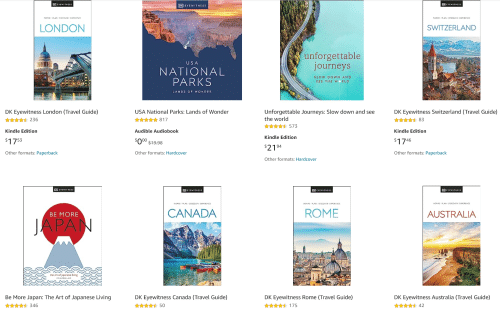
DK Eyewitness is one of the best travel guide books on the market today. But they offer more than just travel information.
After publishing books for over 45 years, DK Eyewitness Books cover everything from travel, science, history, pop culture, and children’s topics.
Their travel guides give the information you desperately need for travel– such as maps, itineraries, accommodations, where to eat, and more!
I also love how easy their visuals are to look at. I sometimes get lost in their maps and start imagining myself there (I’m a big daydreamer if you can’t tell!).
DK Eyewitness Travel guide books might not be the most in-depth on a particular location, but they help with travel inspiration.
If you want more information, DK Eyewitness has a podcast called ‘Where to Go,’ which is another excellent way to get your travel information on the go!
- 100+ destinations
- Heavy on history
- It has both outdoor and city guides
- Amazing visuals
- Not as in-depth as other guides
#2 Bradt Guides
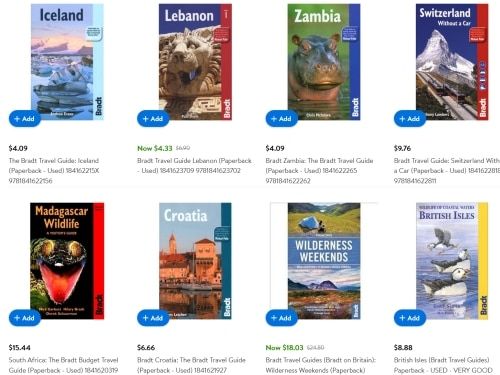
A Bradt travel guide is perfect if you’re interested in visiting countries that are less traveled to— written by experienced travelers with fantastic insider tips.
Bradt travel guide books has a reputation as the “World’s leading independent travel publisher.” They are also the best India travel guide company.
Some unique destinations include Iraq, Sri Lanka, Galapagos Islands, and Grenada. But don’t worry. Bradt Guides also has a British series for those interested!
Lately, I’ve been striving to travel like a local. Bradt has a ‘Slow Travel’ guidebook series, which I love using these days because it helps me travel like a local.
The trip ideas are great in detail but might not be for your preferred country to visit.
Bradt Guides prides itself on being the most comprehensive on the market. Their authors give cultural insights and expressions of interest and knowledge.
You can support Bradt’s Guides even further by subscribing to their Patreon! Here you can pay monthly for a specific tier and earn different things like one free e-book a month.
- More off-the-beaten-path destinations
- Slow travel series
- Has a Patreon page
- Unique style of travel not for everyone
#3 Rick Steves
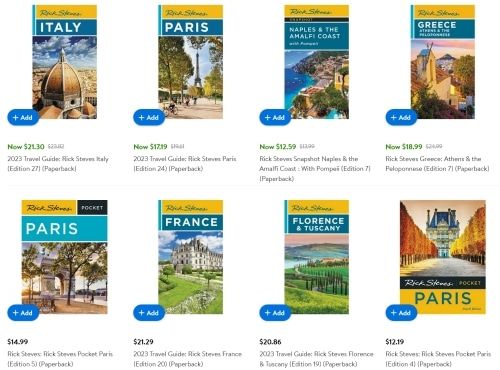
Rick Steves books are the guide books your mom hands you when traveling to your dream destination in Europe. And that’s a good thing! They’re trusted by many for a reason.
These travel guide books are always up-to-date, thanks to Rick Steves’ research partners.
Rick’s books will have you feeling like you’re on guided tours! He ensures you’ll have some fantastic cultural experiences.
I love Europe, but there are many other cultures throughout the world that I’m even more interested in. So, since Rick Steves’ guidebooks are primarily Europe-focused, I’m not as drawn to them.
Also, traveling in Europe long-term can get expensive. His books cater to a more wealthy crowd.
Pick any European country, and you will have high-quality content on that destination. Rick has visited Europe countless times, and other travel websites can’t compete.
Rick’s bestseller is his Italy guide, which isn’t surprising. In that guide, he goes over the best places to eat and sleep and how to beat the crowds.
It’s a good idea to grab a Rick Steves’ book simply for the detailed maps.
- Best guides for Europe
- It gives in-depth information for solo tours
- Perfect for a beginner traveler.
- Catered to upper and middle-class travelers
#4 Lonely Planet

I’m sure you’ve heard of Lonely Planet , as they’ve been a dominant force in the travel scene for quite some time now. Their goal is to make travel planning easy, and they’ve succeeded!
I loved using Lonely Planet books when I first started traveling. These books helped me up my game as a budget traveler.
Lonely Planet dominates the internet with a wealth of online resources. While the information they offer online is easy to access, it can be vague.
You can subscribe to Lonely Planet on their website for free. I’ve done this, but I’ve found that there tends to be some destinations/articles that are low in detail.
Considering Lonely Planet’s sheer amount of content, it’s not too surprising that they sometimes gloss over details.
Their claim to fame is their numerous experts located worldwide. These experts cover adventure travel, family holidays, food and drink, and much more.
Plus, a Lonely Planet magazine is an amazing coffee table piece, am I right?
- Backpacker friendly
- An extensive collection of guides for the entire world
- Free information is available
- Some of their content is outdated or not detailed
#5 Blue Guides
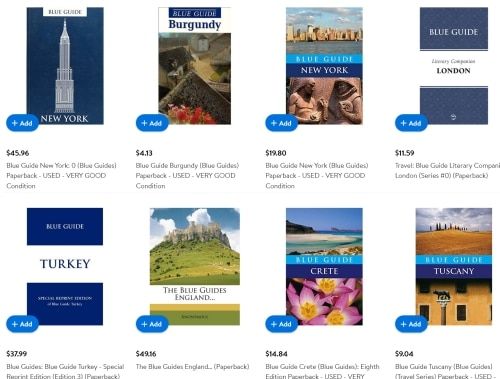
If you love the art and history of Italy, then Blue Guides is for you! People often plagiarize Blue Guide books due to the amount of accurate information each book has.
With over 14 books on Italy alone, you won’t find more detailed information on a particular destination than with Blue Guides– they deliver it all!
Italy was the first country that I visited outside of the United States, and I’m so glad that I had a Blue Guide book with me.
Their award-winning maps and exceptional attention to detail made it feel like I was on a private tour!
Be aware: there aren’t a lot of online articles from Blue Guides or many countries to choose from, which could be an issue if you like to visit more unusual locations.
Blue Guides’ first publication date was in the early 1900s, so it’s undoubtedly a top guidebook for a travel junkie!
- Helps travelers understand art and history
- Multiple guides on Italy
- Extremely thorough in their research
- Not a lot of destinations
#6 Footprint Guides
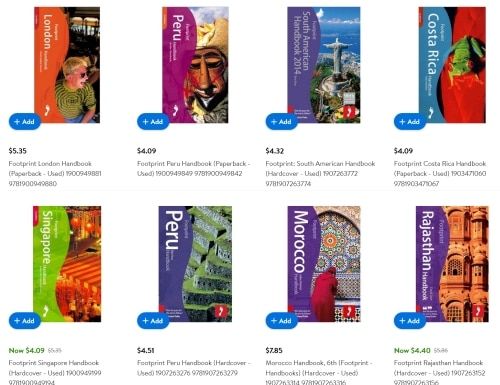
Footprint Guides is the go-to source for Latin American travel tips for all budgets! My love for this region of the world has only grown since I started using their books.
Even if Latin America isn’t one of your top destinations, they do offer other print books. All Footprint Guides are written by experts who have lived in that destination.
Unfortunately, for North American travelers looking to plan a dream road trip, you won’t find much helpful information here, as their focus is decidedly on the south.
Alongside their practical information, Footprint adds a layer of imagination to their guidebooks, giving them an edge that makes them one of the best travel guide series available today!
- Wide range of budgets
- Specializes in Latin America
- Practical information
- Not much content on the United States
#7 Frommer Guides
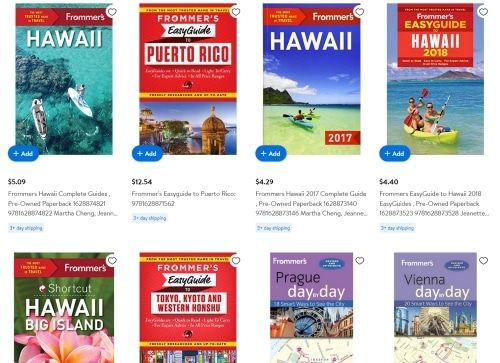
Does traveling on $5 per day sound appealing to you? Arthur Frommer thought so when he set out to create his Frommer travel guides .
Alongside some of the best guidebooks, Frommer also offers other forms of information, including podcasts, online articles, and hotel deals!
I love using Frommer guides on road trips because they help me in many different situations.
I usually like to have a podcast for when I’m driving , a guidebook on specific destinations while I’m in a hotel room, and online sources when on the go.
Having Frommer guides in all their varied forms is essential since each one typically doesn’t go into heavy detail.
If purchasing travel guide books doesn’t interest you, then keeping up to date with Frommer’s online travel guides is the way to go.
- Many styles of information are available
- Updates information frequently
- Offer hotel deals
- It covers only the main details
#8 Tripadvisor

Tripadvisor is an online source that most travelers have heard about. It’s unique on this list of travel guides because you interact with other travelers!
If you’re looking for help with trip planning, look no further than the Tripadvisor forum . Here you can talk with fellow travelers about your upcoming trip!
When I have a specific question that needs answering, I always check Tripadvisor first. They have information on most countries, but some info on the forums can be outdated.
Tripadvisor is great because it’s free! But they’re more than just a review and forum-based platform; you can also book different travel deals and tours through their website.
Sometimes the sheer amount of information can be overwhelming to click through. If that sounds relatable, you might want to purchase some guidebooks instead.
Tripadvisor started the wave of online travel planning. They’re worth browsing, even if you just want to write down a few travel tips!
- Multiple reviews from other travelers
- Travel deals available
- Forum can be out of date
- The massive amount of information can be overwhelming
#9 Rough Guides

Rough Guides has grown into a leader in the travel industry with its amazing travel guidebooks and online travel guides.
What I love about these books is their authenticity. Their recommendations from locals helped to grow them into who they are today.
It all started with their Greece travel guide, and it quickly blew up. Demand increased for more and more Rough Guide content; they released a guidebook series for people who were eager for more. In 2017, Rough Guides expanded even further.
Today Rough Guides are more than just a travel guide company that sells books. They offer tours, custom-made itineraries, and more! I love using their website when planning my next trip.
These custom-made itineraries and tours are expensive but for a reason. Rough Guides’ experts are located worldwide to give you the best travel experience ever.
Rough Guides best selling guides offer a ton of background information and local tips, making them worth the high price!
- Detailed itineraries
- Personal recommendations from locals
- An extensive list of countries
- High prices for tours and custom itineraries
#10 Moon Travel Guides
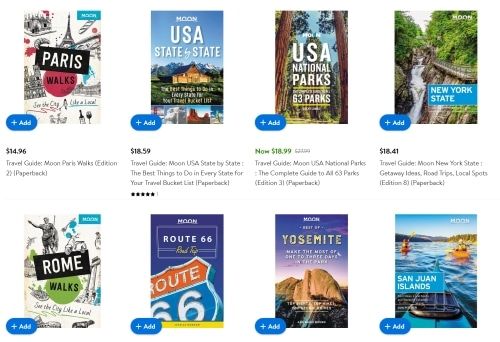
Moon Guides are my favorite guidebooks for traveling around the United States. Planning that perfect road trip is challenging but Moon Guides makes it easier.
Moon’s travel guidebooks are all about traveling sustainably. I’ve used them countless times in the Americas and have found them super helpful.
But Moon Guides don’t focus on the Americas only– they also offer some of the best travel guides for Japan in particular.
I’ve learned to use these books more for research instead of bringing them on my travels– they don’t always hold up with how rugged traveling can get for me.
Moon’s detailed maps are so good in their guidebooks that I fill my phone library with them. They are easy to read and use, which is what I think makes a good map.
The best travel tips are from locals, and that’s what Moon’s travel guidebooks bring. They don’t have a fancy touring app or anything, but they don’t need it.
If you want one of the best travel guides for families, then there’s no better choice than making Moon Guides your tour guide when traveling.
Find your dream destination, get travel inspiration from their maps, and book that plane ticket.
- Emphasis on the Americas and the Pacific
- Easy-to-understand maps
- Many pages of information solely for hotels/accommodations
- Guidebooks aren’t durable
#11 Insight Guides

Insight is one of the best travel guidebooks on the market for a reason. The beautiful photographs in these travel guidebooks will have you daydreaming for days.
Insight guides are perfect for those history buffs out there like me. They combine great information with also some off-the-beaten-track activities.
Insight has produced over 200 guidebooks and language books. Their books provide information on nearly any country you can think of (besides Mexico).
I love their books because they also have a mini-series.
During the Covid years, I was in the mood to read a lot. I picked a different destination each week and bought a new e-book.
I could do this because they only cost five to ten dollars! Most of the best travel guidebooks are double this.
Besides its guidebook series, Insight offers a handmade trip planned by experts to the destination of your choice. What more could you ask for?!
- Multiple countries in each continent
- Has language guides
- Sells hand-picked vacation packages put together by locals
- Offers mini versions of guides to sell for cheap
- No Mexico guide
Buying Guide: How to Choose the Best Travel Guide
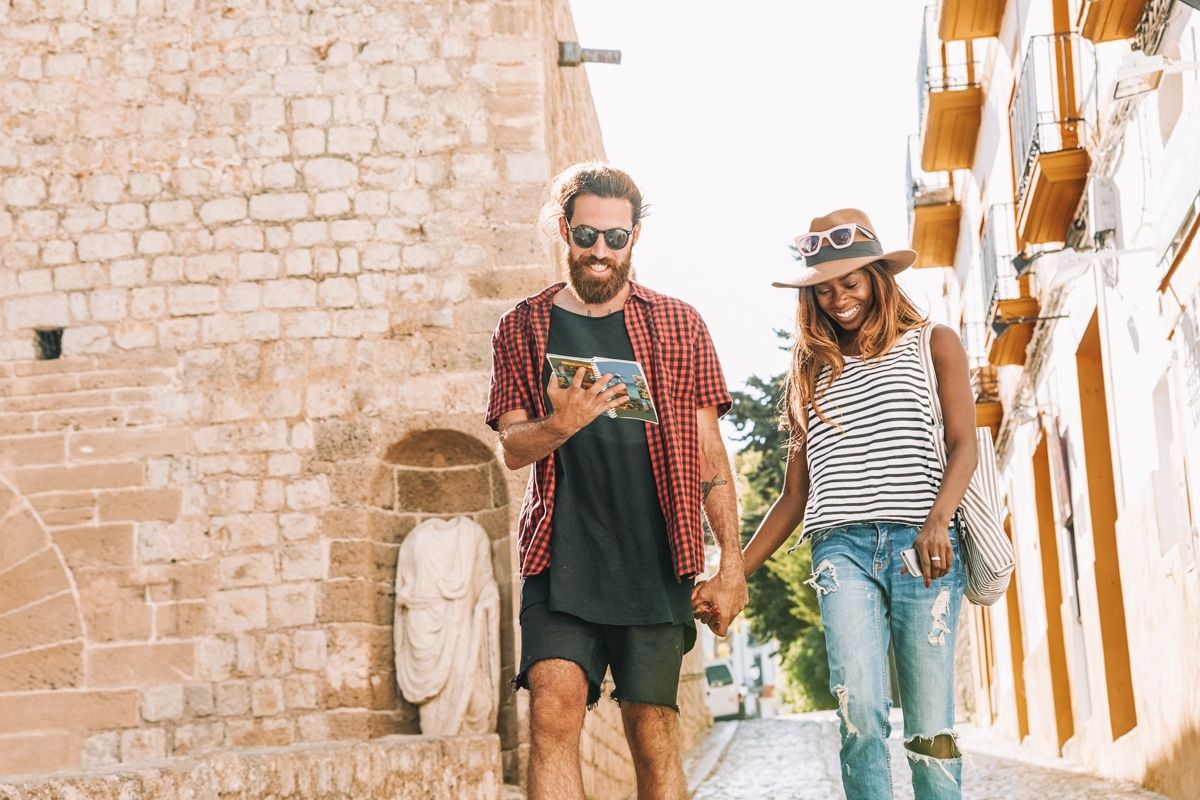
What to Look for in Travel Guides
Is the information up to date.
Picking the best travel guidebooks can be an overwhelming process. But the most important thing to watch out for is making sure the information is up-to-date.
Compared to online sources, guidebook information tends not to get updated as quickly for obvious reasons.
You don’t want a travel guide taking you to a restaurant that doesn’t exist anymore, do you? No. You want to get off the beaten track but not THAT off that it gets you lost.
Pick Locally-Based Travel Guides
My ideal travel style is meeting locals, living, and eating like a local. I have the best travel experiences when I dive deep into the culture.
The best information about a destination comes from locals. When you’re planning a trip to Costa Rica, wouldn’t you want to consult someone who has lived there for many years?
When you rely on locals’ recommendations, you’ll truly have an experience of a lifetime.
Know What Type of Traveler You Are

This next tip can be difficult for some, and it can change from year to year. I have gone from being a true budget traveler to somewhere in the middle.
I used to love history (I still do) and would base my travels around that. Now I seek adventure activities.
Different types of guides will focus on different things, such as budget travel, adventure, expensive tours, food, or history.
Finding the travel guide that fits your style will be more beneficial in the long run.
Know Which Destination You Want to Visit the Most
The best world travel guidebooks are often better for certain locations than others. For example, Rick Steves has a reputation for being the best travel guide for Europe and, specifically, the best travel guide for Italy.
So, choose your travel guide based on which one specializes in the area you’re curious about.
Other Helpful Travel Guides
Travel is a huge industry which means there are more guides than you could ever possibly use.
If you prefer your travel content in video form, one of the best travel guide Youtube channels is Ryan Shirley .
His videos showcase the top places to visit in different countries with some of the best drone shots you’ll ever see.
FAQs About Travel Guides

Should You Even Buy a Travel Guide?
A travel guide has its place. It may seem outdated to use one, but you can find some of the best information in them.
Some guides take years to make and are very specific in the details they write for certain locations. The maps tend to be better and easier to read in these types of guides as well.
Which is better: Lonely Planet or Rough Guide?
It depends on the style of travel you prefer. I prefer budget travel and tend to take fewer tours, so I like Lonely Planet. Rough Guide also has amazing tours if you’re interested in those.
What is the difference between Fodor’s and Frommer’s travel guides?
Frommer travel guides are excellent for those who want an easy read. Fodor is typically the better choice if you want more details about your activities.
Fodor also has one of the best travel guides for Ireland, so check out Fodor if that’s your destination.
Is it better to travel with a tour guide or alone with a travel guide?
The answer differs from person to person! If you want your trip planned, then a tour guide is perfect. Going alone with a travel guide is nice because you can go at your own pace.
Do people still buy travel guides?
Absolutely! There’s something different about having a travel guidebook to look at rather than scrolling through a website.
Rick Steves and Bradt are my favorite travel guides.
ABOUT THE AUTHOR

Phillip Anderson
Phillip Anderson is a freelance travel writer, personal trainer, and adventure enthusiast. With years of travel experience under his belt, Phillip is an expert in finding the best deals through travel apps and websites. He knows how to find cheap domestic and international flights, like a flight to Peru for as low as $350.
When looking for cheap accommodations, Phillip combines his knowledge of websites like Airbnb, Booking.com & Hostelworld with more unique sites like TrustedHousesitters, for even more savings. Whether it’s flights, accommodations, or local experiences, he teaches travelers to make informed decisions, ensuring their adventures are both memorable and economical. For more from Phillip, check out his website, JaywalkTheWorld.com.
Planning your next big adventure? Check out these related articles below!
Skiplagged Review
Best Airbnb Alternatives
Hopper Review
Best Travel Deal Sites
Best Hardside Luggage Sets
Best Travel Purses
Pakt One Review
Best Travel Gifts
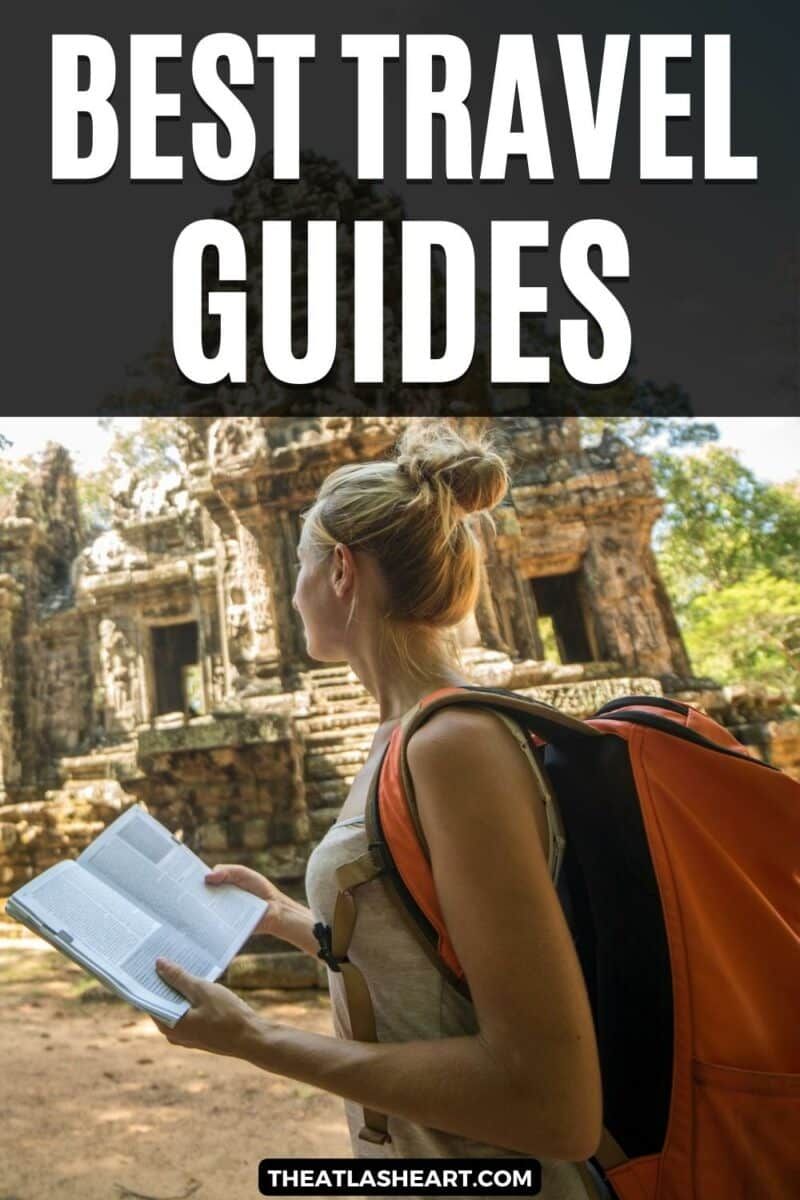
Pin this image for future reference

Hi, I'm Mimi! I'm an outdoorsy Californian who has spent over 28 years immersed in the incredible natural beauty that California has to offer. My goal is to inspire others to get out and find their next adventure in California. Whether it’s escaping to an alpine lake in the Sierras, finding peace among the giant redwoods, or road tripping down the PCH, there’s always more to explore in this beautiful state.
Leave a Comment Cancel reply

The Atlas Heart is a California travel website dedicated to showing you the best of the Golden State from a local perspective.
As an Amazon Associate, I earn from qualifying purchases.
©2024 The Atlas Heart
Guide To Different Types Of Tourism And Their Features
Home » Corporate Travel » Guide To Different Types Of Tourism And Their Features
Since the beginning of time, travel has been an indispensable part of human life. In the modern world, the various aspects of travel have been accommodated into an organized word ‘Tourism’. With the ease of booking travel, the industry has grown rapidly over the past few decades. Therefore, it becomes important to segregate the industry into various types for convenience of defining the purpose of each kind of travel. Let us explore some of the main types of tourism and how they differ from each other.
Different types of tourism
1. leisure tourism.
Evident from the names, leisure tourism entails the activities and locations that will help one unwind, relax and enjoy the various aspects of their trip. Typically, leisure tourism includes an escape into the natural landscape, exploring manmade architectures while staying at a comfortable and hospitable accommodation. The tourists on leisure travel will book a stay in the luxury resort or can take shelter in offbeat homestays. It is generally an amalgamation of numerous things to do such as trying local cuisine, going shopping in the regional market, and participating in recreational activities.
- Focuses on relaxation and enjoyment
- Involves sightseeing, shopping, and cultural experiences
- Often centered around beach vacations, city breaks, and entertainment
- Offers a break from routine and an opportunity to recharge
2. Business Tourism (MICE)

Business tourism or MICE tourism (Meetings, incentives, conferences and exhibitions) explores the realm of trips taken by the employees of various organizations. As working professionals, individuals are expected to attend meetings, conferences, seminars, exhibitions and other events to expand the reach of the business. Business tourism requires meticulous planning, budget forecasting, and comprehensive reporting by the admins and employees both.
- Serves professionals attending meetings, conferences, and exhibitions
- Provides networking opportunities and knowledge sharing
- Contributes to economic development and industry growth
- Requires specialized facilities and services to cater to business needs
3. Adventure Tourism
Among the most exciting types of tourism, adventure tourism brings in the opportunity to indulge in thrilling activities revolving around natural settings. The exhilaration and physical challenges involved in this kind of tourism makes it rank among the top tourism types. The activities include skydiving, paragliding, base jumping, rafting, dune bashing, and whatnot. The excitement only gets elevated when friends and family are involved during the activities.
- Emphasizes exciting and challenging experiences
- Includes activities like trekking, rock climbing, and bungee jumping
- Appeals to thrill-seekers and those seeking adrenaline rushes
- Provides opportunities for personal growth and pushing boundaries
4. Cultural Tourism
Cultural tourism allows travelers to immerse themselves in the traditions, history, and lifestyle of a destination. The engagement required in cultural tourism is of the highest level. Tourists can visit various museums, historical sites, art galleries, traditional markets and much more. Additionally, the opportunity to meet the local community and participate in various events increases the fun all the more.
- Centers around exploration of a region’s history, traditions, and arts
- Involves visiting museums, historic sites, and attending cultural events
- Encourages interactions with locals to learn about their way of life
- Enhances cross-cultural understanding and appreciation
Suggested Read: Top 10 Business Travel Management Companies In India
5. Ecotourism
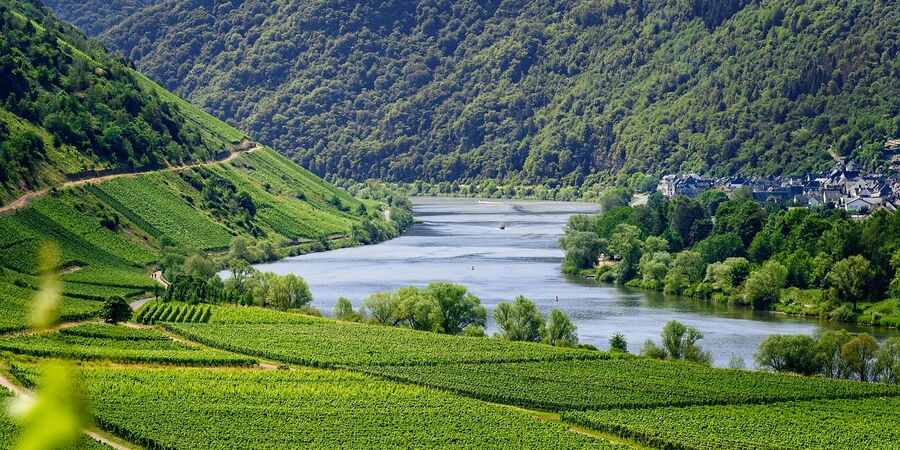
It is the type of tourism that deals with responsible travel to natural areas. Ecotourism promotes conservation of natural resources for the utilization of the future generations and consolidates sustainability. Travelers experience nature firsthand through activities like bird watching, nature walks, and wildlife safaris. The goal is to appreciate and protect the environment while supporting local authorities and communities.
- Focuses on responsible travel to natural areas
- Aims to support conservation efforts and sustainable practices
- Includes wildlife observation, nature walks, and eco-friendly accommodations
- Offers opportunities to connect with nature and learn about ecosystems
6. Culinary Tourism
Culinary tourism is a delightful and immersive way to experience the heart of any destination – its food. It focuses on inviting travelers to try top authentic food of any specific country or region. Travelers savor the flavors, aroma, and traditional cooking techniques of local cuisines. The journey involves visiting numerous restaurants, participating in food events, going to offbeat destinations for original tastes, meeting worldwide chefs and much more. Travelers may also be enticed to cook alongside a teacher and learn new ways of cooking.
- Revolves around exploring local cuisine and food culture
- Includes food tasting, cooking classes, and market visits
- Provides insights into regional flavors, ingredients, and cooking techniques
- Celebrates the role of food in cultural identity
7. Pilgrimage
Religious tourism or pilgrimage is a type of tourism involving spiritual upliftment of the travelers by visiting sacred sites, places of worship, and participating in religious events. It offers travelers a chance to know more about various religions while learning about the different practices of diverse cultures. Many travelers and worshippers believe it to be an opportunity to unite with God and find peace in their lives.
- Focuses on visiting sacred sites, pilgrimage destinations, and religious events
- Provides spiritual experiences and connections to faith traditions
- Involves participating in rituals, ceremonies, and cultural practices
- Encourages reflection and personal growth
8. Wellness Tourism
To calibrate well-being, individuals can head to wellness tourism. Rooting from the seeds of self-care, well tourism provides the various leaves and branches for a holistic development and rejuvenation. Common activities may include spa escapes, yoga practices, sampling nourishing and healthy food, massages, etc. Hiking and trekking can also be part of the wellness plan. Tourists can visit various wellness centers for the betterment of body and mind.
- Centers on promoting physical and mental well-being
- Involves spa treatments, yoga retreats, and meditation practices
- Offers relaxation, stress relief, and rejuvenation
- Emphasizes self-care and a healthy lifestyle
9. Rural Tourism
Rural tourism presents a serene escape to the idyllic countryside. It’s a journey that invites individuals to step away from the bustling urban landscape and embrace the simplicity and authenticity of rural living. Encompassing an array of enriching experiences, rural tourism offers the chance to participate in hands-on activities such as farming, tending to animals, and partaking in time-honored rural traditions.
- Offers a retreat to rural areas and countryside
- Involves farm stays, agricultural activities, and rural experiences
- Provides a chance to reconnect with nature and experience traditional lifestyles
- Supports local communities and sustainable agriculture
Tourism is a vast industry expanding with every day of the year. Though there are numerous types of tourism, embarking on the journey with a purpose remains constant. Hope the blog was able to provide you with the basics of various types of tourism and how the industry spreads out in several other branches.
Suggested Read: 7 First Time Business Travel Tips For A Flawless Trip
Types Of Tourism FAQs
What are the key features of leisure tourism.
Leisure tourism emphasizes relaxation and enjoyment, involves sightseeing, cultural experiences, and is often centered around beach vacations, city breaks, and entertainment. It offers a break from daily routines and a chance to recharge.
What are the distinctive features of business tourism (MICE)?
Business tourism provides networking opportunities, contributes to economic development, and requires meticulous planning, budgeting, and reporting.
What is ecotourism, and what is its primary focus?
Ecotourism is a type of tourism that promotes responsible travel to natural areas. Its primary focus is on conservation of natural resources, sustainability, and experiencing nature firsthand through activities like wildlife observation, nature walks, and eco-friendly accommodations.
Pratyush is a traveling enthusiast who always looks for innovations in business travel management. He has 5 years of experience writing content on corporate travel management and working closely with expert business travel facilitators.
Related Posts

Top Tips On Corporate Hotel Booking In Dubai
Dubai is a city of wonders and one of the biggest business centers in the Gulf. It has numerous corporate offices, tourist destinations, and shopping complexes. The continuous influx of professionals and tourists have offered Read more…

Corporate Travel
4 grand business hotels in pune, maharashtra.
Pune, a city renowned for its thriving business environment, is home to a selection of top-tier hotels that cater to the discerning needs of business travelers. These establishments seamlessly blend modern amenities, strategic locations, and Read more…

Top Car Rental Apps With Pros And Cons
Availing car rentals sounds like a task that involves long queues and tons of paperwork. However, the ground reality has changed drastically over the years. Modern day car rental services use intuitive applications for conducting Read more…
Let's get started!

Thanks for submitting your details.
We'll get back to you shortly.
CAREER PATHWAYS
Looking for the perfect job? Explore our Career Guides!
How to Become a Tour Guide
By Alyciah Beavers
Published: February 28, 2024
If you’ve been wondering how to embark on a fulfilling journey as a tour guide, this article is your roadmap to a career that lets you explore the world while sharing its wonders with others. Here, we discuss the role of a tour guide, how to become one, and some of the tour guide skills you should possess. Plus, we’ll delve into what the tour guide salary is like, helping you make an informed decision about this exciting profession.
Career Summary
Tour guide salary.

Are you wondering how much a tour guide earns in the United States? Well, the average tour guide salary is $40K per year. However, there is an estimated addition of $18K each year in bonuses, commissions, profit sharing, and tour guide tips from clients.
According to Glassdoor , here is the breakdown per each level:
- Entry Salary (US$45k)
- Median Salary (US$59k)
- Executive Salary (US$79k)
According to the Bureau of Labor Statistics (BLS), the average wage in the US is $61,900, meaning that tour guide salary falls behind the national average of other occupations.
What does a Tour Guide do?
A tour guide, also called a tour leader or local guide, plays a considerable role in promoting and preserving a town, city, organization, or country’s historical and cultural heritage. These are certified professionals licensed to lead other people on trips and tours while providing an informative, educational, and enjoyable experience.
Tour Guide Career Progression
- Entry-Level Tour Guide : Leading basic tours, assisting with logistics, and providing introductory information to tourists.
- Tour Guide : Leading a variety of tours, providing in-depth information, and ensuring an enjoyable experience for tourists.
- Senior Tour Guide : Taking on more complex and specialized tours, training and supervising junior guides, and often acting as a point of contact for clients.
- Specialized Tour Guide : Specialized tour guides focus on specific niches or interests within the industry, such as history, art, adventure, wildlife, or culinary tours.
- Tour Manager : They oversee the logistics and operations of multiple tours and ensure that all aspects of a tour, including transportation, accommodations, and activities, run smoothly.
- Tour Company Owner or CEO : At the highest level, a tour company’s executive director oversees the entire business. They set the company’s vision, strategy, and direction, manage financial aspects, and make critical decisions impacting its growth and success.

The Pros and Cons of Working as a Tour Guide
- You will live your dream and share your exploration and traveling passion with others.
- It is an opportunity to interact and relate with people from diverse walks of life and learn about different cultures.
- You are constantly learning about the history, culture, and geography of the places you guide.
- It is an opportunity to assist people in having memorable experiences and creating lasting memories.
- Tour guides may have to give the same tour multiple times daily, leading to repetition and potential monotony.
- Career growth and advancement opportunities may be limited for tour guides, as it’s often a front-line, customer-facing role.
- Sometimes, tour guides must work in various weather conditions, which can be uncomfortable and challenging.
- Guides may need to work with tourists who speak different languages, creating communication challenges.
Useful Tour Guide Skills to Have
- Communication Skills
- Interpersonal Skills
- Public speaking Skills
- Storytelling Skills
- Multilingual Skills
Popular Tour Guide Specialties
- Historical and Cultural Tours
- Culinary Tours
- Wildlife and Eco-Tours
- Religious and Spiritual Tours


Do I Need A Degree To Become A Tour Guide?
You only need a high school diploma to become a tour guide. However, different tour guide jobs need a degree. For example, to become a tour guide in a museum, you might require a degree in history-related fields.
Here are some key points to consider in determining whether to get a degree or not:
- Location and Regulations : The requirements for becoming a tour guide can vary by country and region. Some places may have specific regulations or licensing requirements for tour guides, which may or may not include the need for a degree. It’s essential to research the rules in your specific area.
- Type of Tours : The tours you want to guide can also influence the educational requirements. For example, leading historical or cultural tours may require more specialized knowledge and may be more likely to necessitate a degree in history , art, or a related field.
- Tour Company or Organization : Some tour companies or organizations may have specific requirements. Some may prioritize experience, personality, and local knowledge over formal education, while others may prefer candidates with relevant degrees or certifications.
- Tourist Demands : Understanding the needs and interests of the tourists you plan to guide is crucial. Some tourists may prefer guides with in-depth knowledge, which a degree can provide, while others may prioritize guides that offer a unique and engaging experience.
- Language Skills: Fluency in one or more languages can be a valuable asset for a tour guide. Language proficiency may sometimes be more important than a formal degree.
- Local Knowledge : For tours in a specific location, deep local knowledge, history, and cultural insights are often precious. This kind of expertise doesn’t necessarily require a formal degree.
What are the Benefits of Getting a Degree in Tourism?
Getting a degree in tourism can be important for several reasons, depending on your career goals and the specific context of the tourism industry in your region.
Here are some reasons why obtaining a degree in tourism can be beneficial:
- Knowledge and Expertise : A degree in tourism provides a comprehensive understanding of the local culture, history, geography, and other relevant information about the destinations you’ll be guiding people through. This knowledge can enhance the quality of your tours and make you a more informative and engaging guide.
- Professionalism : A degree can help you develop the tour guide skills and professionalism required to excel in the field. You’ll learn about customer service, communication, and safety protocols, which can enhance the overall experience for tourists and ensure their safety.
- Legal and Regulatory Requirements : Tour guides must be licensed or certified in many places, and a degree in tourism can help you meet these regulatory requirements. It can also provide a strong foundation for passing required exams or assessments.
- Career Advancement : A degree can open up more career opportunities within the tourism industry. For example, you might qualify for higher-paying positions, such as managing a team of guides or working as a travel consultant or planner.
- Networking : While pursuing a degree, you’ll have the opportunity to network with other students, professors, and industry professionals.
- Global Perspective : Some tour guide programs cover international tourism, which can be especially valuable for working in a worldwide or cross-cultural context. It can help you understand the needs and expectations of tourists from diverse backgrounds.
How Long Does It Take To Get A Degree In Tourism?
The time it takes to earn a degree in tourism can vary depending on several factors, including the degree level and whether you’re pursuing the degree full-time or part-time.
Here’s a general overview of the different types of degrees in tourism and their durations:
- Certificate in Hospitality and Tourism : It takes at least two weeks to complete a certificate in tourism and hospitality, where you will also get on-site training.
- Associate’s Degree : An associate’s degree in tourism or a related field takes around two years of full-time study. You will find these programs at community colleges or vocational schools.
- Bachelor’s Degree : A bachelor’s degree in tourism or hospitality management takes about 3 to 4 years of full-time study. The exact duration can vary by country and specific program requirements.
- Master’s Degree: A master’s degree in tourism or a related field usually takes 1 to 2 years of full-time study after obtaining a bachelor’s degree. Some programs may offer accelerated options, and the duration may also depend on the specific master’s program.
How Much Does It Cost To Study Hospitality And Tourism At University?
The cost of studying Hospitality and Tourism at a university can vary widely depending on several factors, including the region where you choose to study, the specific university or college you attend, your residency status, and the level of the program, whether undergraduate or postgraduate.
On average, public colleges charge $9,300 per year for in-state students, whereas out-of-state students pay $26,400 for a bachelor’s degree .
Here are factors that can influence the cost:
- Location : Tuition fees can vary significantly from one state to another.
- University : The reputation and ranking of the university can impact tuition costs. More prestigious universities may charge higher tuition fees.
- Degree Level : Undergraduate programs are typically less expensive than postgraduate programs such as a master’s program.
- Duration of Program : Longer programs will cost more than shorter ones.
- Additional Costs : Consider other expenses, such as housing, textbooks, transportation, and living costs, when calculating the total cost of your education.
- Scholarships and Financial Aid : Many universities offer scholarships and financial aid to help students offset the cost of their education.
Can I Become A Tour Guide Through Online Education?
Are you researching how to become a tour guide and wondering if you can study online? Yes, you can . And, it is cheaper to study online to become a tour guide.
Here’s a general outline of the steps involved in becoming a tour guide and where online education can fit in:
- Research and Familiarization : Start by gaining in-depth knowledge about the area where you wish to become a tour guide. This may involve online research, reading books, and watching documentaries or online courses related to the region’s history, culture, and geography.
- Formal Education : Many universities and colleges offer online degrees or certificates in tourism , hospitality, history, or cultural studies, which can provide you with a strong educational foundation.
- Customer Service and Soft Skills : Effective communication, people skills, and customer service are crucial for tour guides. You can improve these skills through online courses, workshops, and books on customer service and interpersonal communication.
What Are Some Web Resources To Learn Skills To Become A Tour Guide?
Here are some web resources to help you develop the necessary tour guide skills and knowledge related to tourism and hospitality:
- National Tour Association (NTA) : The NTA provides resources, education, and networking opportunities for tour professionals. Their website offers webinars, articles, and publications on tour guiding and tourism.
- International Tour Management Institute (ITMI): ITMI offers online courses and resources for tour guides and directors. They cover various aspects of tour management, from group dynamics to destination knowledge.
- Tourism e-Lab : This e-learning platform offers a wide range of online courses related to tourism and hospitality. Courses cover tour guiding, travel management, and customer service.
- World Federation of Tourist Guide Associations (WFTGA) : The WFTGA website provides information about professional tour guiding standards, international tour guiding events, and educational opportunities.
- Tourism and Hospitality Schools’ Websites : Many universities and colleges with programs in tourism and hospitality offer free resources, such as lecture notes and presentations, on their websites. These resources can help gain a more in-depth understanding of the field.
- Forums and Online Communities : Joining forums and communities of tour guides can be a great way to learn from experienced guides, exchange tour guide tips, and get advice. Look for platforms like TripAdvisor’s forums forums or dedicated tour guide forums.
Practical Experience
What are internship opportunities for a tour guide.
Internship opportunities for a tour guide can be a great way to gain practical experience and develop the skills necessary for a career in tourism and hospitality.
Here are some internship opportunities that can help you on your path to becoming a tour guide:
- Tour Companies : Many tour companies offer internships for individuals interested in becoming tour guides. These internships may involve shadowing experienced guides, learning about different tour routes, and assisting with tour logistics.
- Museums and Cultural Institutions : Museums and cultural institutions often offer internships related to guided tours. These internships may involve researching and developing tour content, leading tours, and interacting with visitors.
- National and State Parks : If you’re interested in nature and outdoor activities, consider internships at national and state parks. These opportunities can provide you with experience in guiding hikes, wildlife tours, and educational programs.
- Historical Sites : Historical sites and landmarks often employ tour guides. Interning at such locations can give you hands-on experience sharing historical and cultural information with visitors.
- Travel Agencies : Some travel agencies offer internships that involve assisting clients with tour bookings, creating itineraries, and learning about various travel destinations.
- Cruise Lines : If you’re interested in working as a tour guide on cruise ships, consider internships with cruise lines. These internships may involve assisting with onboard tours and excursions.
- Hospitality Industry : Some internships in the hospitality industry can also be relevant for tour guides. Working at hotels, resorts, or hostels can help you gain customer service and guest interaction skills.
What Skills Will I Learn as a Tour Guide?
Here are some of the critical skills you’ll develop as a tour guide:
- Knowledge of the Destination : A tour guide must have in-depth knowledge about the location they are guiding in. This includes historical, cultural, and geographical information and up-to-date information on local events and attractions.
- Communication Skills : Effective communication is crucial. You need to convey information clearly and engagingly to your clients. This includes public speaking, storytelling, and interpersonal communication.
- Adaptability : Tour guides must be flexible and adapt to unexpected changes or challenges during tours, such as weather, transportation issues, or last-minute schedule changes.
- Leadership : You will lead a group, manage their behavior, and ensure they follow the tour’s rules and guidelines.
- Time Management : Tours often have tight schedules, so keeping the group on time and track is crucial.
- Safety Awareness : Ensuring the safety of your clients is paramount. You need to be trained in first aid and emergency procedures and understand the local safety regulations well.
- Cultural Sensitivity : Be aware of cultural norms and differences to respect the traditions and customs of your clients, especially in a multicultural environment.
- Navigation : Familiarity with the area’s layout and understanding of maps and GPS systems are valuable for navigating destinations.
- Storytelling : Being able to tell engaging and informative stories about the location’s history, culture, and landmarks can make the tour more enjoyable and memorable for your clients.
- Knowledge of Tour Logistics : Understanding the logistics of organizing and conducting tours, such as transportation, entrance fees, permits, and other administrative tasks.
- Conflict Resolution : Dealing with client disputes or conflicts within the group diplomatically and effectively is an important skill.
- Technology: Proficiency with technology, including audio equipment, multimedia presentations, and mobile apps, helps guide the tourists, thus enhancing the tour experience.
What is the Work-Life Balance of a Tour Guide?
A tour guide’s work-life balance can vary depending on several factors, including the type of tours they lead, their company, their experience, and their personal preferences.
Here are some key considerations:
- Seasonality : Tour guides often work in a seasonal industry. Summer seasons and holidays, for instance, have long, busy workdays with limited time off. In contrast, during the off-season, they may have more flexibility and free time.
- Hours of Operation : Some tours, like day tours or city tours, have regular working hours, while others, like multi-day or specialized tours, may require irregular or longer hours. Evening and weekend work is common in the industry.
- Flexibility : Independent tour guides may have more control over their schedules and can better manage their work-life balance. On the other hand, guides employed by larger tour companies may have less flexibility and be subject to fixed plans.
- Physical Demands : Tour guiding can be physically demanding, as guides often spend long hours on their feet and may need to keep up with a fast-paced itinerary. This can impact their work-life balance and overall well-being.
- Personal Preferences : Some tour guides may prefer a more flexible, on-the-go lifestyle, while others may value a more structured work schedule. The balance between work and personal life can vary based on individual preferences.
- Time Off : Tour guides work when others have time off, such as weekends and holidays. This can be both an advantage and a disadvantage, as it allows them to meet tourists during these high-demand periods but can limit their leisure time.
- Burnout : The nature of the job, with its long hours, repetitive information delivery, and the need to cater to tourists’ needs, can lead to burnout if not appropriately managed.
What’s the Career Outlook for Tour Guides?
According to BLS, the projected employment outlook for a tour guide will change drastically from 2022 to 2032, with 4,300 new jobs each year and an 8% growth in this industry.
However, the career outlook for tour guides depends on the location, the type of tours offered, and economic conditions.

What Are The Job Opportunities Of A Tour Guide?
Job opportunities for tour guides can vary depending on their location, specialization, and skills.
Here are some common job opportunities for tour guides:
- City Tour Guide : City tour guides lead tourists on tours of urban areas, providing historical, cultural, and architectural information about the city’s landmarks, neighborhoods, and attractions.
- Museum Tour Guide : Tour guides work in museums and art galleries, offering explanations and insights about the exhibits and artifacts.
- Nature and Adventure Tour Guide : These guides lead outdoor tours, such as hiking, wildlife safaris, or adventure activities like rafting or zip-lining. They share their knowledge about local flora, fauna, and outdoor experiences.
- Cultural Tour Guide : Tour guides showcase a region’s local culture, traditions, and customs. They often lead tours to festivals, historical sites, and cultural events.
- Wine Tour Guide : Wine tour guides work in vineyards and wineries, leading tours that include wine tastings and education about the winemaking process.
- Food Tour Guide : Food tour guides introduce tourists to local culinary delights, taking them to restaurants, markets, and food-related events to sample regional dishes.
- Historic Tour Guide : Historic tour guides specialize in providing insights into the history of a particular location or landmark. They may lead tours of historical sites, battlefields, or architectural wonders.
- Educational Tour Guide : Educational tour guides work with school groups or educational institutions, providing informative tours focused on history, science, or culture.
- Cruise Ship Tour Guide : Cruise ship tour guides organize and lead shore excursions for cruise passengers at various ports of call.
- Language-Specific Tour Guide : If you are proficient in a foreign language, you can be a language-specific tour guide for tourists who speak your language. This is especially valuable in regions popular with international tourists.
- Private Tour Guide: Some tour guides offer private tours tailored to the specific interests of individual or small groups of travelers.
- Virtual Tour Guide : With the rise of virtual tourism and online experiences, there is a growing demand for virtual tour guides who lead tours via video conferencing or virtual reality platforms.
What Type of Organizations Hire a Tour Guide?
The type of companies or organizations that hire tour guides can vary based on the tours’ nature and the guiding services’ specific focus.
Here are some examples:
- Tour Operators
- Travel Agencies
- Museums and Cultural Institutions
- National and State Parks
- Cruise Lines
- Historical Sites and Landmarks
- Zoos and Aquariums
- Adventure and Eco-Tourism Companies
- Walking and Segway Tour Companies
- Bus and Trolley Tour Companies
- Language Schools
- Event and Conference Organizers
- Educational Institutions
Should I become a Tour Guide?
Looking at all the information we have discussed above, becoming a tour guide will help you develop new skills such as adaptability and communication skills. There is a chance to grow and move from entry-level to CEO based on your specialty.
However, the annual average wage is relatively lower than other occupations, which might challenge some. Therefore, look at your skills, passion, and lifetime goals to determine if the career works for you.
Careers Related to Tour Guide
- Customer Service Representative
- Event Planner
- Travel Agent

About the Author
Read more articles by Alyciah Beavers
Continue Reading
What is a UX Designer and How to Become One
What is a machine learning engineer and how to become one, what is a ui designer and how to become one, what is an seo specialist and how to become one, what is a recruiter and how to become one, what is a project manager and how to become one, what is a front-end developer and how to become one, what is a product manager and how to become one.
- Brochure Download
Tour guiding – turning passion into profession

Are you someone who loves to explore new places and connect with people from different backgrounds? Are you passionate about sharing your knowledge of fascinating destinations? If so, becoming a tour guide might be the ideal career choice for you. Tourism is bigger business than ever and data from 2022 reveals there were more than 960 million international tourist expeditions , creating many opportunities for tour guides. In this article, we will dive into the thrilling world of tour guiding. We will discuss the essential aspects of this profession, the necessary qualifications, job opportunities, and how to effectively showcase your skills as a potential guide.
What is tour guiding?
Tour guiding goes beyond simply showing people around a destination. It involves escorting individuals or groups to various points of interest, such as historic sites, museums, zoos or gardens, as well as educating and enlightening visitors about the wonderful places they visit. You would also help make sure tourists are safe and comfortable during their visit.
As well as enhancing the overall tourist experience, tour guiding goes beyond mere surface-level guidance. Tour guides serve as a vital link between cultures, fostering understanding and appreciation for our diverse world.
Qualifications and skills needed to be a tour guide
Becoming a tour guide involves obtaining the necessary qualifications, developing essential skills and acquiring extensive knowledge about the chosen destination. This enhances the abilities of a tour guide and enriches the overall experience for tourists.
Educational requirements
One great way to become a tour guide is to get a hospitality degree from a reputable hospitality school. While a degree is not always mandatory, it can offer advantages in the competitive field of tour guiding. Popular majors for aspiring tour guides include history, tourism management, and international relations.
It’s also worth looking into other education and certificates. You might be able to get local guiding qualifications for specific areas. If you’re interested in adventure tours, having additional certifications in areas such as first aid or wilderness survival can boost your employability.
Personality traits and characteristics
Being a successful tour guide is more than simply providing information. It also requires certain personality traits to engage and connect with visitors on a personal level. Among the qualities you’ll need are:
- Communication skills : it is essential you can communicate information effectively to ensure visitors fully comprehend the historical or cultural importance of various sites
- Emotional intelligence: paying attention to guests’ reactions and promptly addressing their questions and requirements helps create memorable experiences
- Organization: you need good organization and time management skills to give tours successfully
Knowledge and expertise
If you’re going to be imparting knowledge of a particular area, you’ll need to know your stuff. Much of what you need to know can be studied, while some you will pick up as you work. The kind of expertise you need to build includes:
- A comprehensive understanding of the geography, culture, history and architecture of destinations
- Knowledge of green tourist activities
- Speaking several languages – this enormously expands your potential audience
Types of tour guides

xavierarnau/E+ via Getty Images
Essentially, this profession is divided into two major categories: local tour guides and international tour guides. While there is a great deal of crossover, these roles are distinct from each other and demand customized skill sets.
Local tour guides
Local guiding is a challenge and an opportunity. To excel at being a local tour guide, you need to possess specialist knowledge of a locale and its historical sites, eateries only locals know and cultural attractions tucked away in back streets.
Some key tips for local tour guides are:
- Organize attraction visits outside peak times and rush hours
- Recommend food destinations to provide travelers with unique gastronomic experiences
- Provide tips about the best shopping destinations for local goods
International tour guides
International tour guides are professionals who are experienced travelers and have acquired comprehensive knowledge.
As with local guiding, you’ll deliver compelling stories filled with details related to the history or culture of visited locations. But there are additional requirements for handling international tours, such as possessing proficiency in multiple languages, managing accommodation and looking after transport logistics.
Working internationally often means you are linked directly with a travel company and this can improve your job prospects globally.
Responsibilities of a tour guide
Tour guides create meaningful experiences connecting tourists with their surroundings. They handle the tourism experience from start to finish, including planning, leading and communicating closely with clients.
Planning tours and itineraries
This is a key task that demands meticulous attention to detail. The focus is on crafting a seamless experience for clients, considering factors such as timing and accessibility. Skillful itinerary design helps ensure memorable experiences for guests.
Leading tours
This includes sharing facts and bringing the culture and history of a place to life. There’s also a lot of behind-the-scenes work, such as being aware of any safety concerns, navigating and ensuring clients are comfortable and engaged.
Effective communication
Communicating well with your clients, potential guests, hotels, attraction staff and restaurants is paramount. Both written and verbal communication skills are essential and will help you organize visits with people from different cultures.
Working conditions of a tour guide
Tour guiding can be an exhilarating career choice, with new adventures around every corner. Nonetheless, before stepping into this exciting profession, it’s important to have a comprehensive understanding of the working conditions involved.
Hours and schedules
As a tour guide, your job schedule will largely depend on the type of tours you conduct. There is no standard ‘nine-to-five’ routine in tour guiding. For example, if you specialize in local guiding for city-oriented landmarks or museums, your shifts would mostly align with their operational hours during the day. Alternatively, if you are involved in eco-tours such as birdwatching, you may find early mornings or dusk are your peak times due to animal activity. You should also expect your working hours to change with the seasons.
Work environment
As you would expect, the tour guiding working environment varies significantly depending upon the location and type of tours led by guides.
If you like the outdoors, you could flourish as a nature guide where your work environment could be national parks, wildlife sanctuaries or botanical gardens. On the other hand, city tour guides specialize in urban settings where architecture and built heritage dominate. For international tour guides, you’ll likely operate in a variety of countries and experience different climates, languages and cultures.
Career path and progression for a tour guide
The path to becoming a tour guide could start with a qualification or through being a junior guide, where your main duties might be welcoming tourists at locations and providing them with general assistance. As you gain experience on the job, expanding your expertise in local guiding or becoming certified, more doors will open for you.
After establishing yourself, you could progress into roles such as senior guide or management, overseeing other guides’ work and devising customized travel plans.
Tour guides may also venture into alternative professions related to their role in other areas, such as:
- Travel advisor : an experienced tour guide may decide to draw on their knowledge about multiple destinations and vacation planning as a travel advisor.
- Destination marketer : using your experience of what attracts people to certain areas, you could transition towards promoting those unique offerings through destination marketing.
If you’re looking to join this exciting field, consider studying hospitality and tourism management . It will provide you with a broader understanding of the travel industry and prepare you for leadership roles in the tourism industry. Be sure to read about the difference between hospitality management degrees and tourism studies to find which type of course suits your goals best.
Current opportunities for a tour guide
There is great potential in tour guiding that can be accessed through various avenues such as apprenticeships, specialized courses and job opportunities.
Apprenticeships
An apprenticeship presents a rich learning experience and could serve as a springboard for those wishing to start their journey as a tour guide. Shadowing seasoned guides, you’ll gain first-hand knowledge about how to become a tour guide and could start leading your own tours, making it a highly practical way to learn.
If you want to aim for management roles, a specialized degree would help you gain the right skills. A hospitality degree can help you learn how to manage teams in tourism and how to create unforgettable experiences for clients.
Start your journey into tour guiding by learning from industry experts and through professional internships that will help you land exciting roles.

As well as with traditional travel agencies and resorts, skilled tour or city guides can find opportunities in a variety of sectors. Museums and historic sites often seek knowledgeable guides, while national parks require experts who can share information and enforce safety regulations. Tour guiding skills are also highly valued in hospitality careers as hotels and resorts aim to enhance guest services.
How to highlight your tour guiding skills
Knowing how to showcase your tour guiding skills effectively in a job application is key if you want to stand out. We’ll focus on putting those skills in a resumé or cover letter and highlighting them in an interview.
On a resumé or cover letter
Your resumé or cover letter gives potential employers their first impression of who you are as a professional. You can make it count in the following ways:
- Starting with your credentials: mention relevant education, training courses and any guiding badges earned from recognized bodies such as the Institute of Tourist Guiding
- Including specifics: start with a list of basic tour guide skills such as organization and public speaking as well as specifics such as local knowledge or language proficiency
- Using examples: describe how you’ve used your skills in previous roles
- Highlighting achievements: provide quantifiable achievements such as boosting customer satisfaction ratings
For the job interview
During interviews, conveying passion will be as important as demonstrating expertise. Some ways you can do this are:
- Discussing why you decided on becoming a tour guide
- Giving specific instances when asked about qualifications or experiences
- Doing your research on the role you’re applying for
- Displaying genuine curiosity and enthusiasm to enhance credibility
Try to ensure each response emphasizes why you consider guiding to be more than just a job and demonstrate how passionate you are to deliver excellence.
Tour guiding is a profession brimming with potential for those who have a passion for history, culture or the outdoors. Tour guides undertake the significant task of rendering unfamiliar places accessible to tourists from various parts of the globe.
The qualifications of a tourist guide go beyond formal education. Acquiring essential skills such as excellent communication skills, enthusiasm, organization and extensive knowledge about various subjects is hugely important. To flourish in your career path as a tour guide and gain a competitive advantage when applying for tour guide jobs, you can gain skills on the job as a tour guide or study a degree in tourism and hospitality.
Photo Credit
Main Image: recep-bg/E+ via Getty Images
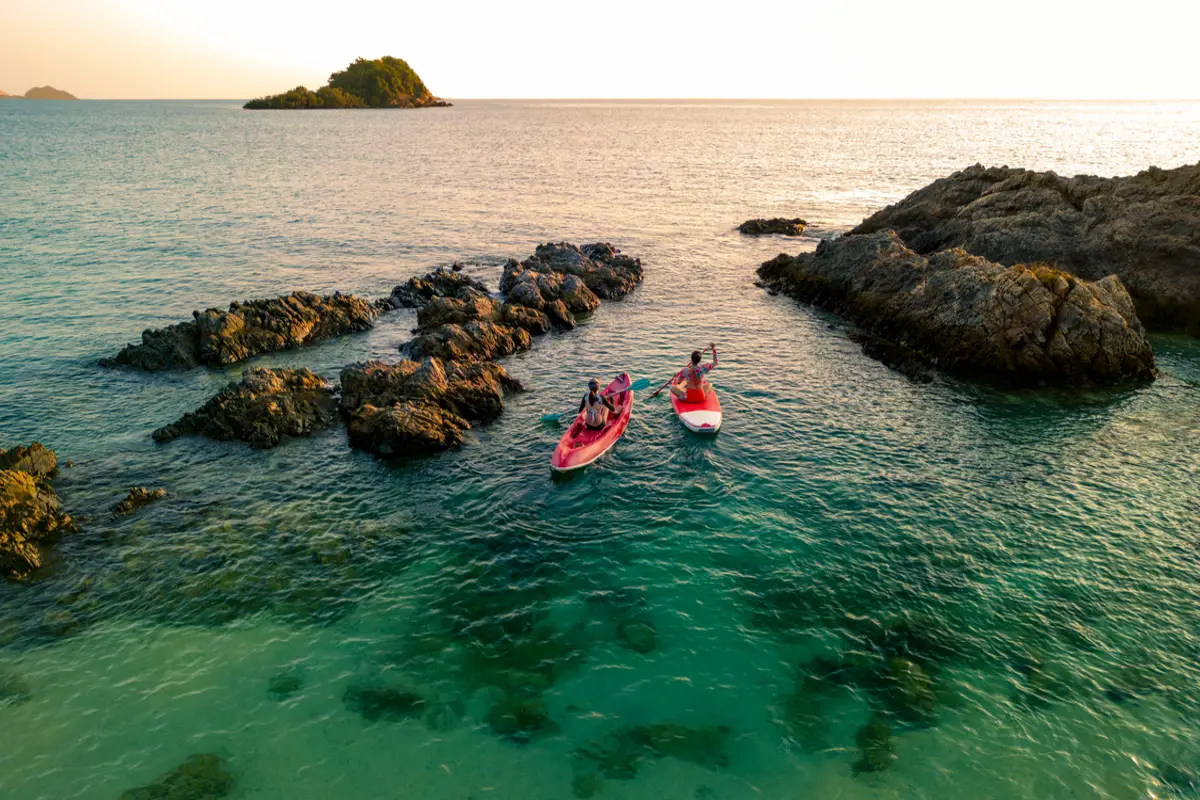
- Industry News
From arranging flights and accommodations to recommending destinations and activities, travel consultants offer valuable expertise and personalized service to meet…

Whether you aspire to become a corporate leader, entrepreneur or industry innovator, obtaining a business degree provides a solid foundation…

A brand is more than just a logo or a product; it’s the essence of what a company stands for…

The global event management industry is a vibrant and evolving sector that attracts a lot of people. This growth is…
Welcome to Les Roches
Privacy overview.
Exploring the World of Tourism: A Comprehensive Guide to 49 Types of Tourism
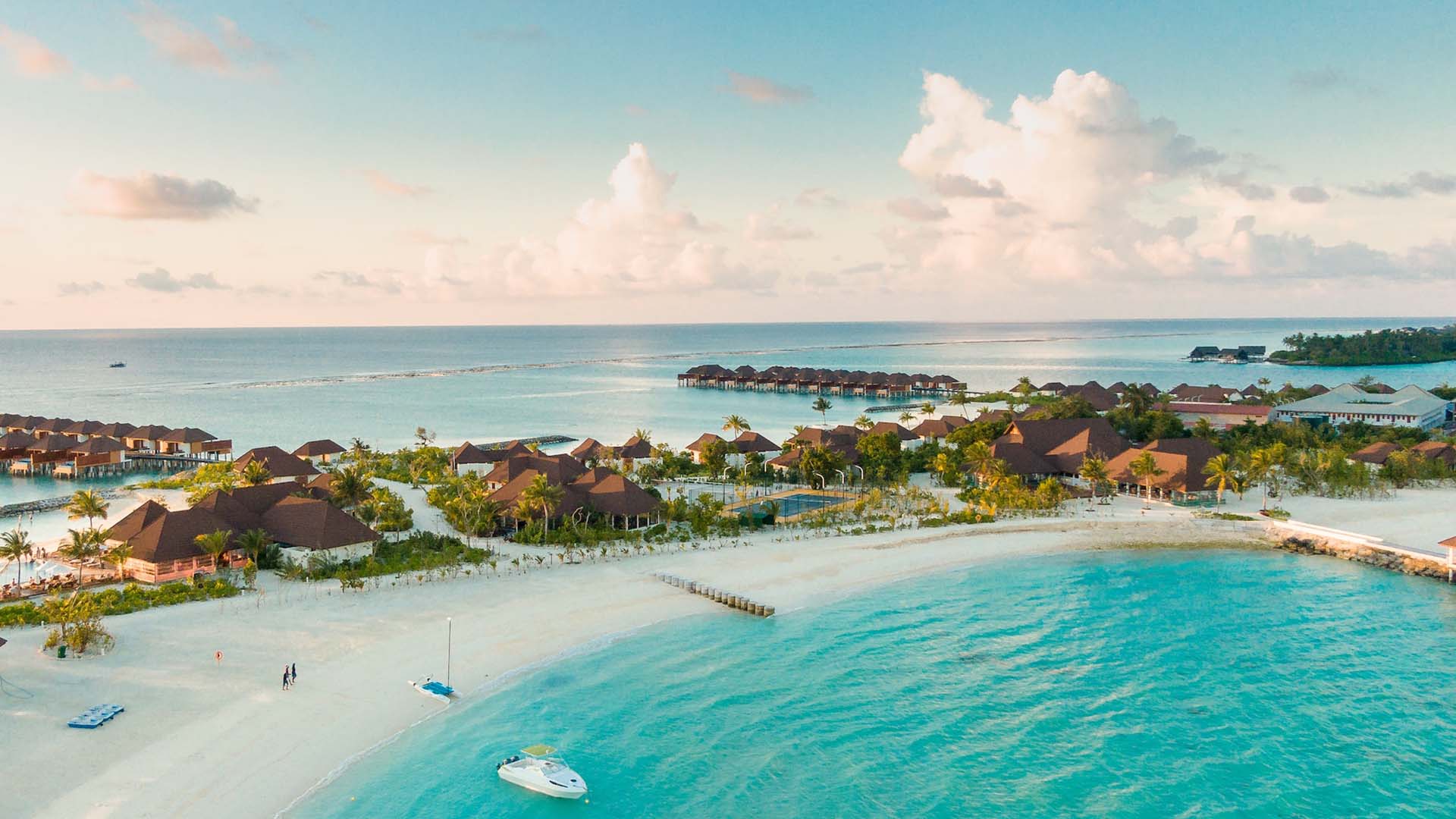
Have you ever thought about how many types of tourism there are in the world? From adventure tourism to medical tourism, the tourism industry offers a wide range of experiences for travelers.
Tourism is a rapidly growing industry, contributing greatly to the global economy . With the rise of globalization and advancements in technology, traveling has become more accessible and affordable for people all around the world.
As a result, the tourism industry has diversified and expanded to cater to the different interests and preferences of travelers.
If you are a travel enthusiast, you might be surprised to know that there are over 40 different types of tourism to choose from. Each type of tourism offers a unique experience, ranging from cultural immersion to extreme sports.
In this article, we will explore the different types of tourism in the world, giving you a glimpse into the vast array of options available to you.
Tourism is a social, cultural and economic phenomenon which entails the movement of people to countries or places outside their usual environment for personal or business/professional purposes.
49 Types of Tourism in the World
The tourism sector is constantly evolving, expanding beyond the basics of domestic, inbound, and outbound tourism.
As travel agencies, it is crucial to stay informed about the diverse range of tourism types to develop effective strategies and fuel the growth of your business. This comprehensive guide presents 62 types of tourism, offering valuable insights and opportunities for your agency to thrive in the dynamic world of travel.
Traditional Forms of Tourism
Leisure tourism.

Leisure tourism encompasses a range of activities that provide relaxation, entertainment, and cultural enrichment to travelers. Let's explore some popular forms of leisure tourism in more detail:
1. Beach Tourism
Beach tourism revolves around vacations and holidays spent in coastal areas, offering sun, sand, and various recreational activities such as swimming, sunbathing, beach volleyball, and water sports like snorkeling, surfing, and jet skiing.
Beach destinations around the world, such as Bali, Maldives, and the Caribbean, attract millions of tourists seeking relaxation and enjoyment in idyllic seaside settings.
2. Adventure Tourism
Adventure tourism caters to thrill-seeking individuals who seek exciting and adrenaline-pumping experiences. It includes activities like hiking, rock climbing, zip-lining, white-water rafting, paragliding, and bungee jumping in natural and adventurous settings.
Destinations like New Zealand, Costa Rica, and Switzerland offer breathtaking landscapes and thrilling adventure opportunities that attract adventure enthusiasts from across the globe.
3. Cultural Tourism
Cultural tourism focuses on exploring the rich heritage, traditions, and artistic expressions of a destination.
It involves visits to museums, historical sites, cultural festivals, and interactions with local communities to gain insight into their customs, rituals, and way of life. Destinations renowned for their cultural attractions include Rome with its ancient ruins, Kyoto with its traditional temples, and Istanbul with its diverse blend of cultures.
4. Wildlife Tourism
Wildlife tourism centers on observing and experiencing a particular region's diverse fauna and flora.
It includes activities such as safaris, birdwatching, nature walks, and visits to national parks and wildlife reserves. Destinations like South Africa's Kruger National Park, the Galapagos Islands in Ecuador, and the Serengeti in Tanzania offer incredible wildlife encounters and opportunities for conservation education.
Business Tourism

Business tourism, also known as MICE tourism (Meetings, Incentives, Conferences, and Exhibitions), caters to individuals traveling for business-related purposes.
Let's explore some key components of business tourism:
5. Meetings, Incentives, Conferences, and Exhibitions (MICE) Tourism
MICE tourism encompasses corporate meetings, conferences, conventions, trade shows, and exhibitions. It provides a platform for professionals to network, exchange knowledge, showcase products and services, and forge business relationships.
Major cities and convention centers worldwide, such as London, Dubai, and Las Vegas, host numerous MICE events, driving economic growth and fostering industry collaboration.
6. Trade Shows and Conventions
Trade shows and conventions are industry-specific events where businesses exhibit their products or services to potential clients, partners, and investors. These events serve as valuable marketing platforms, allowing companies to showcase their latest innovations, generate leads, and gain industry insights.
Trade shows like CES (Consumer Electronics Show) and Hannover Messe attract businesses from diverse sectors, facilitating business-to-business interactions and promoting industry growth.
7. Corporate Retreats and Team-Building Activities
Corporate retreats and team-building activities aim to foster teamwork, boost employee morale, and enhance organizational productivity. These events often take place in scenic locations, away from the usual office environment, and incorporate team-building exercises, workshops, brainstorming sessions, and recreational activities.
Corporate retreats not only strengthen internal relationships but also provide opportunities for strategic planning, innovation, and professional development.
Niche and Special Interest Tourism

Ecotourism promotes responsible travel practices that focus on preserving and conserving natural environments while providing educational and enriching experiences for travelers.
Let's delve into some facets of ecotourism:
8. Rainforest Exploration
Rainforest exploration allows travelers to immerse themselves in the lush biodiversity and unique ecosystems of tropical rainforests. Guided hikes, canopy walks, and wildlife spotting tours provide opportunities to witness rare flora and fauna, learn about sustainable conservation efforts, and contribute to local communities.
Destinations like the Amazon Rainforest in South America, Borneo's rainforests in Southeast Asia, and Costa Rica's Monteverde Cloud Forest offer captivating rainforest experiences.
9. Wildlife Conservation Tours
Wildlife conservation tours allow travelers to actively participate in conservation initiatives, contributing to the protection of endangered species and their habitats. These tours often involve volunteer work, such as monitoring wildlife, assisting in research projects, and habitat restoration efforts.
Popular wildlife conservation destinations include the Galapagos Islands, where visitors can help preserve unique marine and terrestrial ecosystems, and South Africa's game reserves, where wildlife conservation programs support endangered species.
10. Sustainable Travel Practices
Sustainable travel practices promote environmentally friendly behaviors, aiming to minimize negative impacts on natural resources, local communities, and cultures. These practices may include reducing carbon footprint, supporting local businesses, respecting local traditions, and engaging in activities that promote environmental stewardship.
Travelers can choose eco-lodges, and eco-friendly transportation options, and participate in community-based tourism initiatives to ensure their travel has a positive impact on the destination.
Wellness Tourism

Wellness tourism focuses on enhancing and rejuvenating one's well-being through various activities and experiences that prioritize physical, mental, and spiritual health.
Let's explore some aspects of wellness tourism:
11. Spa Retreats
Spa retreats offer a serene environment where travelers can indulge in relaxation, pampering treatments, and wellness therapies. From soothing massages and rejuvenating facials to holistic healing practices like yoga and meditation, spa retreats provide a sanctuary for rejuvenation and stress relief.
Destinations such as Bali, Thailand, and California's Napa Valley are renowned for their luxurious and holistic spa retreats.
12. Yoga and Meditation Retreats
Yoga and meditation retreats provide opportunities for individuals to deepen their mindfulness and spiritual practices in tranquil and picturesque settings. These retreats often combine daily yoga sessions, meditation practices, healthy cuisine, and workshops focused on personal growth and self-awareness.
Destinations like Rishikesh in India, Ubud in Bali, and Sedona in the United States are renowned for their yoga and meditation retreats.
13. Health and Wellness Resorts
Health and wellness resorts offer comprehensive programs designed to improve physical fitness, promote healthy lifestyles, and provide personalized wellness experiences. These resorts may offer fitness classes, nutritional guidance, spa treatments, wellness consultations, and activities like hiking, yoga, and mindfulness workshops.
Wellness-focused destinations such as Switzerland's renowned Swiss Alps resorts, Thailand's wellness retreats, and the wellness resorts in Arizona's Sonoran Desert cater to those seeking a holistic approach to well-being.
Culinary Tourism

Culinary tourism revolves around the exploration and appreciation of a destination's cuisine, culinary traditions, and gastronomic experiences. Let's discover the different aspects of culinary tourism:
14. Food and Wine Tours
Food and wine tours allow travelers to savor the local flavors, taste traditional dishes, and indulge in culinary delights unique to a particular region. These tours often include visits to local markets, food tastings, cooking demonstrations, and wine tastings at vineyards.
Destinations like Italy's Tuscany, France's Bordeaux region, and Japan's Kyoto are renowned for their culinary heritage and offer exceptional food and wine tours.
15. Cooking Classes and Culinary Experiences
Cooking classes and culinary experiences provide hands-on opportunities for travelers to learn about the local cuisine, traditional cooking techniques, and regional specialties. Under the guidance of expert chefs or local home cooks, participants can prepare and savor authentic dishes, gaining insights into the culinary culture of the destination.
Cities like Bangkok, Marrakech, and Barcelona are known for their immersive cooking classes and culinary workshops.
16. Farm-to-Table and Gastronomic Experiences
Farm-to-table experiences involve visits to local farms, orchards, and vineyards to witness the production process of fresh, organic ingredients. Gastronomic experiences encompass fine dining at renowned restaurants, tasting menus curated by celebrity chefs, and exploring local street food scenes.
Destinations like California's Napa Valley, France's Lyon, and Thailand's Chiang Mai provide exceptional farm-to-table and gastronomic experiences.
Adventure and Outdoor Tourism
Mountain tourism.

Mountain tourism attracts adventurous travelers seeking exhilarating experiences in breathtaking alpine landscapes. Here are some popular activities within mountain tourism:
17. Hiking and Trekking
Hiking and trekking adventures take travelers through scenic mountain trails, allowing them to explore the pristine wilderness, enjoy stunning vistas, and challenge themselves physically.
Destinations like the Himalayas in Nepal, the Swiss Alps, and the Rocky Mountains in North America offer a range of hiking and trekking opportunities suitable for different skill levels.
18. Mountaineering and Rock Climbing
Mountaineering and rock climbing appeal to those with a passion for conquering towering peaks and vertical rock formations.
From scaling iconic summits like Mount Everest and Mount Kilimanjaro to rock climbing in Yosemite National Park or the Dolomites, these activities offer a thrilling combination of physical endurance, technical skill, and awe-inspiring natural surroundings.
19. Skiing and Snowboarding
Skiing and snowboarding attract winter sports enthusiasts who enjoy gliding down snow-covered slopes and experiencing the adrenaline rush of downhill descents.
Popular ski destinations include Aspen in the United States, Whistler Blackcomb in Canada, and the Swiss Alps, where skiers and snowboarders can enjoy diverse terrains, world-class facilities, and picturesque mountain landscapes.
Water Tourism

Water tourism encompasses a wide range of activities centered around bodies of water, including oceans, lakes, rivers, and coastal areas. Let's explore some popular water-based tourism experiences:
20. Scuba Diving and Snorkeling
Scuba diving and snorkeling allow travelers to explore vibrant underwater ecosystems, encounter marine life, and marvel at coral reefs.
Destinations like the Great Barrier Reef in Australia, the Maldives, and the Red Sea in Egypt are renowned for their exceptional diving and snorkeling sites, offering opportunities to witness the beauty and biodiversity of the marine world.
21. Surfing and Water Sports
Surfing and water sports, such as paddleboarding, kayaking, and windsurfing, cater to adrenaline seekers looking to ride the waves and engage with the power of the ocean. Destinations like Hawaii's North Shore, Bali's Uluwatu, and California's Huntington Beach are renowned for their world-class surf breaks and water sports scenes.
22. Sailing and Yachting
Sailing and yachting experiences provide a luxurious and leisurely way to explore coastal regions, island hopping, and cruise along scenic coastlines. Chartering a yacht or joining a sailing excursion offers the opportunity to relax, soak in breathtaking seascapes, and visit remote islands and hidden coves.
Destinations like the Greek Islands, the Caribbean, and the French Riviera are popular sailing and yachting destinations.
Wildlife Tourism

Wildlife tourism appeals to nature enthusiasts and animal lovers who seek encounters with diverse wildlife species in their natural habitats.
Here are some popular wildlife tourism experiences:
23. Safari and Wildlife Photography
Safari adventures take travelers into national parks and game reserves, providing opportunities to spot iconic wildlife species like lions, elephants, giraffes, and zebras. Wildlife photography enthusiasts can capture stunning images of animals in their natural environment.
Destinations like Botswana's Okavango Delta, Tanzania's Serengeti National Park, South Africa's Kruger National Park, and India's Ranthambore National Park offer exceptional safari and wildlife photography experiences.
24. Birdwatching and Nature Reserves
Birdwatching enthusiasts flock to nature reserves and sanctuaries known for their rich avian biodiversity. These destinations offer opportunities to observe and identify a wide array of bird species in their natural habitats.
Places like Costa Rica's Monteverde Cloud Forest Reserve, Australia's Kakadu National Park, and Ecuador's Galapagos Islands are renowned for their birdwatching opportunities.
25. Whale Watching and Marine Wildlife Tours
Whale-watching tours provide an up-close and personal experience with these magnificent marine creatures. Travelers can observe whales breaching, swimming, and interacting in their natural habitat.
Destinations such as Iceland, Canada's Vancouver Island, and the Azores in Portugal are popular for whale watching and marine wildlife tours.
Cultural and Heritage Tourism
Historical tourism.

Historical tourism appeals to individuals interested in exploring the rich heritage and significant historical sites around the world. It provides insights into past civilizations, events, and cultural traditions.
Here are some key aspects of historical tourism:
26. Archaeological Sites and Ruins
Archaeological sites and ruins offer a glimpse into ancient civilizations and their architectural marvels.
Places like the Colosseum in Rome, Machu Picchu in Peru, and Angkor Wat in Cambodia attract history enthusiasts who are fascinated by the remnants of past civilizations and the stories they hold.
27. UNESCO World Heritage Sites
UNESCO World Heritage Sites are culturally or naturally significant locations recognized for their outstanding universal value. These sites range from iconic landmarks like the Taj Mahal in India to entire historical city centers like Prague in the Czech Republic.
Visiting UNESCO World Heritage Sites allows travelers to appreciate the world's cultural diversity and historical importance.
28. Historical Landmarks and Monuments
Historical landmarks and monuments symbolize key moments in history or commemorate notable figures or events. Examples include the Statue of Liberty in the United States, the Great Wall of China, and the Pyramids of Giza in Egypt.
Exploring these landmarks provides a deeper understanding of their historical significance and their impact on society.
Religious Tourism

Religious tourism caters to individuals seeking spiritual experiences, pilgrimages, or a connection with sacred sites. It offers insights into different religious traditions and the architectural wonders associated with them.
Here are some facets of religious tourism:
29. Pilgrimages and Sacred Sites
Pilgrimages involve journeys to sacred destinations associated with specific religions or spiritual beliefs. Places like Mecca for Muslims, Jerusalem for Christians, and Varanasi for Hindus hold immense religious significance and attract millions of pilgrims each year.
30. Spiritual Retreats and Meditation Centers
Spiritual retreats and meditation centers offer tranquil environments for introspection, relaxation, and spiritual growth. These retreats focus on mindfulness, meditation practices, and holistic healing.
Popular destinations for spiritual retreats include Bali in Indonesia, Sedona in the United States, and Rishikesh in India.
31. Religious Festivals and Events
Religious festivals and events provide a vibrant and immersive experience of cultural traditions and religious celebrations. Examples include the Kumbh Mela in India, the Holi festival of colors, and the Christmas celebrations in various parts of the world.
Participating in these festivals offers a unique glimpse into local customs, rituals, and the spirit of the community.
Indigenous Tourism

Indigenous tourism aims to promote understanding, appreciation, and respect for indigenous cultures, traditions, and ways of life. It provides opportunities to engage with indigenous communities and learn about their heritage.
Here are elements of indigenous tourism:
32. Indigenous Cultural Experiences
Indigenous cultural experiences allow travelers to interact with indigenous communities, learn about their traditions, crafts, music, and storytelling. These experiences foster cultural exchange and promote the preservation of indigenous heritage.
Destinations like the Maori culture in New Zealand, the Aboriginal culture in Australia, and the Native American reservations in the United States offer such immersive experiences.
33. Tribal Village Visits
Visiting tribal villages allows travelers to observe and learn about the traditional lifestyles, customs, and rituals of indigenous communities. It provides insights into their sustainable practices, craftsmanship, and deep-rooted connections with nature.
Destinations such as the Amazon rainforest, the Maasai Mara in Kenya, and the Highlands of Papua New Guinea offer opportunities to visit tribal communities.
34. Traditional Arts and Crafts
Indigenous cultures often have a rich tradition of art, crafts, and handicrafts that reflect their unique identity and skills. Exploring indigenous arts and crafts markets, workshops, and galleries allows travelers to appreciate and support the preservation of these traditional artistic practices.
From intricate weaving in Peru to intricate beadwork in South Africa, there is a vast array of indigenous art to discover.
Urban Tourism

City Tourism
City tourism encompasses visits to vibrant urban destinations, exploring their iconic landmarks, cultural attractions, and modern lifestyle. It offers a blend of history, art, entertainment, and culinary experiences.
Key aspects of city tourism include:
35. Sightseeing and Iconic Landmarks
Cities are known for their iconic landmarks, such as the Eiffel Tower in Paris, the Statue of Liberty in New York City, and the Sydney Opera House. Sightseeing allows visitors to capture the essence of a city's character and architectural splendor.
36. Museums and Art Galleries
Cities are often home to renowned museums and art galleries that showcase world-class collections, historical artifacts, and contemporary artworks.
The Louvre Museum in Paris, the Metropolitan Museum of Art in New York City, and the Hermitage Museum in Saint Petersburg are just a few examples of the cultural treasures found in urban areas.
37. Shopping and Entertainment Districts
Urban centers offer diverse shopping experiences, from luxury boutiques to bustling street markets. Additionally, cities provide vibrant entertainment districts with theaters, music venues, and nightlife hotspots.
These districts cater to a variety of interests, ensuring that visitors can indulge in shopping, dining, and entertainment.
Architectural Tourism

Architectural tourism focuses on exploring unique architectural styles, landmarks, and urban design within cities. It allows travelers to appreciate the creativity, innovation, and historical significance of various structures.
Key elements of architectural tourism include:
38. Architectural Marvels and Landmarks
Cities showcase architectural marvels, such as the Burj Khalifa in Dubai, the Sydney Opera House, and the Guggenheim Museum in Bilbao. These structures captivate visitors with their impressive design, engineering, and cultural impact.
39. Modern and Contemporary Architecture Tours
Urban areas often feature striking modern and contemporary architecture that reflects the city's identity and vision. Walking tours or guided visits to architectural highlights, such as the Shard in London, the Marina Bay Sands in Singapore, or the Dancing House in Prague, offer insights into cutting-edge design and urban development.
40. Urban Design and City Planning
City tourism also encompasses exploring the urban design, layout, and city planning concepts that shape the physical environment. Sustainable urban planning, pedestrian-friendly streets, and green spaces contribute to the livability and attractiveness of cities.
Examples of urban design excellence can be found in cities like Copenhagen, Singapore, and Barcelona.
Emerging Forms of Tour

Dark Tourism
Dark tourism refers to visiting sites that are associated with death, tragedy, or historical atrocities. It offers a unique perspective on the darker aspects of human history. While it may seem unusual, dark tourism has gained popularity in recent years.
Here are some examples of dark tourism:
41. War Memorials and Battlefields
Visiting war memorials and battlefields provides insights into the sacrifices made during significant conflicts. Examples include the Normandy American Cemetery and Memorial in France and the Hiroshima Peace Memorial Park in Japan.
These sites allow visitors to reflect on the consequences of war and honor those who lost their lives.
42. Holocaust and Genocide Sites
Holocaust and genocide sites, such as Auschwitz-Birkenau in Poland and the Killing Fields in Cambodia, serve as reminders of the darkest chapters in human history.
These places educate visitors about the horrors of genocide and the importance of promoting peace and tolerance.
43. Disaster Tourism
Disaster tourism involves visiting locations affected by natural or man-made disasters. Examples include areas hit by hurricanes, volcanic eruptions, or industrial accidents.
While controversial, this form of tourism can raise awareness about the impact of disasters and the resilience of affected communities.
Space Tourism

Space tourism is an emerging frontier in the travel industry, allowing individuals to experience the thrill of space travel and explore the mysteries of the universe. While it is currently limited to a select few, advancements in technology and space exploration are making it more accessible.
Key aspects of space tourism include:
44. Space Travel and Exploration
Space tourism involves journeys beyond the Earth's atmosphere, offering a unique perspective of our planet and the vastness of space. Companies like Virgin Galactic and SpaceX are developing spacecraft to transport civilians into space, opening up new possibilities for adventurous travelers.
45. Astronaut Training Experiences
Before embarking on a space journey, aspiring space tourists can undergo astronaut training experiences. These programs simulate the physical and mental challenges faced by astronauts, including zero-gravity simulations, centrifuge training, and survival skills.
46. Observatories and Space Centers
Visiting observatories and space centers allows enthusiasts to learn about astronomy, space missions, and ongoing research. Places like the Kennedy Space Center in Florida and the European Space Agency's Spaceport in French Guiana offer interactive exhibits, rocket launches, and behind-the-scenes glimpses into space exploration.
Virtual Tourism

Virtual tourism has emerged as a response to the limitations of physical travel, allowing individuals to explore destinations and landmarks virtually. It offers a convenient and immersive way to experience different places from the comfort of one's home. Key aspects of virtual tourism include:
47. Virtual Reality Travel Experiences
Virtual reality (VR) technology allows users to immerse themselves in simulated environments, including famous landmarks, natural wonders, and cultural sites. VR headsets transport users to different locations, providing a realistic and interactive experience.
48. Online Museum and Landmark Tours
Many museums, historical sites, and landmarks offer virtual tours that enable visitors to explore their collections and exhibits online. These tours provide detailed information, multimedia content, and the ability to navigate through the spaces virtually.
49. Virtual Travel Platforms and Apps
Various platforms and apps offer virtual travel experiences, curated itineraries, and interactive content. These platforms leverage technology to create virtual travel communities, where users can connect, share experiences, and plan future trips.
As the travel industry evolves, embracing these emerging forms of tourism can open up new opportunities for businesses and provide unique experiences for travelers.
In conclusion, the tourism industry is a dynamic and ever-evolving sector that encompasses a wide range of experiences and opportunities. By understanding the diverse types of tourism in the world, business professionals can position themselves for success and growth in this competitive landscape.
By recognizing the unique characteristics and preferences of different traveler segments, businesses can tailor their offerings and marketing strategies to meet the specific needs of their target audiences. This not only enhances customer satisfaction but also helps in creating a competitive advantage in the market.
Moreover, as the world becomes increasingly interconnected and travelers seek authentic and immersive experiences, businesses must embrace the diversity of tourism segments. By incorporating sustainable practices, respecting local cultures, and promoting responsible tourism, businesses can contribute to the preservation of natural and cultural heritage, while also appealing to environmentally and socially conscious travelers.
Let us embrace the diversity of tourism, foster innovation, and collaborate to shape the future of this exciting industry.
- United Nations World Tourism Organization
- World Travel and Tourism Council
- International Ecotourism Society
- Global Wellness Institute
- International Culinary Tourism Association
- Adventure Travel Trade Association
- UNESCO World Heritage Centre
- The International Dark-Sky Association
- Space Tourism Society
- World Tourism Organization
- National Geographic Travel
- International Association of Antarctica Tour Operators
- World Food Travel Association
- Beach Holidays by Expedia
Tumisang Bogwasi
2X Award-Winning Entrepreneur | Empowering Brands to Generate Leads, Grow Revenue with Business Strategy and Digital Marketing | Founder, CEO of Fine Group
Related Posts

The Importance of Tourism on Economies and Businesses
- April 6, 2023
Travel Tips and Trivia
Last Updated: January 23, 2024
40 Different Types of Tourists [2021 Tourism Types Guide]
Want to learn all about the different types of tourists? Check out this post to read all about 40 unique tourism types and their individual characteristics!
Danny Newman

Trying to find out about the different types of tourists? I hope this post helps!
News just in:
Not all tourists are made equal!
Sure, we’re all going from place to place to enjoy the various attractions on offer in our chosen destinations.
But everything from our reasons for travelling to our style of travel can vary, right?
So it turns out tourism’s actually this big umbrella term, under which sit all sorts of different types of tourists .
In fact, it can actually get a bit confusing…
From what I can tell, there’s no actual consensus on how many tourism types exist!
Some articles list 3 main types of tourism, others 10, a few make up their own ones for a bit of fun, and I’ve even seen some that detail 60+ !
To satisfy my own curiosity and help anyone else who might be looking into this topic, I thought I’d do some digging and put together a post about the main categories of tourism that seem to crop up again and again.
Sound good? Keep reading for a detailed look at 40 different types of tourist and tourism!
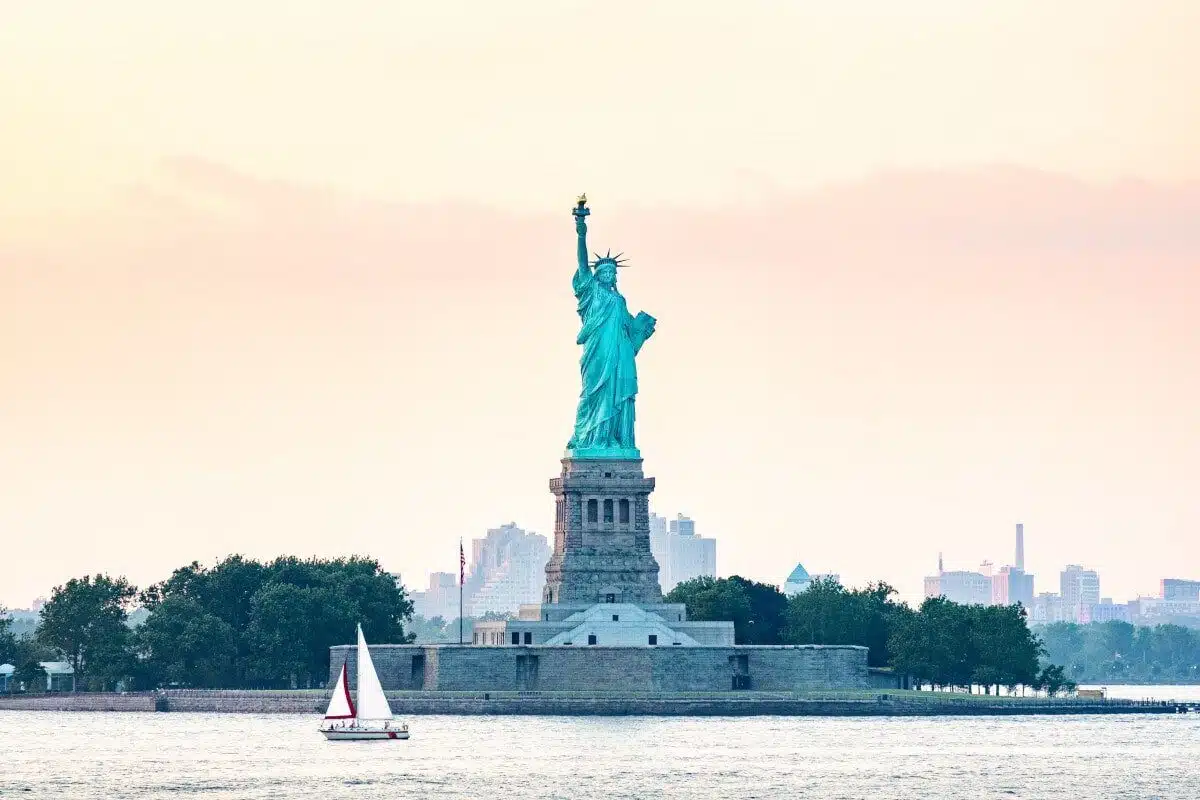
Here we go then: 40 different tourism types worth knowing about!
You might like these posts too!
- 10 Primary Disadvantages of Tourism
- A Complete Guide to Eco Travelling
- 10 Best Types of Vacations
- How to Say Thank You Around the World
- 30 Different Types of Travelling
- Comprehensive Guide to Responsible Tourism
- 20 Benefits of Solo Travel
- The Best Jobs for Adventurers
3 Main Types of Tourism
Some sources, like this one , divide the overarching category of “tourism” into three primary forms: domestic, inbound, and outbound tourism.
Let’s go through each one in turn!
First, though, here’s a fun fact: to be classed as any type of tourist, it’s generally accepted that you’re not leaving home to stay in a chosen country for more than a year . Extend your stay beyond 12 months and I’m not exactly sure what you become (a resident, maybe?). Yet, by all accounts, you’re no longer a tourist !
1. Domestic
Domestic tourism’s basically when you visit somewhere within your own country but outside the specific place you live.
Imagine a Brit who lives in London. They’d be classed as a domestic tourist if they left London to explore another part of the UK.
Inbound tourism’s the opposite.
This, according to the source above, is “the activities of a visitor from outside [their] country of residence”.
So, if that same Brit left the UK to travel around France, or Spain, or anywhere that isn’t England, Wales, Scotland, or Northern Ireland, they’d be classed by their chosen destination as an inbound tourist.
3. Outbound
And, finally, outbound tourism is when you leave your home country to explore somewhere else.
So, technically, you can be an inbound and outbound tourist at the same time!
For instance, the Brit who leaves the UK to go on holiday in France is an outbound tourist from the UK’s perspective and an inbound tourist from France’s.
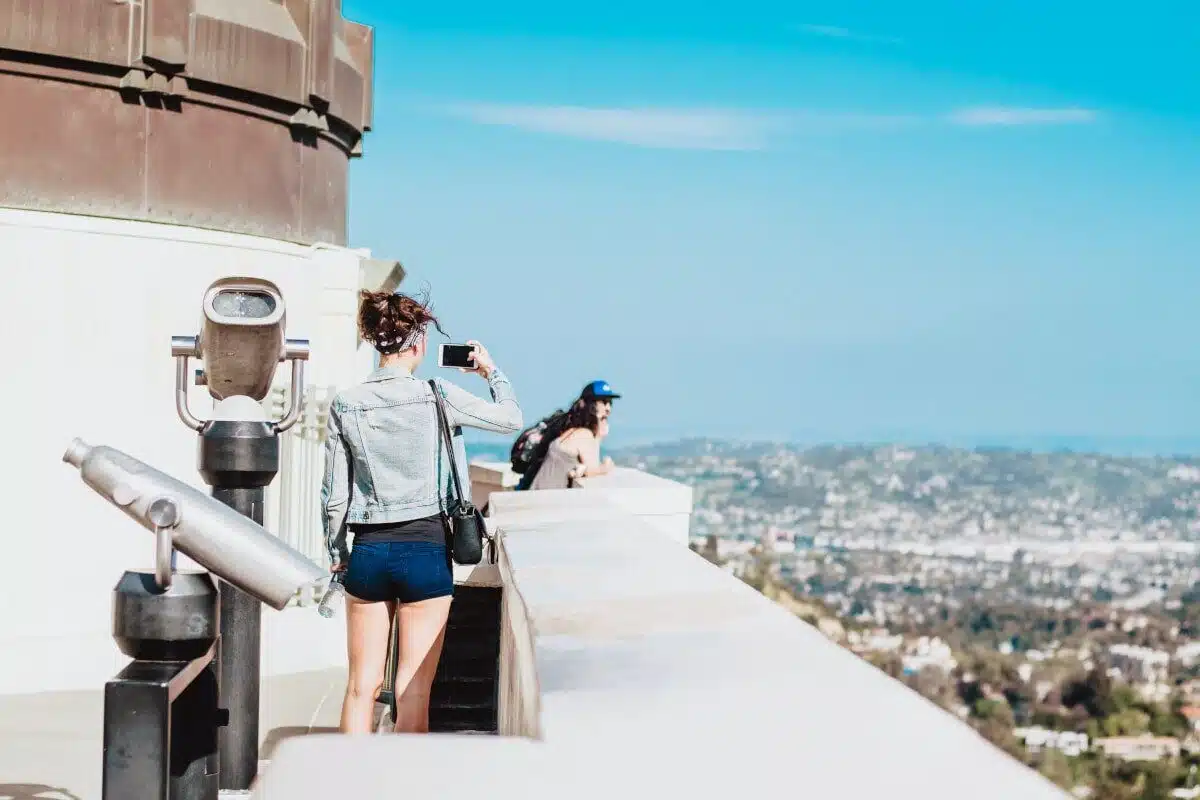
Which type of tourism most appeals to you? And what type of tourist do you think you are?! Find out in the next section…
4 Types of Tourist?
In some pieces of tourist-related literature ( like this one ), those 3 official tourism types give way to 4 different types of tourists .
I find these ones far more interesting to think about!
They’re essentially different types of travellers . Learn the definitions and you can start working out which category you (and the people you meet on the road) fit into.
FYI, I’ve taken the following definitions from the source I’ve linked to above.
4. The Drifter
Drifters are tourists who pick novelty over familiarity every single time.
They revel in adventure, immerse themselves in the local community, and, whether they’re alone or in a group, tend to move without a plan or set itinerary.
5. The Explorer
Explorers favour novelty over familiarity too, just not to the same extent as drifters!
Preferring to travel solo , they also enjoy a semblance of comfort, structure, and certainty on the road. If they can see fascinating places with a reliable form of transport, then they’re happy bunnies.
6. The Individual Mass Tourist
The tables turn with individual mass tourists, who prefer familiarity over novelty.
However, they do choose to go it alone, opting for solo travel over group exploration whenever possible. They’ll follow a relatively structured itinerary and stick to certain times in particular parts of town.
7. The Organized Mass Tourist
Finally, there’s the organized mass tourist.
These guys are on the other end of the spectrum to drifters, picking familiarity over novelty every time. They’re the tourists who follow a tour guide whenever possible, try to create and stick to an itinerary, and leave nothing up to chance.

According to the literature, different types of travellers seem to fit into two distinct categories. More on these next…
2 Personality Tourist Types
To confuse things further, you see some sources (like this one ) discuss just two main tourist types!
This time, though, the definitions revolve around tourist personalities .
8. Allocentric (AKA “Venturers”)
Allocentric tourists are, according to the above source, “outgoing, self-confident, and adventurous”.
They tend to fly to their country of choice and will pick off-the-beaten-path destinations over more crowded/touristic ones.
From that description, allocentric travellers seem to resemble the drifters and explorers in the previous section. However, that’s very much my own interpretation! Experts in the field of tourism may disagree entirely.
9. Psychocentric (AKA “Dependables”)
As “self-inhibiting, nervous, and non-adventurous”, psychocentric tourists are basically the polar opposite of allocentric ones.
They “often refuse to travel by air for psychological reasons rather than financial of other practical concerns”, preferring familiar destinations to which they can travel by car and that have a solid tourist infrastructure.
Enjoying tour packages and well-organized itineraries, the psychocentric tourist sounds very much like the organized mass and individual mass tourists above.
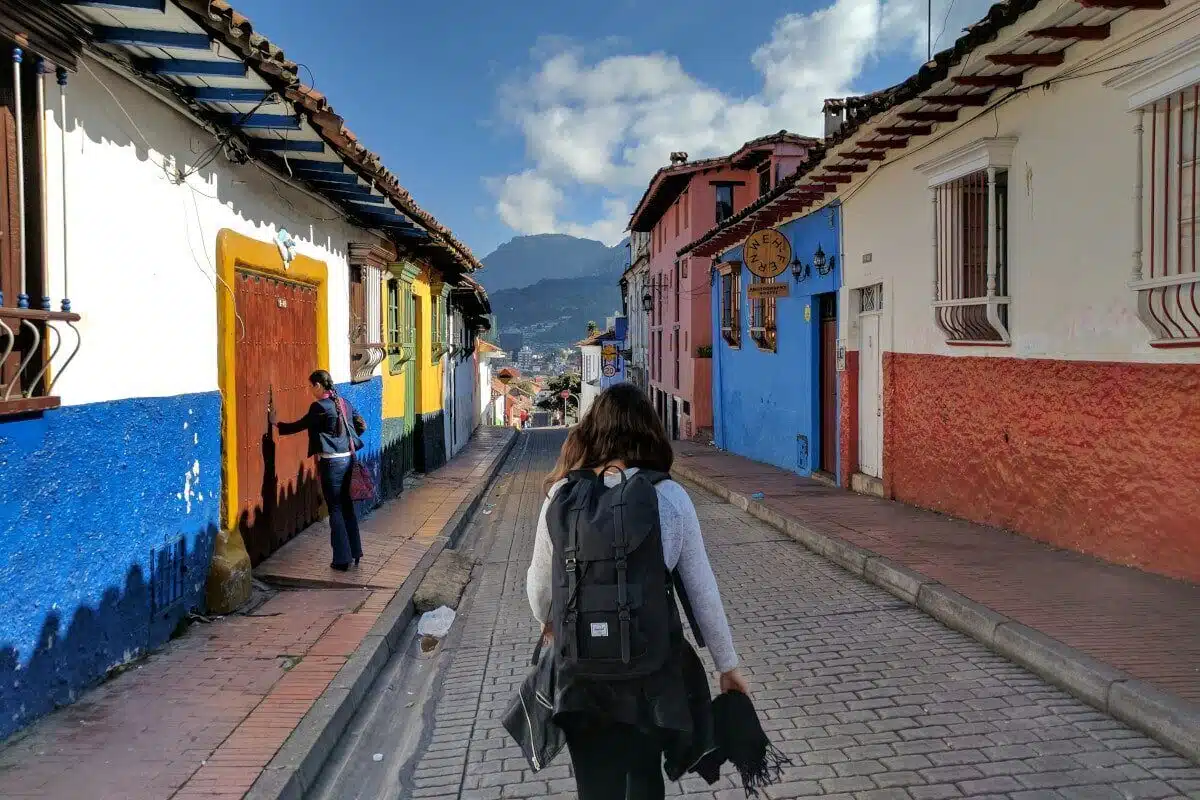
Time to move onto a long list of the main categories of tourism talked about in tourist circles!
General Subcategories of Tourism
With the technical and official forms of tourism down, let’s move onto the many different categories that tourism boards talk about online!
In alphabetical order, these ones usually revolve around peoples’ reasons for travelling versus their specific personality or style of exploration.
10. Art Tourism
Love going to new places to get involved in the art scene? Maybe you go to art festivals, explore art galleries, or attend specific artistic events.
Whatever the case, you’re officially an “art tourist”.
Even things like going to famous museums and wine tasting events supposedly fall under the bracket of art tourism.
11. Backpacking/Youth Tourism
Sometimes referred to as “youth tourism” because of its typical demographic, backpacking (or backpacker) tourism is basically when you slap your stuff into a backpack and hit the road!
From what I can tell, it’s usually associated with a younger generation and often associated with gap year travel.
12. Budget Tourism
Quick heads up: I’m not sure this is an official type of tourism or one that’s been invented by the international travelling community!
Nevertheless, as someone who travels on a budget all the time, I can vouch for its legitimacy! Budget travel/tourism is the act of exploring on a shoestring. With close ties to backpacking tourism, you try to see and do what you can without having access to huge sums of cash.

Business tourism may be one of the better-known forms of tourism on this list.
13. Business Tourism
Business tourism seems to be one of the largest, most accepted, and most talked about tourism types out there.
It’s essentially when you have to travel for work!
A business traveller might attend meetings, go to trade shows, pitch ideas to international companies, and so on.
14. Cultural Tourism
In contrast to business tourism, the definition of cultural tourism seems to be far more slippery and less agreed upon in the literature.
I guess that makes sense though. After all, defining “culture” itself isn’t easy.
Regardless, the basic principle behind cultural tourism is that you travel somewhere to experience its cultural traditions/activities (whether you’re just watching or actively partaking in them). This might involve going to a religious festival in India or Carnival in Rio de Janeiro, Brazil, for example.
15. Dark Tourism
Anyone who’s watched the “Dark Tourist” TV show will have a solid grasp of dark tourism already!
For anyone who’s new to the whole shebang, though, this is the slightly shady act of exploring places associated with death and/or tragedy.
Two examples would be:
- Going to Cambodia to see the Killing Fields, or to
- Mexico for El Dia de los Muertos (the Day of the Dead).
…As an aside, attending Mexico’s Day of the Dead celebrations would probably constitute cultural tourism as well.

Dental tourism is one type of tourism that fewer people know about, but that’s becoming increasingly popular.
16. Dental Tourism
Dental tourists are people who travel to a foreign country to receive dental treatment.
Sounds crazy, right?
However, it starts making far more sense when you realize you can get really high-quality dental care at a fraction of the cost overseas!
17. Disaster Tourism
Disaster tourism reminds me a bit of dark tourism. This time, though, it involves visiting places that have suffered some sort of environmental disaster.
Whether the disaster’s man-made or natural, people decide to take a look at the aftermath and it isn’t long before businesses start cropping up to cater to them.
18. Ecotourism
Ecotourism’s talked about a lot these days- especially among avid travellers who can’t imagine life without adventure, yet wish to preserve and protect the incredible places they’re lucky enough to visit.
Alas, with jet fuel often required to get efficiently from one place to another, living by these ideals is easier said than done!
Ethical dilemmas aside, ecotourism’s when you visit natural areas responsibly.
In other words, you travel in a way that both conserves the environment and benefits (instead of hinders) the local population.

Want to teach overseas? You’ll be partaking in educational tourism!
19. Educational Tourism
Often shortened to “edu-tourism”, this type of tourism involves travelling to a foreign country for educational purposes .
The education itself may involve learning a language or learning information on the country’s history, culture, or social practices. Specific examples include going on a school trip or going to study abroad.
20. Ethnic Tourism
An ethnic tourist is someone who chooses to experience with their own two eyes the lifestyle, customs, and practices of another culture.
Sounds similar to cultural tourism, right?
However, according to this source , ethnic tourism involves a closer, more direct, and “intimate” glimpse into another culture, whereas cultural tourism involves a more indirect manner.
21. Event Tourism
As far as I can tell, event tourism involves hosting and marketing events of one form or another that function as specific tourist attractions.
In other words, you hold an event to:
- Encourage people to visit your country and
- Shed your country in a positive light.
An event tourist is someone who’s left their country of origin to visit that destination for that event (be it for business or pleasure) and stayed overnight . If they don’t stay, then they’re deemed an “event visitor”.
You can find more information here .

Family tourism’s another commonplace type of tourism worth knowing about.
Enjoying this post about the different types of tourism? You might also like these…
- 50 Fascinating Facts About Travel
- 85+ Road Trip Trivia Questions & Games
- 75 Essential Things to Pack for Travel
- Key Features of the Experience of Travel
- 100 Reasons I love to Travel (& You Will Too)
22. Family Tourism
Family tourism seems like a fairly vague and overarching term that involves all forms of tourist activity done as a family unit .
For example, you might travel somewhere with your family and go to a theme park, or try any other kid-friendly attractions in the area.
Family tourism would also include paying a visit to your friends and relatives overseas.
23. Festival Tourism
This type of tourist is nice and simple:
A festival tourist’s someone who travels somewhere specifically to attend a festival!
Whether it’s Glastonbury, Burning Man, Tomorrowland, or any of the other countless festivals happening around the world, attending them all constitutes festival tourism.
24. Food/Gastronomy Tourism
Travelling somewhere to sample its gastronomical delights and learning a thing or two about the culture as a result?
Well, you’re officially a food tourist!
Food tourism is the arena in which you’ll operate. You could be taking a cooking class, visiting local producers, sampling the street food, or taking a local wine tour.

Of all the tourism types on this list, heritage/historical tourism is one of my personal favourites.
25. Health/Medical Tourism
Medical tourism’s similar to dental tourism. This time, though, you’re travelling abroad to get treatment of the medical instead of the dental variety!
It can work in two ways.
- First, someone from a less-developed country may travel to a more developed one in order to access treatment that’s unavailable at home.
- Second, someone from a more developed country may travel to a less developed one to benefit from cheaper treatment.
26. Historical/Heritage Tourism
In a nutshell, historical tourism (otherwise known as heritage tourism) involves going overseas to enjoy its historical sites, sights, and attractions!
It’s the person who visits Rome to explore the Colosseum, Egypt to see the Sphinx, or Peru to visit Machu Picchu. Sure, you enjoy the other tourism attractions in these places as well, but your primary focus is on the history.
Read more about historical tourism here .
27. Hobby Tourism
As you’d expect, hobby tourism is when you travel alone or in a group to watch or partake in your particular hobby of choice.
Things like “football tourism” (e.g. going somewhere to watch your favourite football team play) and “music tourism” (e.g. going somewhere to see your favourite artist perform live) are two popular examples that fit within this overarching category.

International tourism is one of the main types that crop up again and again.
28. International Tourism
Another wide, general, and overarching category of travel, international tourism is the opposite of domestic tourism (discussed above):
You cross national borders to visit and explore your given destination.
29. Leisure Tourism
To borrow a definition from USA Today , leisure travel involves:
“Travel in which the primary motivation is to take a vacation from everyday life.”
So, the leisure tourist might be staying in resorts, dining out, lazing on beaches, going on guided tours, and doing whatever they can to take a much-needed break from the norm.
30. Local Tourism
Local tourism basically involves spending your time and money in foreign destinations as one of the locals would!
You’re shopping in local markets, paying a local taxi driver for a ride instead of a big international company like Uber, dining in local establishments and partying where the locals go.
The goal? To:
- Experience what life in this destination’s really like, and
- Spend your cash in a way that supports the local population.
Want to learn more about a similar topic? Here’s my guide to local travel .

Leisure tourists look for an escape from everyday life and see travel as the perfect solution.
31. National Tourism
Remember the definitions of domestic and outbound tourism I talked about before?
Well, according to the World Tourism Organization , national tourism is a category of tourism that encapsulates them both.
In their words:
“That is to say, the activities of resident visitors within and outside the country of reference, either as part of domestic or outbound tourism trips”.
32. Nature Tourism
Nature tourism’s another straight-forward form of tourism to wrap your head around:
You simply travel somewhere to revel in its natural, undeveloped areas and/or to enjoy the native wildlife on offer there!
33. Recreational Tourism
I’ve seen recreational (or recreation) tourism defined in two different ways.
The first (and most common) is that it involves travelling in order to participate in recreational activities- usually in nature- or to be a participant. Golf, fishing, hiking, and kayaking are a few examples.
The second, less common description (that nonetheless ranks at the top of Google results) is that it’s “the movement of people in their free time in the aims of rest required to restore the physical and mental strength of a person”.
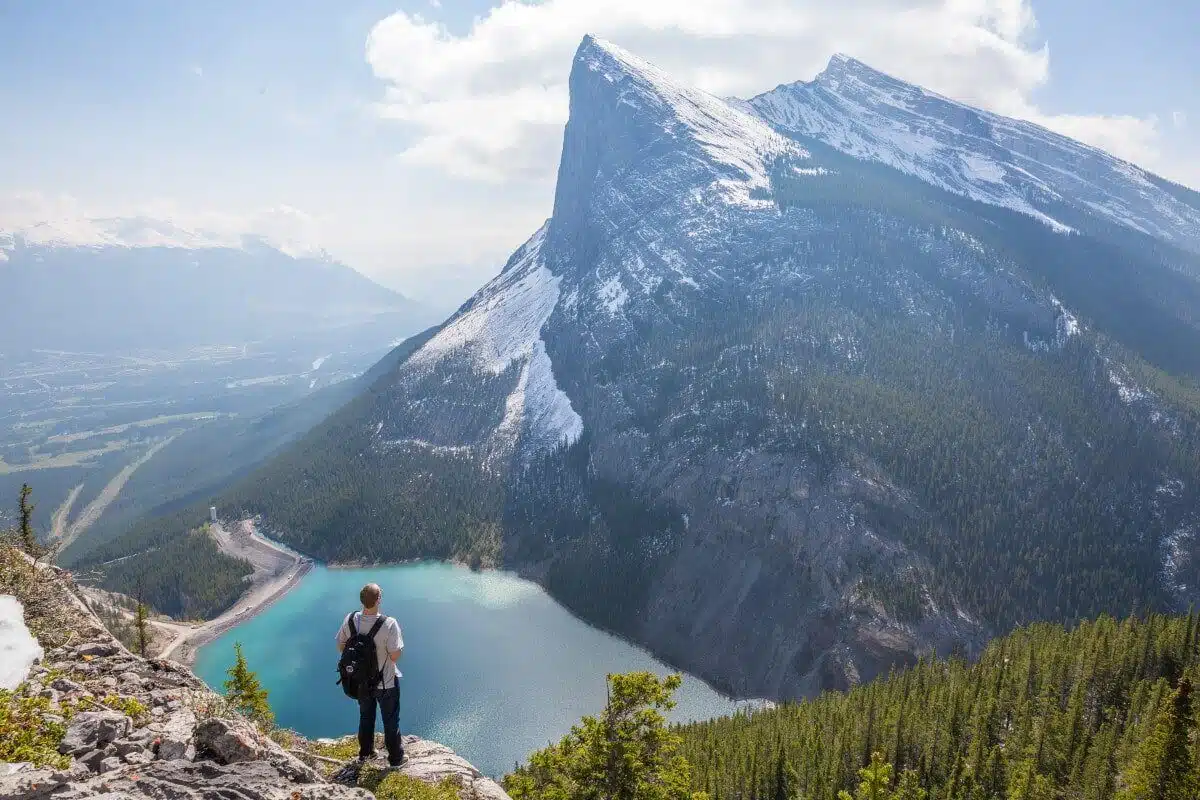
Love nature and want to spend more time outdoors? Nature and recreational tourism are two different types of tourism worth looking into!
34. Religious Tourism
Are you a person of faith? Are you travelling alone or in a group to do something related to your religion?
Well, technically speaking, whether you’re going on pilgrimage, travelling as a missionary, or simply having fun, you’d be considered a religious tourist .
Heads up, you’ll also see religious tourism referred to as faith tourism .
35. Shopping Tourism
A relative newbie as far as the different types of tourists go, shopping tourism is exactly what you’d expect it to be:
Where the purpose of travelling to new places revolves largely around the desire to buy stuff . So, whether you’re going to London, Paris, or New York, your primary focus is on the goods you can acquire there.
36. Social Tourism
A more complicated and nuanced category of tourism, examples of social tourism include helping a charity build schools somewhere overseas, or teaching English to students there, and so on.
Simply put, the central focus of travel here isn’t just on personal pleasure. You’re trying to do something good for local communities in which you’re exploring.
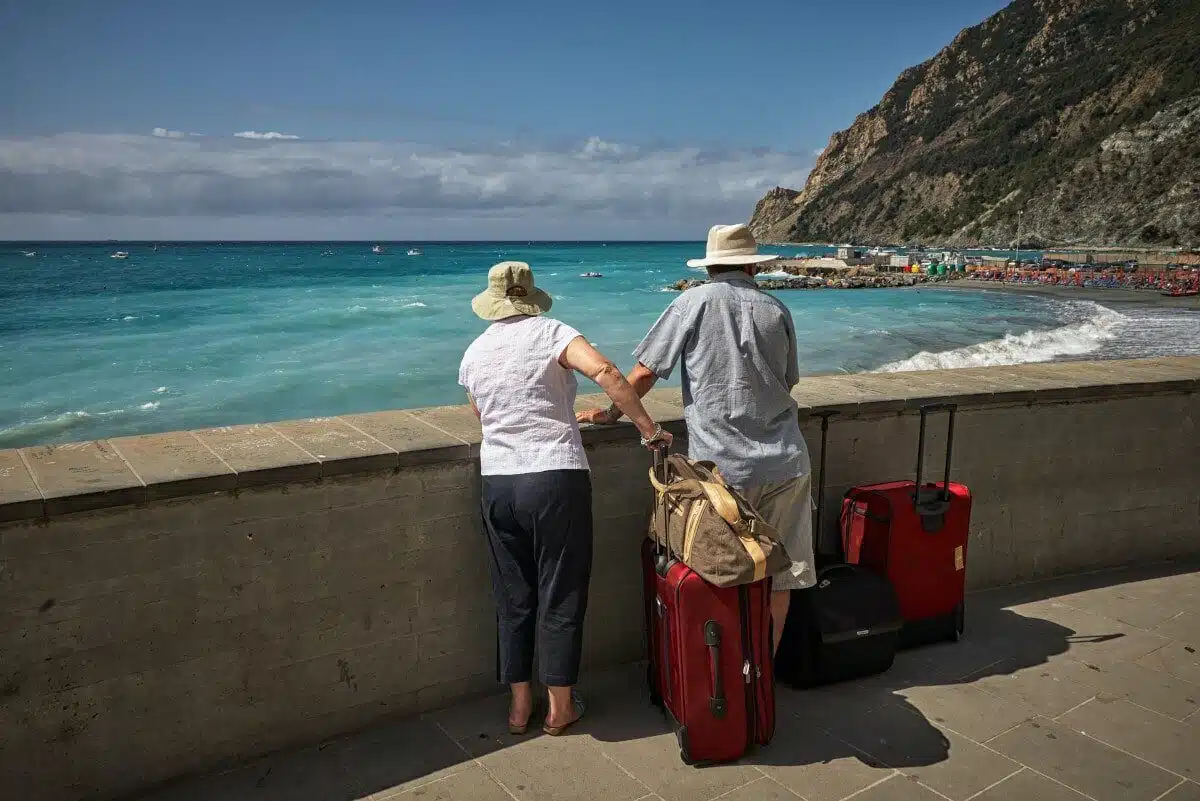
Third-age tourism is another key tourism category in the travel industry! First, though, let’s talk about sports tourism…
37. Sport Tourism
Going somewhere new to participate in or watch a sporting event?
Well, you’re a sport tourist!
Imagine going overseas to see the next football/soccer world cup or to be in the stands at the next Olympics. This is sports tourism in its purest form. However, it could also involve going somewhere to train as a yoga instructor, or to learn martial arts.
38. Third-Age Tourism
Third-age tourism is also known as senior tourism or “silver tourism”.
This is the section of the tourist industry aimed at people who are going somewhat “grey around the edges”; who may have retired and now have expendable income and lots of free time on their hands.
So, if you love to travel and are getting a little longer in the tooth, then you’re probably classed as a senior tourist.
39. Urban Tourism
Another type of tourism for which you can probably guess the definition, urban tourism involves travelling to and around non-rural destinations.
This is the weekend trip to London, or the short break in Berlin.
You’re exploring the cities or towns, immersing yourself in the myriad metropolitan attractions on offer there.
40. Winter/Ski Tourism
Love cutting lines down powdered peaks? Well, you’re already familiar with winter/ski tourism!
From getting involved in winter sports (like skiing, snowboarding, or ice-skating) to watching them from the side-lines, a winter tourist travels to enjoy all-things cold and snow/ice-covered.
Remember (and try!) These Tourism Types
There you have it then: 40 different types of tourists.
As you can tell, although most of us have a basic definition of “tourism” in our head, the industry itself breaks down into dozens of individual tourism types !
If you’ve been trying to gain a greater understanding of these different categories of tourism, then I hope this post has helped!
Know of any other types of tourist for me to add to the list? Drop a comment below!
1 thought on “40 Different Types of Tourists [2021 Tourism Types Guide]”
Wonderful explanation. Would like to add another one that is combination of above mentioned types.
Comments are closed.

- The Star ePaper
- Subscriptions
- Manage Profile
- Change Password
- Manage Logins
- Manage Subscription
- Transaction History
- Manage Billing Info
- Manage For You
- Manage Bookmarks
- Package & Pricing
Popular tourist spot temporarily closed after fatal rockfall
Wednesday, 10 Apr 2024
Related News

Rockfall kills tour guide at popular tourist attraction in Ipoh
30 school kids among 178 people nabbed in joint enforcement op in ipoh, kuching native becomes new ipoh ocpd.
IPOH: The popular tourist spot where a man was killed by a falling rock on Monday will be temporarily closed to allow experts to check the limestone hill, says Perak state exco member Loh Sze Yee.
This comes amid an ongoing study at various premises near limestone hills in the state to ensure they are safe.
Loh, who holds the tourism portfolio, said they had proposed to the state government to close down the tourist spot.
“We want to find out from the experts if this is a ‘once in a blue moon’ incident or something bigger,” he said.
“We want the experts to check and see what their recommendations are for mitigation works.”
He told reporters this after visiting Qing Xin Ling Leisure and Cultural Village in Taman Saikat here where the victim, a 44-year-old local tourist, was killed on the spot when a rock fell on his head at about 11.30am on Monday.
The man from Pangkor, said Loh, had brought his friends to visit the place.
“Our condolences to the victim’s family and we will try to assist in any way we can,” he said.
On the study, Loh said this was being conducted by the state’s limestone foothills and caves committee on various developments, including temples and tourist spots.
“There has been a lot of ecotourism activities in Perak in the past five to 10 years.
“We want to check all these developments as some of these may not have been developed according to specifications.
“For example, for the old (cave) temples, they need reports from consultants to determine whether their premises are safe.
“I will meet with the committee to come up with the specifications to ensure all developments are safe for the people,” Loh said.
Ipoh, he said, was famous for its limestone enclaves, adding however that these places came with risks like any other locations.
“Limestone hills are nice to look at and be in. But limestone itself is more hazardous than other stone or granite,” he said.
Qing Xin Ling Leisure and Cultural Village operator Cheng Swee Kiat said they were willing to help the victim’s family in getting compensation through public liability insurance.
Tags / Keywords: Ipoh , Qing Xin Ling , Loh Sze Yee , Perak , Tourism , Checks , Limestone , Death , Rock , Vietnam , Taman Saikat
Found a mistake in this article?
Report it to us.
Thank you for your report!

Winning with sustainable efforts
Next in nation.

Trending in News
Air pollutant index, highest api readings, select state and location to view the latest api reading.
- Select Location
Source: Department of Environment, Malaysia
Others Also Read
Best viewed on Chrome browsers.

We would love to keep you posted on the latest promotion. Kindly fill the form below
Thank you for downloading.
We hope you enjoy this feature!
25 Questions (and Answers!) About the Great North American Eclipse
The McDonald Observatory’s guide to one of nature’s most beautiful and astounding events: What you might see, how to view it safely, how astronomers will study it, how animals might react, and some of the mythology and superstitions about the Sun’s great disappearing act.

1. What’s happening?
The Moon will cross directly between Earth and the Sun, temporarily blocking the Sun from view along a narrow path across Mexico, the United States, and Canada. Viewers across the rest of the United States will see a partial eclipse, with the Moon covering only part of the Sun’s disk.
2. When will it happen?
The eclipse takes place on April 8. It will get underway at 10:42 a.m. CDT, when the Moon’s shadow first touches Earth’s surface, creating a partial eclipse. The Big Show—totality—begins at about 11:39 a.m., over the south-central Pacific Ocean. The shadow will first touch North America an hour and a half later, on the Pacific coast of Mexico. Moving at more than 1,600 miles (2,575 km) per hour, the path of totality will enter the United States at Eagle Pass, Texas, at 1:27 p.m. CDT. The lunar shadow will exit the United States and enter the Canadian province of New Brunswick near Houlton, Maine, at 2:35 p.m. (3:35 p.m. EDT).
3. How long will totality last?
The exact timing depends on your location. The maximum length is 4 minutes, 27 seconds near Torreon, Mexico. In the United States, several towns in southwestern Texas will see 4 minutes, 24 seconds of totality. The closer a location is to the centerline of the path of totality, the longer the eclipse will last.
4. What will it look like?
Eclipse veterans say there’s nothing quite like a total solar eclipse. In the last moments before the Sun disappears behind the Moon, bits of sunlight filter through the lunar mountains and canyons, forming bright points of light known as Baily’s beads. The last of the beads provides a brief blaze known as a diamond ring effect. When it fades away, the sky turns dark and the corona comes into view— million-degree plasma expelled from the Sun’s surface. It forms silvery filaments that radiate away from the Sun. Solar prominences, which are fountains of gas from the surface, form smaller, redder streamers on the rim of the Sun’s disk.
5. What safety precautions do I need to take?
It’s perfectly safe to look at the total phase of the eclipse with your eyes alone. In fact, experts say it’s the best way to enjoy the spectacle. The corona, which surrounds the intervening Moon with silvery tendrils of light, is only about as bright as a full Moon.
During the partial phases of the eclipse, however, including the final moments before and first moments after totality, your eyes need protection from the Sun’s blinding light. Even a 99-percent-eclipsed Sun is thousands of times brighter than a full Moon, so even a tiny sliver of direct sunlight can be dangerous!
To stay safe, use commercially available eclipse viewers, which can look like eyeglasses or can be embedded in a flat sheet that you hold in front of your face. Make sure your viewer meets the proper safety standards, and inspect it before you use it to make sure there are no scratches to let in unfiltered sunlight.
You also can view the eclipse through a piece of welder’s glass (No. 14 or darker), or stand under a leafy tree and look at the ground; the gaps between leaves act as lenses, projecting a view of the eclipse on the ground. With an especially leafy tree you can see hundreds of images of the eclipse at once. (You can also use a colander or similar piece of gear to create the same effect.)
One final mode of eclipse watching is with a pinhole camera. You can make one by poking a small hole in an index card, file folder, or piece of stiff cardboard. Let the Sun shine through the hole onto the ground or a piece of paper, but don’t look at the Sun through the hole! The hole projects an image of the eclipsed Sun, allowing you to follow the entire sequence, from the moment of first contact through the Moon’s disappearance hours later.
6. Where can I see the eclipse?
In the United States, the path of totality will extend from Eagle Pass, Texas, to Houlton, Maine. It will cross 15 states: Texas, Oklahoma, Arkansas, Missouri, Illinois, Indiana, Kentucky, Ohio, Pennsylvania, New York, Vermont, New Hampshire, Maine, Tennessee, and Michigan (although it barely nicks the last two).
In Texas, the eclipse will darken the sky over Austin, Waco, and Dallas—the most populous city in the path, where totality (the period when the Sun is totally eclipsed) will last 3 minutes, 51 seconds.
Other large cities along the path include Little Rock; Indianapolis; Dayton, Toledo, and Cleveland, Ohio; Erie, Pennsylvania; Buffalo and Rochester, New York; and Burlington, Vermont.
Outside the path of totality, American skywatchers will see a partial eclipse, in which the Sun covers only part of the Sun’s disk. The sky will grow dusky and the air will get cooler, but the partially eclipsed Sun is still too bright to look at without proper eye protection. The closer to the path of totality, the greater the extent of the eclipse. From Memphis and Nashville, for example, the Moon will cover more than 95 percent of the Sun’s disk. From Denver and Phoenix, it’s about 65 percent. And for the unlucky skywatchers in Seattle, far to the northwest of the eclipse centerline, it’s a meager 20 percent.
The total eclipse path also crosses Mexico, from the Pacific coast, at Mazatlán, to the Texas border. It also crosses a small portion of Canada, barely including Hamilton, Ontario. Eclipse Details for Locations Around the United States • aa.usno.navy.mil/data/Eclipse2024 • eclipse.aas.org • GreatAmericanEclipse.com
7. What causes solar eclipses?
These awe-inspiring spectacles are the result of a pleasant celestial coincidence: The Sun and Moon appear almost exactly the same size in Earth’s sky. The Sun is actually about 400 times wider than the Moon but it’s also about 400 times farther, so when the new Moon passes directly between Earth and the Sun—an alignment known as syzygy—it can cover the Sun’s disk, blocking it from view.
8. Why don’t we see an eclipse at every new Moon?
The Moon’s orbit around Earth is tilted a bit with respect to the Sun’s path across the sky, known as the ecliptic. Because of that angle, the Moon passes north or south of the Sun most months, so there’s no eclipse. When the geometry is just right, however, the Moon casts its shadow on Earth’s surface, creating a solar eclipse. Not all eclipses are total. The Moon’s distance from Earth varies a bit, as does Earth’s distance from the Sun. If the Moon passes directly between Earth and the Sun when the Moon is at its farthest, we see an annular eclipse, in which a ring of sunlight encircles the Moon. Regardless of the distance, if the SunMoon-Earth alignment is off by a small amount, the Moon can cover only a portion of the Sun’s disk, creating a partial eclipse.
9. How often do solar eclipses happen?
Earth sees as least two solar eclipses per year, and, rarely, as many as five. Only three eclipses per two years are total. In addition, total eclipses are visible only along narrow paths. According to Belgian astronomer Jean Meuss, who specializes in calculating such things, any given place on Earth will see a total solar eclipse, on average, once every 375 years. That number is averaged over many centuries, so the exact gap varies. It might be centuries between succeeding eclipses, or it might be only a few years. A small region of Illinois, Missouri, and Kentucky, close to the southeast of St. Louis, for example, saw the total eclipse of 2017 and will experience this year’s eclipse as well. Overall, though, you don’t want to wait for a total eclipse to come to you. If you have a chance to travel to an eclipse path, take it!
10. What is the limit for the length of totality?
Astronomers have calculated the length of totality for eclipses thousands of years into the future. Their calculations show that the greatest extent of totality will come during the eclipse of July 16, 2186, at 7 minutes, 29 seconds, in the Atlantic Ocean, near the coast of South America. The eclipse will occur when the Moon is near its closest point to Earth, so it appears largest in the sky, and Earth is near its farthest point from the Sun, so the Sun appears smaller than average. That eclipse, by the way, belongs to the same Saros cycle as this year’s.
11. When will the next total eclipse be seen from the United States?
The next total eclipse visible from anywhere in the United States will take place on March 30, 2033, across Alaska. On August 22, 2044, a total eclipse will be visible across parts of Montana, North Dakota, and South Dakota. The next eclipse to cross the entire country will take place on August 12, 2045, streaking from northern California to southern Florida. Here are the other total solar eclipses visible from the contiguous U.S. this century:
March 30, 2052 Florida, Georgia, tip of South Carolina May 11, 2078 From Louisiana to North Carolina May 1, 2079 From Philadelphia up the Atlantic coast to Maine September 14, 2099 From North Dakota to the Virginia-North Carolina border
12. What is the origin of the word ‘eclipse?’
The word first appeared in English writings in the late 13th century. It traces its roots, however, to the Greek words “ecleipsis” or “ekleipein.” According to various sources, the meaning was “to leave out, fail to appear,” “a failing, forsaking,” or “abandon, cease, die.”
13. Do solar eclipses follow any kind of pattern?
The Moon goes through several cycles. The best known is its 29.5-day cycle of phases, from new through full and back again. Other cycles include its distance from Earth (which varies by about 30,000 miles (50,000 km) over 27.5 days) and its relationship to the Sun’s path across the sky, known as the ecliptic (27.2 days), among others. These three cycles overlap every 6,585.3 days, which is 18 years, 11 days, and 8 hours.
This cycle of cycles is known as a Saros (a word created by Babylonians). The circumstances for each succeeding eclipse in a Saros are similar—the Moon is about the same distance from Earth, for example, and they occur at the same time of year. Each eclipse occurs one-third of the way around Earth from the previous one, however; the next eclipse in this Saros, for example, will be visible from parts of the Pacific Ocean.
Each Saros begins with a partial eclipse. A portion of the Moon just nips the northern edge of the Sun, for example, blocking only a fraction of the Sun’s light. With each succeeding eclipse in the cycle, the Moon covers a larger fraction of the solar disk, eventually creating dozens of total eclipses. The Moon then slides out of alignment again, this time in the opposite direction, creating more partial eclipses. The series ends with a grazing partial eclipse on the opposite hemisphere (the southern tip, for example).
Several Saros cycles churn along simultaneously (40 are active now), so Earth doesn’t have to wait 18 years between eclipses. They can occur at intervals of one, five, six, or seven months.
The April 8 eclipse is the 30th of Saros 139, a series of 71 events that began with a partial eclipse, in the far north, and will end with another partial eclipse, this time in the far southern hemisphere. The next eclipse in this Saros, also total, will take place on April 20, 2042.
First eclipse May 17, 1501
First total eclipse December 21, 1843
Final total eclipse March 26, 2601
Longest total eclipse July 16, 2186, 7 minutes, 29 seconds
Final partial eclipse July 3, 2763
All eclipses 71 (43 total, 16 partial, 12 hybrid)
Source: NASA Catalog of Solar Eclipses: eclipse.gsfc.nasa.gov/SEsaros/SEsaros139.html
14. What about eclipse seasons?
Eclipses occur in “seasons,” with two or three eclipses (lunar and solar) in a period of about five weeks. Individual eclipses are separated by two weeks: a lunar eclipse at full Moon, a solar eclipse at new Moon (the sequence can occur in either order). If the first eclipse in a season occurs during the first few days of the window, then the season will have three eclipses. When one eclipse in the season is poor, the other usually is much better.
That’s certainly the case with the season that includes the April 8 eclipse. It begins with a penumbral lunar eclipse on the night of March 24, in which the Moon will pass through Earth’s outer shadow. The eclipse will cover the Americas, although the shadow is so faint that most skywatchers won’t notice it.

This article was previously published in the March/April 2024 issue of StarDate magazine, a publication of The University of Texas at Austin’s McDonald Observatory. Catch StarDate’s daily radio program on more than 300 stations nationwide or subscribe online at stardate.org .
15. How can astronomers forecast eclipses so accurately?
They’ve been recording eclipses and the motions of the Moon for millennia. And over the past half century they’ve been bouncing laser beams off of special reflectors carried to the Moon by Apollo astronauts and Soviet rovers. Those observations reveal the Moon’s position to within a fraction of an inch. Using a combination of the Earth-Moon distance, the Moon’s precise shape, Earth’s rotation and its distance from the Sun, and other factors, astronomers can predict the timing of an eclipse to within a fraction of a second many centuries into the future.
Edmond Halley made the first confirmed solar eclipse prediction, using the laws of gravity devised only a few decades earlier by Isaac Newton. Halley forecast that an eclipse would cross England on May 3, 1715. He missed the timing by just four minutes and the path by 20 miles, so the eclipse is known as Halley’s Eclipse.
16. What are the types of solar eclipses?
Total : the Moon completely covers the Sun.
Annular : the Moon is too far away to completely cover the Sun, leaving a bright ring of sunlight around it.
Partial : the Moon covers only part of the Sun’s disk.
Hybrid : an eclipse that is annular at its beginning and end, but total at its peak.
17. What are Baily’s beads?
During the minute or two before or after totality, bits of the Sun shine through canyons and other features on the limb of the Moon, producing “beads” of sunlight. They were first recorded and explained by Edmond Halley, in 1715. During a presentation to the Royal Academy of Sciences more than a century later, however, astronomer Frances Baily first described them as “a string of beads,” so they’ve been known as Baily’s beads ever since. Please note that Baily’s beads are too bright to look at without eye protection!
18. Will Earth always see total solar eclipses?
No, it will not. The Moon is moving away from Earth at about 1.5 inches (3.8 cm) per year. Based on that rate of recession, in about 600 million years the Moon would have moved so far from Earth that it would no longer appear large enough to cover the Sun. The speed at which the Moon separates from Earth changes over the eons, however, so scientists aren’t sure just when Earth will see its final total solar eclipse.
19. How will the eclipse affect solar power?
If your solar-powered house is in or near the path of totality, the lights truly will go out, as they do at night. For large power grids, the eclipse will temporarily reduce the total amount of electricity contributed by solar generation. During the October 14, 2023, annular eclipse, available solar power plummeted in California and Texas. At the same time, demand increased as individual Sun-powered homes and other buildings began drawing electricity from the power grid. Both networks were able to compensate with stations powered by natural gas and other sources.
The power drop during this year’s eclipse could be more dramatic because there will be less sunlight at the peak of the eclipse.
20. What are some of the myths and superstitions associated with solar eclipses?
Most ancient cultures created stories to explain the Sun’s mysterious and terrifying disappearances.
In China and elsewhere, it was thought the Sun was being devoured by a dragon. Other cultures blamed a hungry frog (Vietnam), a giant wolf loosed by the god Loki (Scandinavia), or the severed head of a monster (India). Still others saw an eclipse as a quarrel (or a reunion) between Sun and Moon. Some peoples shot flaming arrows into the sky to scare away the monster or to rekindle the solar fire. One especially intriguing story, from Transylvania, said that an eclipse occurred when the Sun covered her face in disgust at bad human behavior.
Eclipses have been seen as omens of evil deeds to come. In August 1133, King Henry I left England for Normandy one day before a lengthy solar eclipse, bringing prophesies of doom. The country later was plunged into civil war, and Henry died before he could return home, strengthening the impression that solar eclipses were bad mojo.
Ancient superstitions claimed that eclipses could cause plague and other maladies. Modern superstitions say that food prepared during an eclipse is poison and that an eclipse will damage the babies of pregnant women who look at it. None of that is true, of course. There’s nothing at all to fear from this beautiful natural event.
21. How do animals react to solar eclipses?
Scientists haven’t studied the topic very thoroughly, but they do have some general conclusions. Many daytime animals start their evening rituals, while many nighttime animals wake up when the eclipse is over, perhaps cursing their alarm clocks for letting them sleep so late!
During the 2017 total eclipse, scientists observed 17 species at Riverbanks Zoo in Columbia, South Carolina. About three-quarters of the species showed some response as the sky darkened. Some animals acted nervous, while others simply headed for bed. A species of gibbon had the most unusual reaction, moving excitedly and chattering in ways the zookeepers hadn’t seen before.
Other studies have reported that bats and owls sometimes come out during totality, hippos move toward their nighttime feeding grounds, and spiders tear down their webs, only to rebuild them when the Sun returns. Bees have been seen to return to their hives during totality and not budge until the next day, crickets begin their evening chorus, and, unfortunately, mosquitoes emerge, ready to dine on unsuspecting eclipse watchers.
A NASA project, Eclipse Soundscapes, is using volunteers around the country to learn more about how animals react to the changes. The project collected audio recordings and observations by participants during the annular eclipse last year, and will repeat the observations this year. Volunteers can sign up at eclipsesoundscapes.org
22. How will scientists study this year’s eclipse?
Astronomers don’t pay quite as much professional attention to solar eclipses as they did in decades and centuries past. However, they still schedule special observations to add to their knowledge of the Sun and especially the inner edge of the corona.
Sun-watching satellites create artificial eclipses by placing a small disk across the face of the Sun, blocking the Sun’s disk and revealing the corona, solar prominences, and big explosions of charged particles known as coronal mass ejections.
Because of the way light travels around the edges of an eclipsing disk, however, it’s difficult to observe the region just above the Sun’s visible surface, which is where much of the action takes place. The corona is heated to millions of degrees there, and the constant flow of particles known as the solar wind is accelerated to a million miles per hour or faster, so solar astronomers really want to see that region in detail. The eclipsing Moon doesn’t create the same effects around the limb of the Sun, so a solar eclipse still provides the best way to look close to the Sun’s surface.
For this year’s eclipse, some scientists will repeat a series of experiments they conducted in 2017 using a pair of highaltitude WB-57 aircraft to “tag team” through the lunar shadow, providing several extra minutes of observations.
Other scientists will use the eclipse to study Earth’s ionosphere, an electrically charged layer of the atmosphere that “bends” radio waves, allowing them to travel thousands of miles around the planet. Sunlight rips apart atoms and molecules during the day, intensifying the charge. At night, the atoms and molecules recombine, reducing the charge.
Physicists want to understand how the ionosphere reacts to the temporary loss of sunlight during an eclipse. They will do so with the help of thousands of volunteer ham radio operators, who will exchange messages with others around the planet. During last October’s annular eclipse, when the Moon covered most but not all of the Sun, the experiment showed a large and immediate change in the ionosphere as the sunlight dimmed.
NASA also will launch three small “sounding” rockets, which loft instruments into space for a few minutes, to probe the ionosphere shortly before, during, and shortly after the eclipse.
Another project will use radar to study changes in the interactions between the solar wind and Earth’s atmosphere, while yet another will use a radio telescope to map sunspots and surrounding regions as the Moon passes across them.
One project will piece together images of the eclipse snapped through more than 40 identical telescopes spaced along the path of totality to create a one-hour movie of the eclipse. The telescopes will be equipped with instruments that see the three-dimensional structure of the corona, allowing solar scientists to plot how the corona changes.
23. What have astronomers learned from eclipses?
Solar eclipses have been powerful tools for studying the Sun, the layout of the solar system, and the physics of the universe.
Until the Space Age, astronomers could see the Sun’s corona only during eclipses, so they traveled around the world to catch these brief glimpses of it.
Eclipses also offered a chance to refine the scale of the solar system. Watching an eclipse from different spots on Earth and comparing the angles of the Moon and Sun helped reveal the relative sizes and distances of both bodies, which were important steps in understanding their true distances.
During an eclipse in 1868, two astronomers discovered a new element in the corona. It was named helium, after Helios, a Greek name for the Sun. The element wasn’t discovered on Earth until a quarter of a century later.
An eclipse in 1919 helped confirm General Relativity, which was Albert Einstein’s theory of gravity. The theory predicted that the gravity of a massive body should deflect the path of light rays flying near its surface. During the eclipse, astronomers found that the positions of background stars that appeared near the Sun were shifted by a tiny amount, which was in perfect agreement with Einstein’s equations.
Today, astronomers are using records of eclipses dating back thousands of years to measure changes in Earth’s rotation rate and the distance to the Moon.
24. How did astronomers study eclipses in the past?
With great effort! From the time they could accurately predict when and where solar eclipses would be visible, they organized expeditions that took them to every continent except Antarctica, on trips that lasted months and that sometimes were spoiled by clouds or problems both technical and human.
During the American Revolution, for example, a group of Harvard scientists led by Samuel Williams received safe passage from the British army to view an eclipse from Penobscot Bay, Maine, on October 21, 1780. Williams slightly miscalculated the eclipse path, though, so the group missed totality by a few miles. (The expedition did make some useful observations, however.)
In 1860, an expedition headed by Simon Newcomb, one of America’s top astronomers, journeyed up the Saskatchewan River, hundreds of miles from the nearest city, braving rapids, mosquitoes, and bad weather. After five grueling weeks, they had to stop short of their planned viewing site, although at a location still inside the eclipse path. Clouds covered the Sun until almost the end of totality, however, so the expedition came up empty.
King Mongkut of Siam invited a French expedition and hundreds of other dignitaries to view an eclipse from present-day Thailand in 1868. He built an observatory and a large compound to house his guests at a site Mongkut himself had selected as the best viewing spot. The eclipse came off perfectly, but many visitors contracted malaria. So did Mongkut, who died a few weeks later.
An expedition in 1914, to Russia, was plagued by both clouds and the start of World War I. The team abandoned its instruments at a Russian observatory and escaped through Scandinavia.
The eclipse of July 29, 1878, offered fewer impediments. In fact, it was a scientific and social extravaganza. The eclipse path stretched from Montana Territory to Texas. Teams of astronomers from the United States and Europe spread out along the path. Thomas Edison stationed his group in Wyoming, where he used a tasimeter, a device of his own creation, to try to measure the temperature of the corona. Samuel Pierpoint Langley, a future secretary of the Smithsonian, was atop Pikes Peak in Colorado. Maria Mitchell, perhaps America’s leading female scientist, decamped to Denver. And Asaph Hall, who had discovered the moons of Mars just the year before, journeyed to the flatlands of eastern Colorado.
Thousands of average Americans joined the festivities, paying outrageous prices for some of the best viewing spots. Some things, it seems, never change.
25. What about lunar eclipses?
While solar eclipses happen during new Moon, lunar eclipses occur when the Moon is full, so it aligns opposite the Sun in our sky. The Moon passes through Earth’s shadow. In a total eclipse, the entire lunar disk turns orange or red. In a partial eclipse, Earth’s inner shadow covers only a portion of the Moon. And during a penumbral eclipse, the Moon passes through the outer portion of Earth’s shadow, darkening the Moon so little that most people don’t even notice it.
Lunar eclipses happen as often as solar eclipses—at least twice per year. This is a poor year for lunar eclipses, however. There is a penumbral eclipse on the night of March 24, with the Moon slipping through Earth’s faint outer shadow, and a partial eclipse on the night of September 17, in which the Moon barely dips into the darker inner shadow. Both eclipses will be visible from most of the United States.
Explore Latest Articles
Apr 10, 2024
Clint Dawson and Stephen Vladeck Honored With President’s Research Impact Award

Apr 09, 2024
UT’s Excellence and Impact On Display in Latest Graduate School Rankings

Apr 05, 2024
A UTotal Solar Eclipse

Solar eclipse glasses are needed for safety, but they sure are confusing. What to know.
Editor's note: An updated cloud forecast for the April 2024 total solar eclipse is in. Read the latest eclipse forecast and news as of Wednesday, April 3 .
You can't control the weather or the traffic , but one thing you can do right now ahead of the total solar eclipse is to get yourself a pair of special eclipse glasses , so you can safely view the cosmic spectacle.
The total eclipse will cross over a dozen states as it traverses from Texas to Maine on the afternoon of April 8. Millions of people are expected to travel to see it.
Astronomers and other experts say that eclipse watchers should wear specialized eyewear crafted to protect your sensitive retinas from permanent damage. And that means eclipse glasses .
Fortunately, solar eclipse glasses are still readily available from plenty of vendors across the internet. Unfortunately, there's fears of fake glasses , and sometimes testing your glasses at home is the best way to know if they're safe.
Here's what to know about eclipse glasses and where you can get a pair of your own.
Where to find solar eclipse glasses
As the eclipse approaches, many places like local libraries, astronomical observatories, schools and other public agencies are providing proper eyewear, often for free.
Or you can just order them on the internet: Many eclipse websites like GreatAmericanEclipse.com and NationalEclipse.com sell a variety of eyewear products, along with plenty of other gadgets one may need to see the eclipse.
Of course, Amazon and plenty of other online retailers are also selling solar eclipse glasses in bulk, meaning you'll have plenty to share with your friends and family. American Paper Optics, the nation's largest supplier of eclipse glasses, even offers express shipping across the country.
More: You'll need eye protection for the solar eclipse. Here's what to know about safety glasses
Watch out for fake glasses
With online platforms like Amazon listing thousands of eclipse viewers, fears of fake or counterfeit glasses have grown.
"We do see glasses coming from China that have printing on them that say they're made in the U.S. or that they are made by one of the American manufacturers," Rick Fienberg, the project manager of the American Astronomical Society's solar eclipse task force, told USA TODAY.
When in doubt, buyers should refer back to the list of official sellers and manufacturers maintained by the AAS , which communicates directly with sellers and manufacturers and checks test reports.
The list includes well-known North American manufacturers like American Paper Optics, as well as several large grocery and retail chains in the U.S. like Walmart, Lowe's and Kroger.
More: How to safely watch the total solar eclipse: You will need glasses
Real, but rare, examples of eye damage
Doctors and a rare set of eclipse watchers have warned about watching the eclipse without adequate eclipse glasses or with the naked eye that has resulted in rare cases of eye damage. The damage occurs because people's natural response to squint when looking at direct sunlight does not get triggered when a partial eclipse happens.
Such was the case with one Staten Island woman who watched the 2017 eclipse using faulty glasses that caused severe retinal damage. Doctors from Mount Sinai's New York Eye and Ear Infirmary chronicled this luckily rare case in JAMA Ophthalmology , a medical journal. The woman told doctors that she had gazed at the moon passing in front of the sun through what she thought were protective glasses . The damage on her left retina, the area at the back of the eye where the brain receives images, looked like the shape of a partial eclipse .
"It's a very focused beam of high-energy light from the sun itself,” Dr. Avnish Deobhakta, an ophthalmologist at the Mount Sinai infirmary who treated the woman, told USA TODAY. “It can actually destroy parts of the retina, and certainly destroy it in the shape of an eclipse.”
How can you test eclipse glasses?
NASA shared an easy method to check eclipse glasses at home.
Buyers should put on their glasses and look at a bright light, like a flashlight. If the light is "extremely dim," or doesn't appear at all, the glasses are safe, Susannah Darling, of NASA's Goddard Space Flight Center, said in an instructional video. Viewers should be able to see the filament of the lightbulb, not the glow surrounding the bulb.
Get free glasses
With safety in mind, there are ways to get free solar eclipse glasses .
The online eye retailer Warby Parker is offering members of the public a pair of ISO-certified glasses starting Monday. Warby Parker retail locations nationwide, find one here.
But there are plenty of other retailers giving out free glasses that range from Smoothie King to the protein bar Perfect Snacks, which will give out glasses alongside a chocolate brownie flavor.

IMAGES
VIDEO
COMMENTS
The professional tour guide is the most common type of tour guide, and it's the primary type most people think of when thinking about a tour guide. It's usually a full-time job, but it can also be part-time or a side gig. They typically work with international tourists and are licensed international tourist guides. 2. The private tour guide
Leading guided tours of specific landmarks, neighborhoods, or attractions. Providing historical and cultural insights. Assisting with language translation, if applicable. Answering questions and providing recommendations. 2. Adventure Tour Guides. Adventure tour guides are experts in outdoor activities and adventure sports.
While the exact categorization may vary, here are some common types of tour guides: 1. City Guide: Unveiling Urban Treasures. When exploring a new city, there's no better companion than a city guide. Whether on foot, bicycle, or bus, these guides possess an intimate knowledge of their urban domain. They go beyond what guidebooks can provide ...
Definition, Types and Salary. Working as a tour guide can be a great way to meet new people, travel, share incredible experiences and learn more about a culture or place. Becoming a guide is often an educational and rewarding experience. There are many guiding opportunities available that can suit a variety of interests and skill sets.
Historical tour guides are the time-travellers of the tourism industry. They weave narratives that transport visitors back in time, breathing life into ancient monuments, historic streets, and legendary landmarks. As a historical storyteller, you get to be the bridge between the past and the present, sharing tales that captivate and educate.
The professional tour guide is the most common type of tour guide, and it's the preferred enter most people think of when thinking info a tour guide. It's usually a full-time my, but information can also be part-time or a side perform. They typically job with international tourists and live licensed international tourist guideline.
Still, there are some common experiences people are looking for wherever they travel. We've compiled a list of the most popular types of tour guide jobs out there today below. City Tour Guide. City tour guides are a great way to get to know a city in a short amount of time. They're common in most major cities of the world.
2. Special interests. These travel guides are specific in a way that they will hold on to one particular interest and go in-depth regarding it. When it comes to travel interests, they are all different and you can choose interests like food, art, history, animals and pets and so on. It is a travel guide that is very narrow and that will appeal ...
7 Kinds of tours that you can offer the traveller. 1. Traditional excursion tour. Dynamic, rich, full of new knowledge and experiences, this can be a hike on any route, regardless of the country or location, if you add to your narration some appropriate jokes, interesting facts and good mood.
A tour guide (U.S.) or a tourist guide (European) is a person who provides assistance, and information on cultural, historical and contemporary heritage to people on organized sightseeing and individual clients at educational establishments, religious and historical sites such as; museums, and at various venues of tourist attraction resorts. [1]
Special Interest Travel Guide. While a destination guide focuses on a specific area and includes as much detail as possible, a special interest travel guide is far more focused. This is a type of niche writing, and it is designed to appeal to a specific demographic. Ultimately, the special interest you focus on is up to you.
10 Great Tour Guides. A native of Puglia, Strippoli is a font of Italian history. In the off-season, he focuses on his culinary and sommelier studies. He is a multisport guide for Backroads. "A ...
Benefits of Solo Travel. Solo travel cultivates an atmosphere of self-reliance and independence.Venturing into new locales on your own opens doors for deep introspection, a chance to discover and explore oneself just as much as the destinations.. It forces one to step out of their comfort zone, sharpening problem-solving skills in unfamiliar environments.
Travel Marketing School January 8, 2024. Welcome to our ultimate guide to types of tourism! This collection is a comprehensive exploration of the diverse world of travel. In this guide, we delve into an extensive array of tourism types, each offering unique experiences and perspectives on the world. From thrill-seekers to animal enthusiasts and ...
A tour guide provides assistance, information, and guidance to individuals or groups of tourists during their travels. Their primary role is to enhance the travel experience by sharing knowledge and insights about the destinations, attractions, and cultural aspects of the places being visited. Tour guides are well-versed in the history, geography, culture, and traditions of the locations they ...
Cohen breaks down his tourist typology further, suggesting that there are four main types of tourists: The Drifter. The Explorer. The Individual Mass Tourist. The Organised Mass Tourist. The first two types of tourists (the Drifter and the Explorer) are deemed noninstitutionalised tourists and the latter two (The Individual Mass Tourist and the ...
Bradt travel guide books has a reputation as the "World's leading independent travel publisher.". They are also the best India travel guide company. Some unique destinations include Iraq, Sri Lanka, Galapagos Islands, and Grenada. But don't worry. Bradt Guides also has a British series for those interested!
A tourist guide plays a significant role in promoting and preserving an organization's, city's, region's or country's culture and historical heritage. To become a tourist guide, you can determine the type of tour guide you want to become, enroll in a tourist guide course and pass any required license or permit exams.
6. Culinary Tourism. Culinary tourism is a delightful and immersive way to experience the heart of any destination - its food. It focuses on inviting travelers to try top authentic food of any specific country or region. Travelers savor the flavors, aroma, and traditional cooking techniques of local cuisines.
Knowledge of the Destination: A tour guide must have in-depth knowledge about the location they are guiding in. This includes historical, cultural, and geographical information and up-to-date information on local events and attractions. Communication Skills: Effective communication is crucial.
Tour guiding is a profession brimming with potential for those who have a passion for history, culture or the outdoors. Tour guides undertake the significant task of rendering unfamiliar places accessible to tourists from various parts of the globe. The qualifications of a tourist guide go beyond formal education.
The tourism sector is constantly evolving, expanding beyond the basics of domestic, inbound, and outbound tourism. As travel agencies, it is crucial to stay informed about the diverse range of tourism types to develop effective strategies and fuel the growth of your business. This comprehensive guide presents 62 types of tourism, offering ...
You could be taking a cooking class, visiting local producers, sampling the street food, or taking a local wine tour. Of all the tourism types on this list, heritage/historical tourism is one of my personal favourites. 25. Health/Medical Tourism. Medical tourism's similar to dental tourism.
IPOH: The popular tourist spot where a man was killed by a falling rock on Monday will be temporarily closed to allow experts to check the limestone hill, says Perak state exco member Loh Sze Yee.
If your pet is traveling through (transiting) a country in the European Union (EU) on the way to a third, non-EU country, you will also need a transit health certificate for your pet for the EU. The transit health certificate will be the same as if your pet's final destination was the EU country. Use the information and steps above under ...
16. What are the types of solar eclipses? Total: the Moon completely covers the Sun. Annular: the Moon is too far away to completely cover the Sun, leaving a bright ring of sunlight around it. Partial: the Moon covers only part of the Sun's disk. Hybrid: an eclipse that is annular at its beginning and end, but total at its peak. 17.
The total eclipse will cross over a dozen states as it traverses from Texas to Maine on the afternoon of April 8. Millions of people are expected to travel to see it. Astronomers and other experts ...
Travel insurance often costs 4% to 10% of your trip's total price. So if your backpacking adventure will run you $4,000, the total cost of insurance may be $160 to $400.